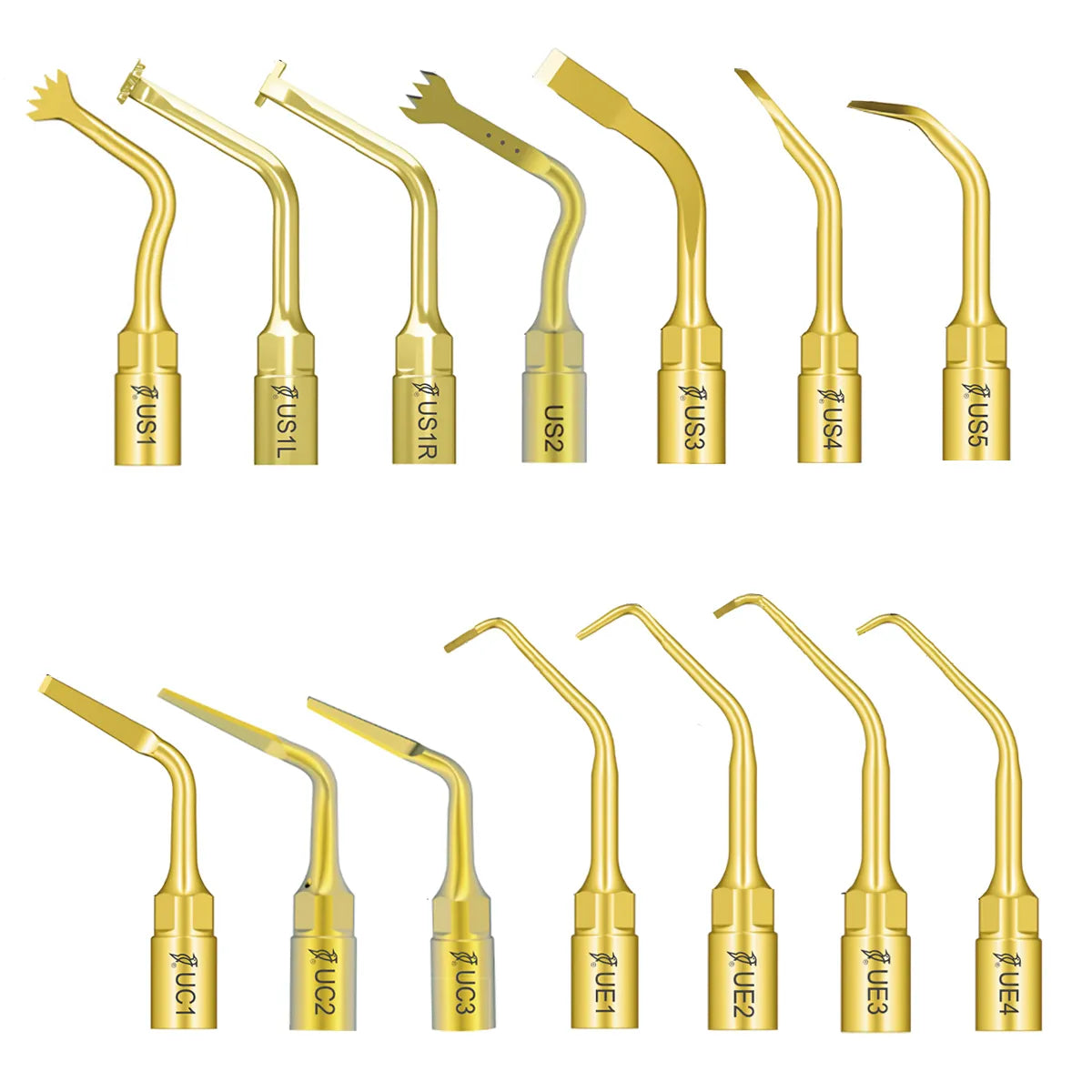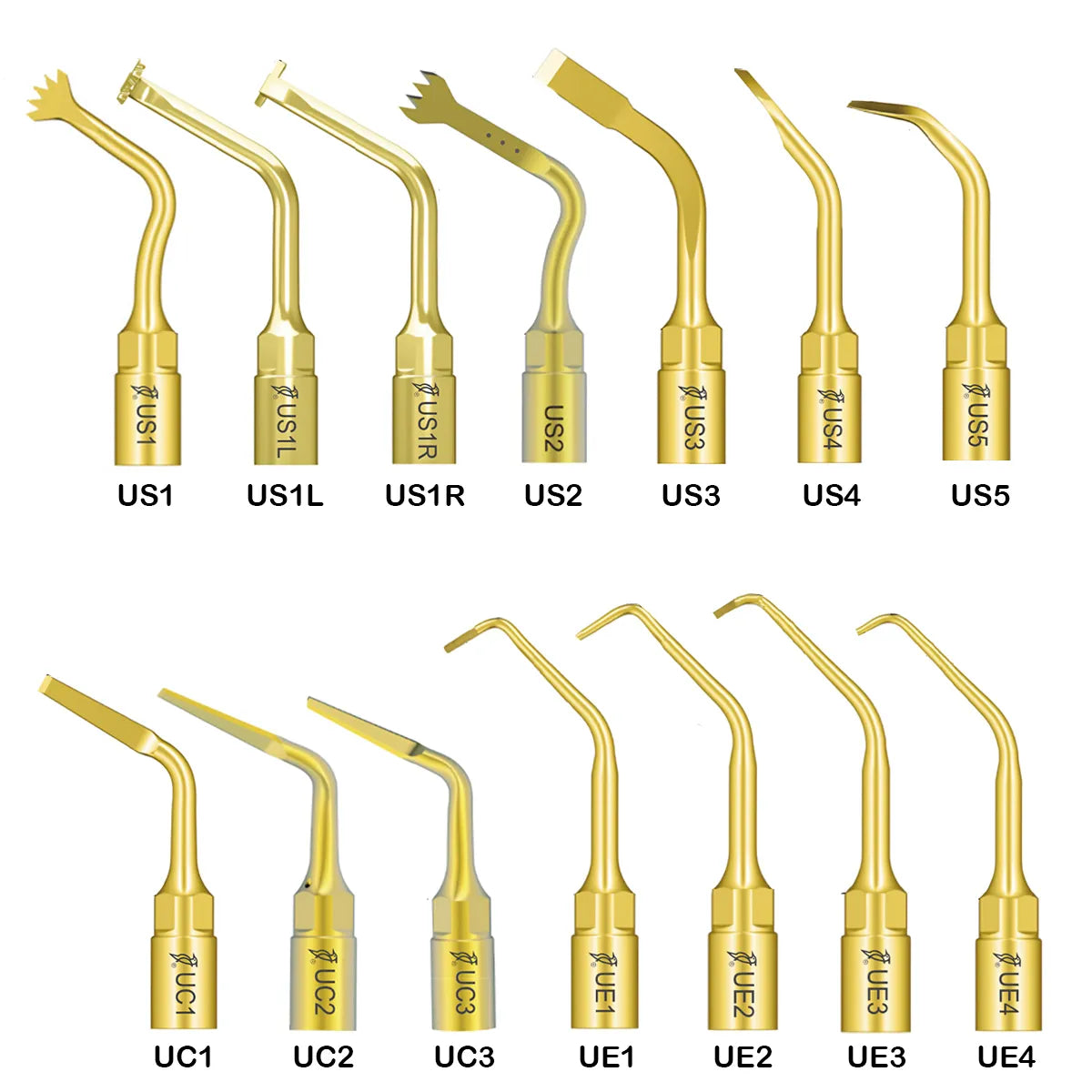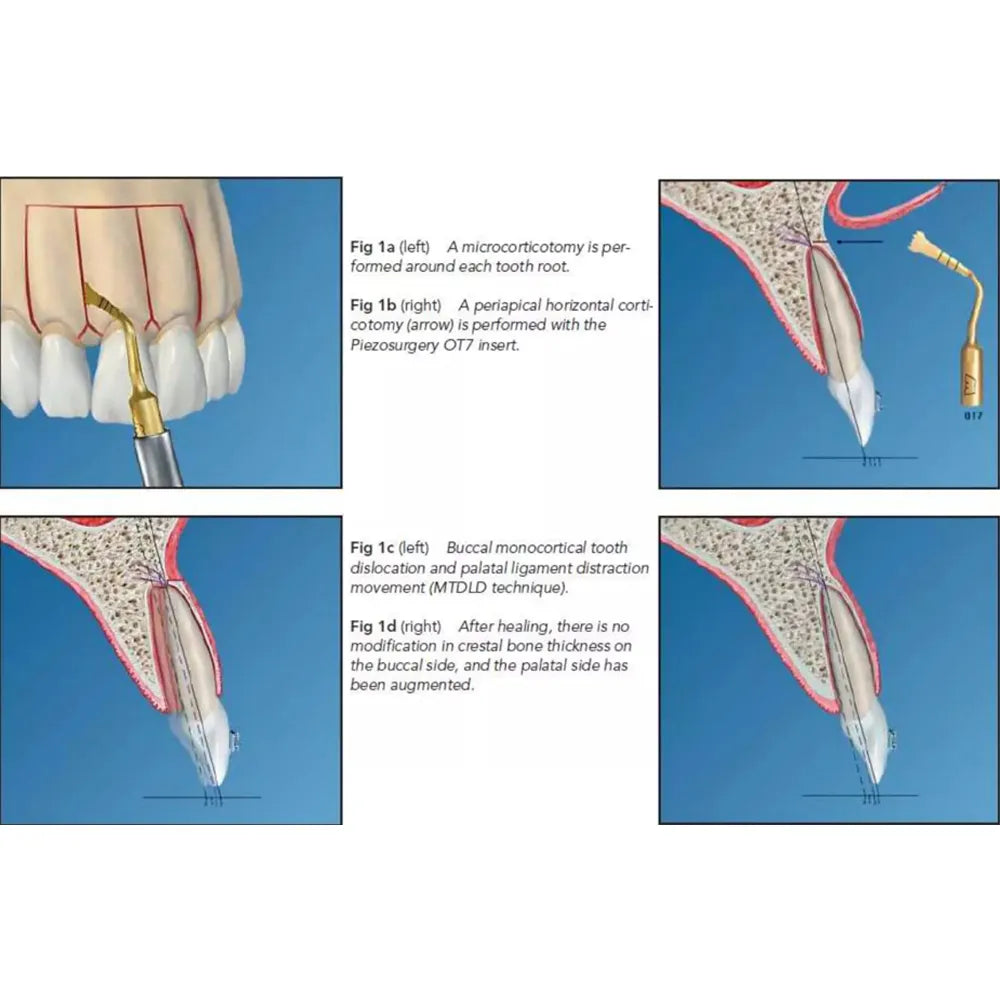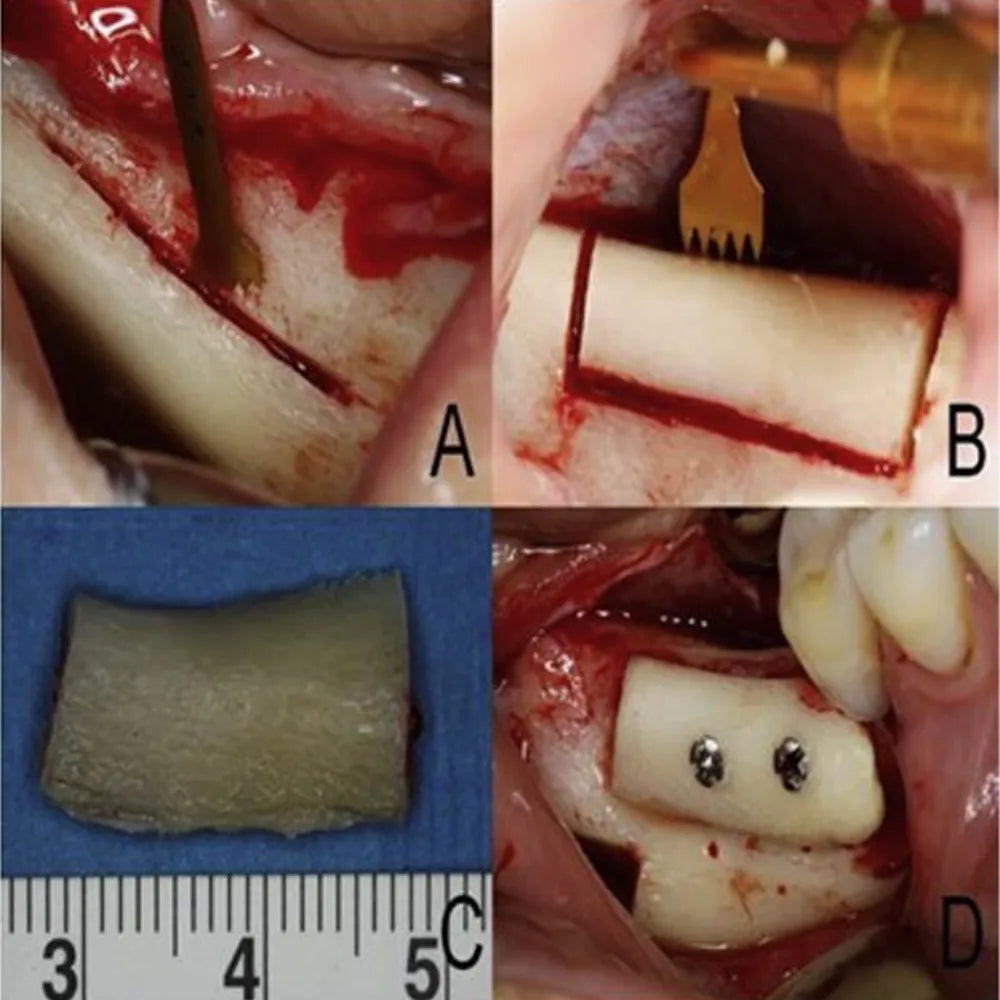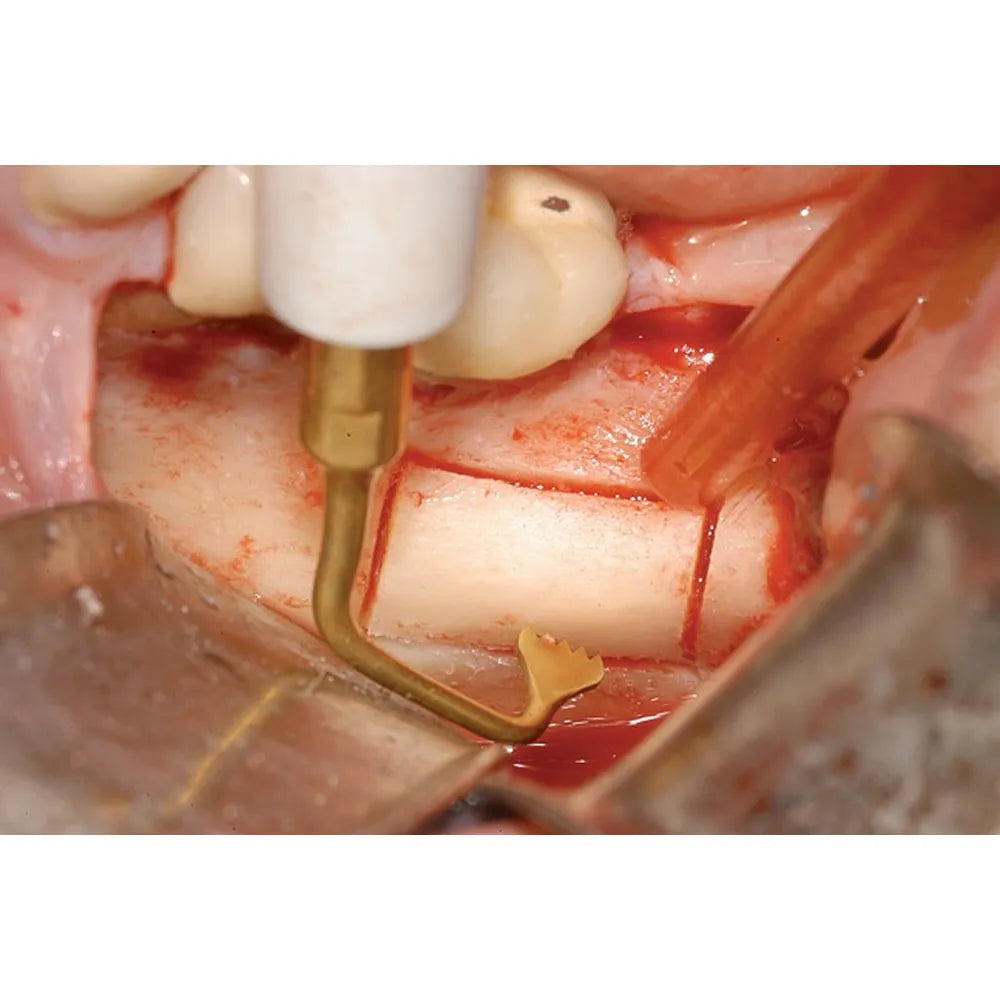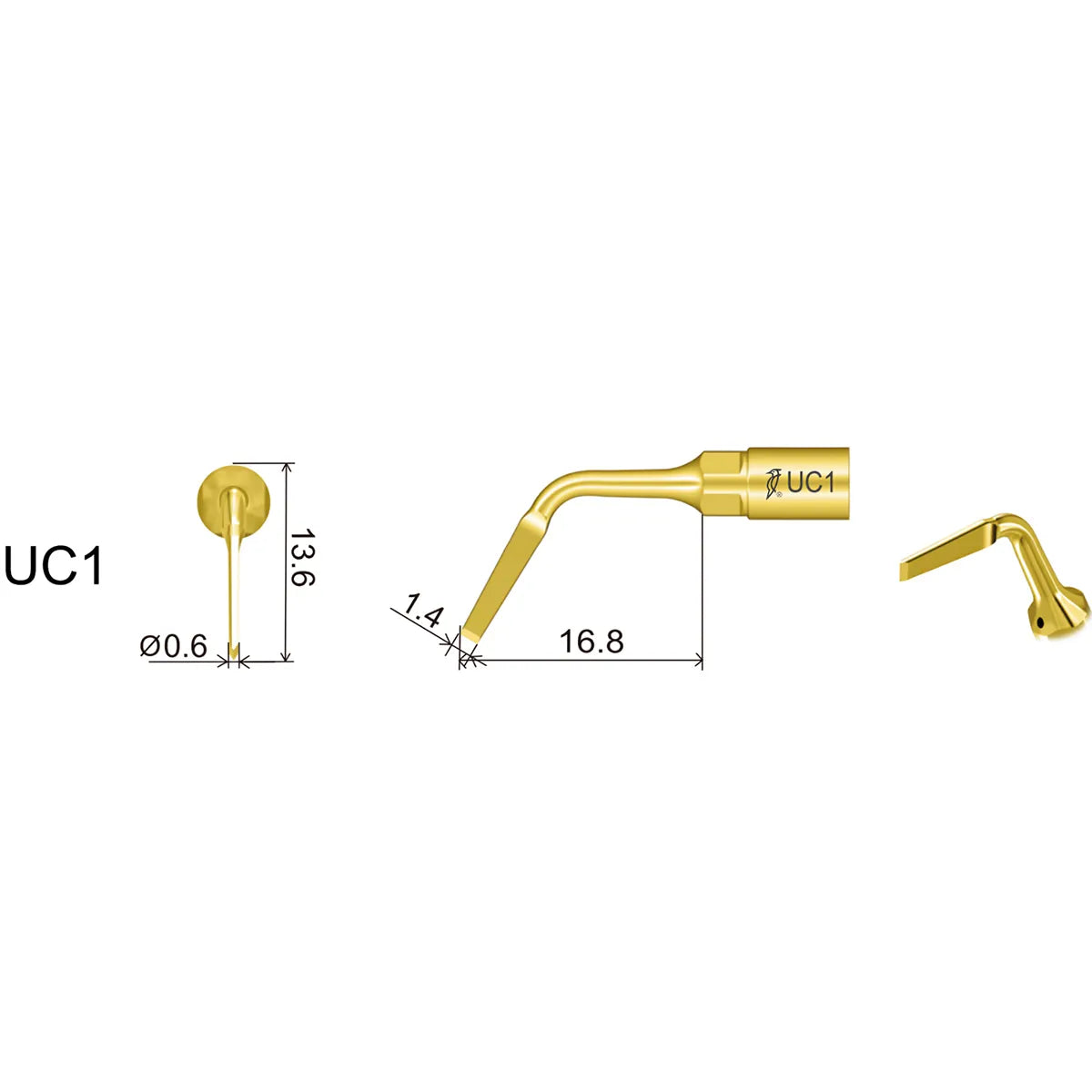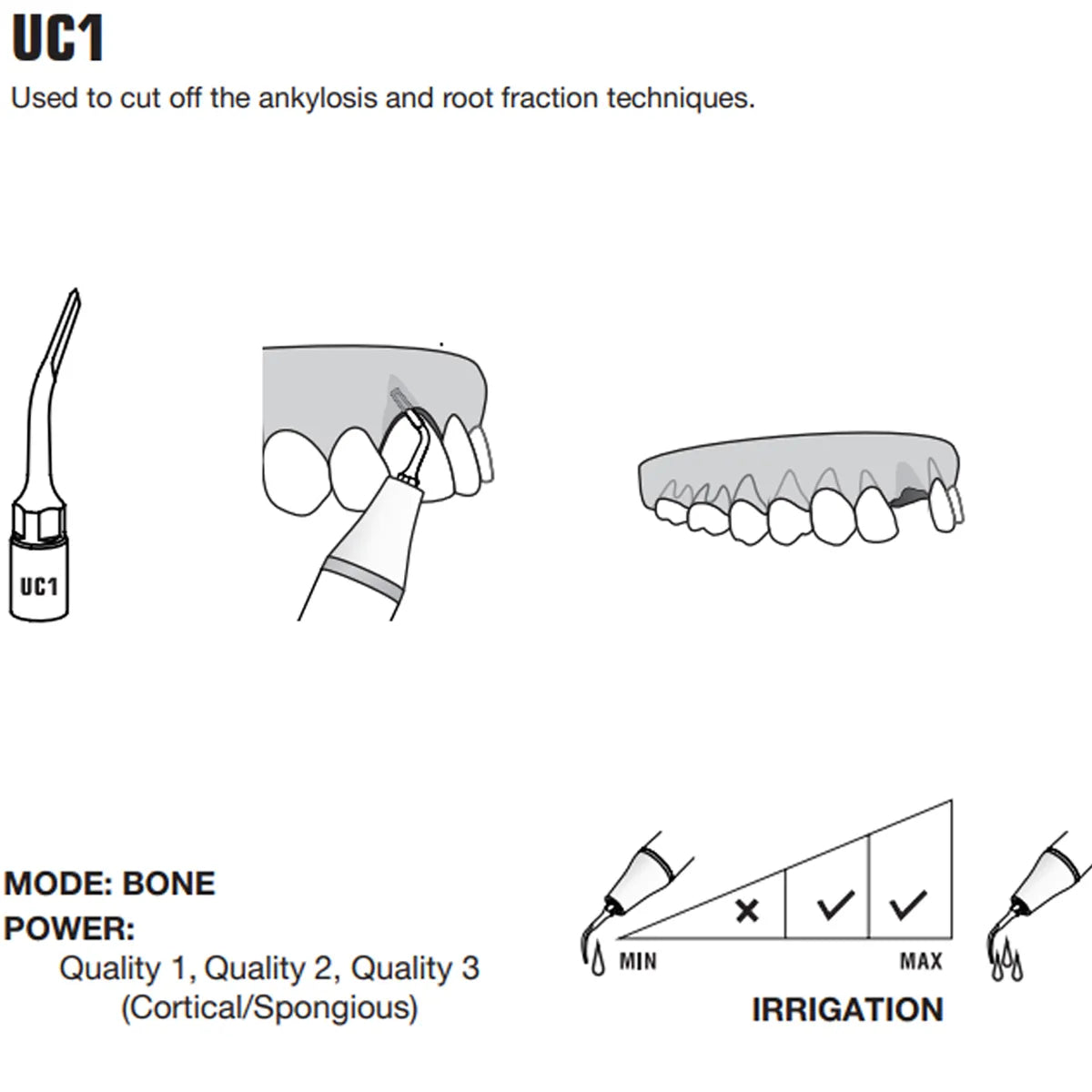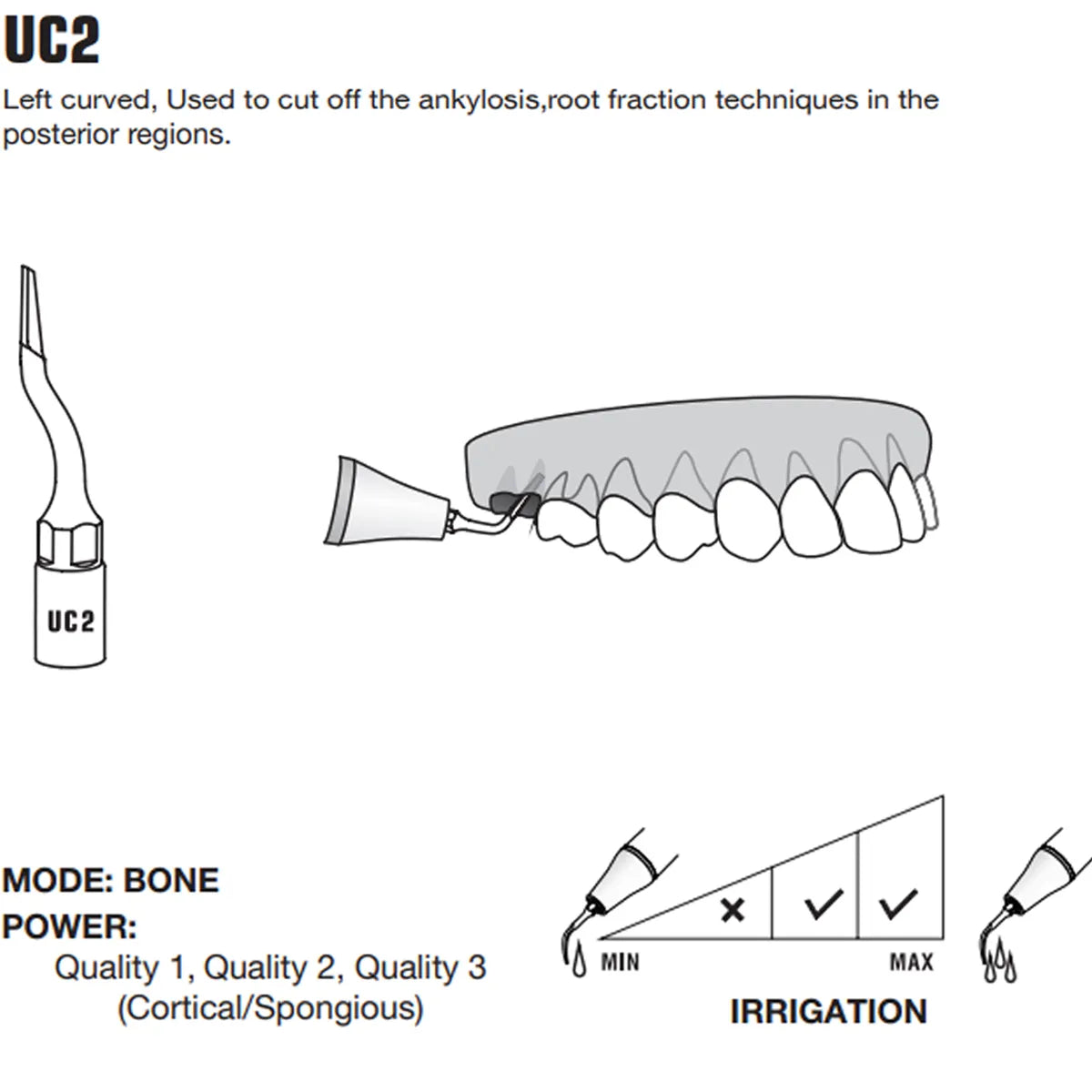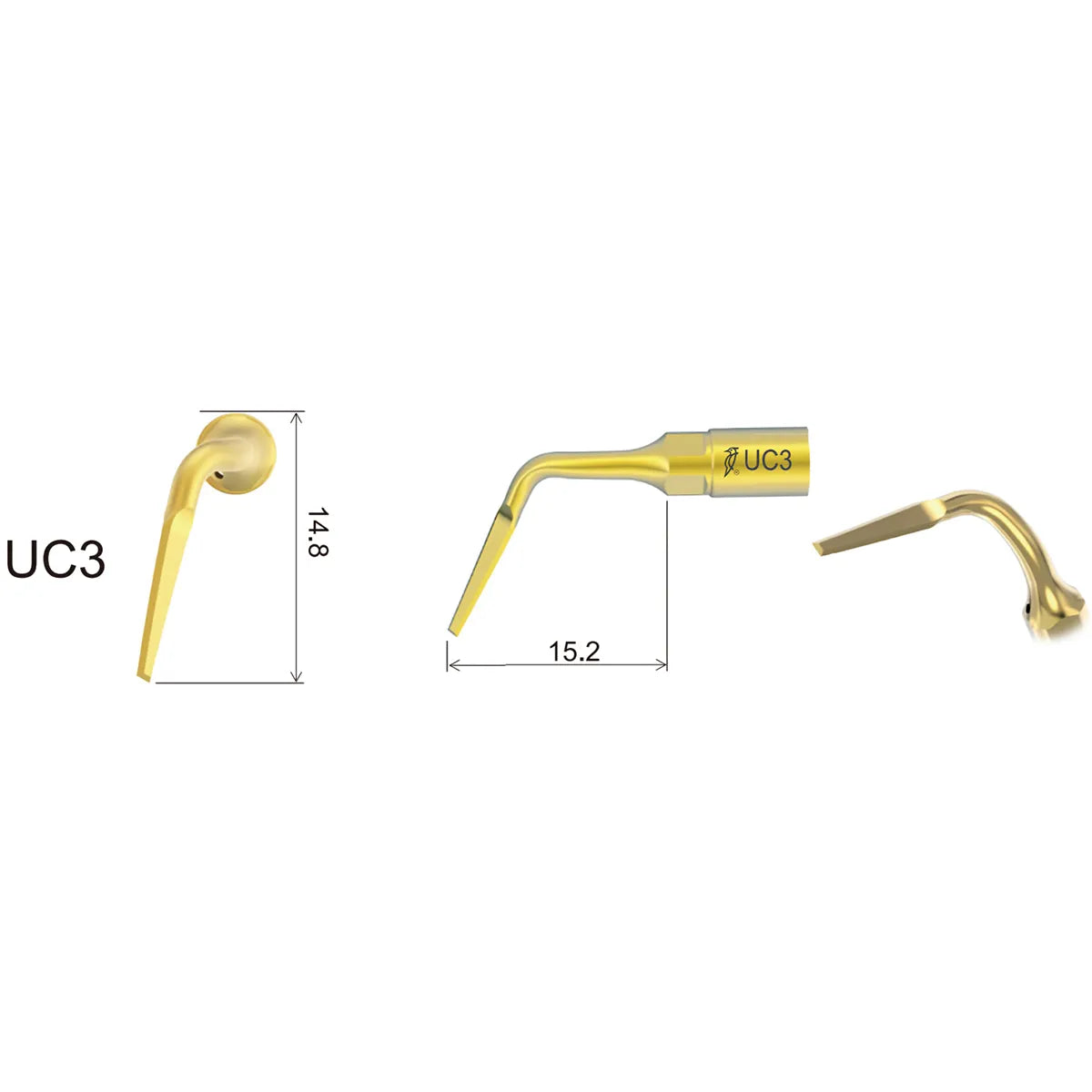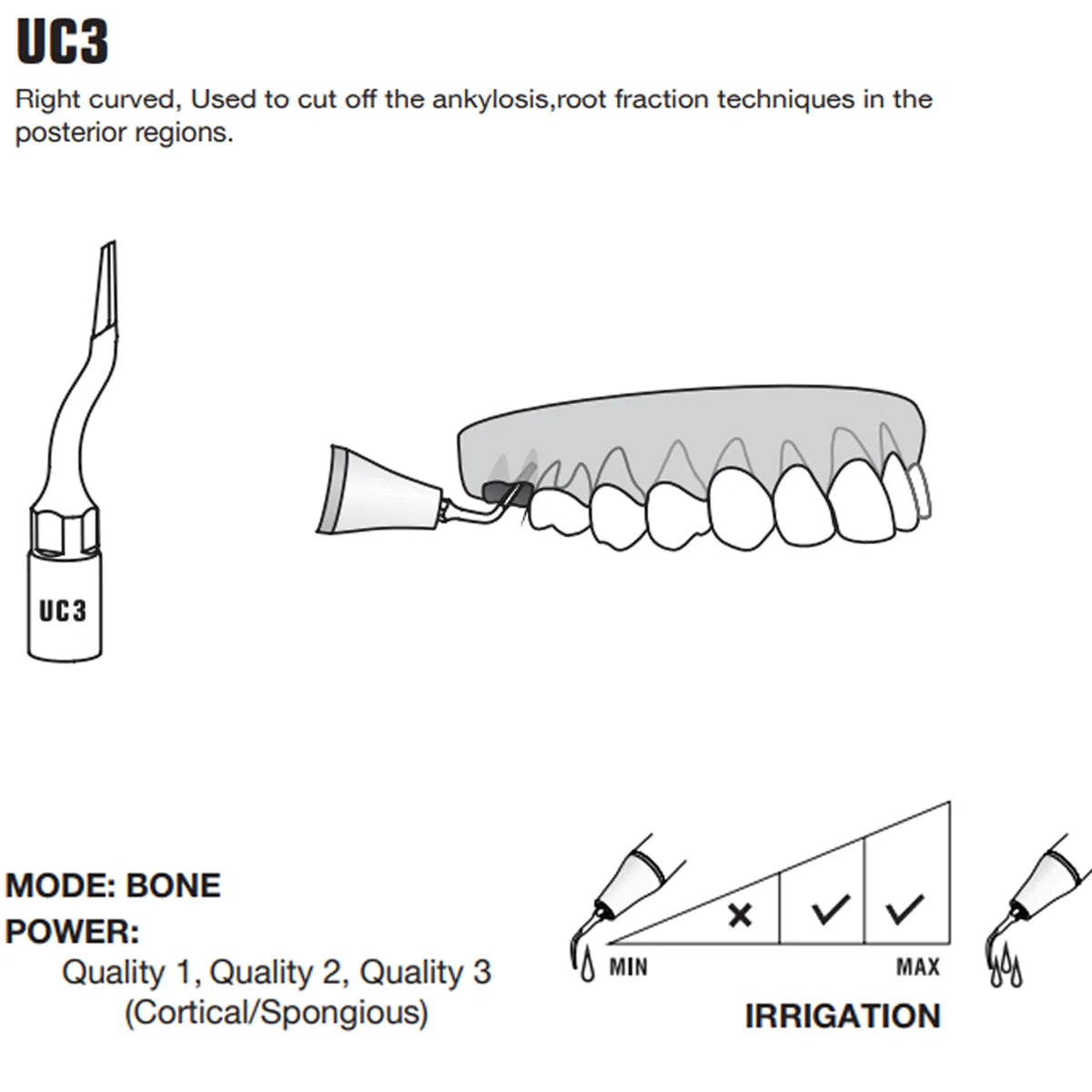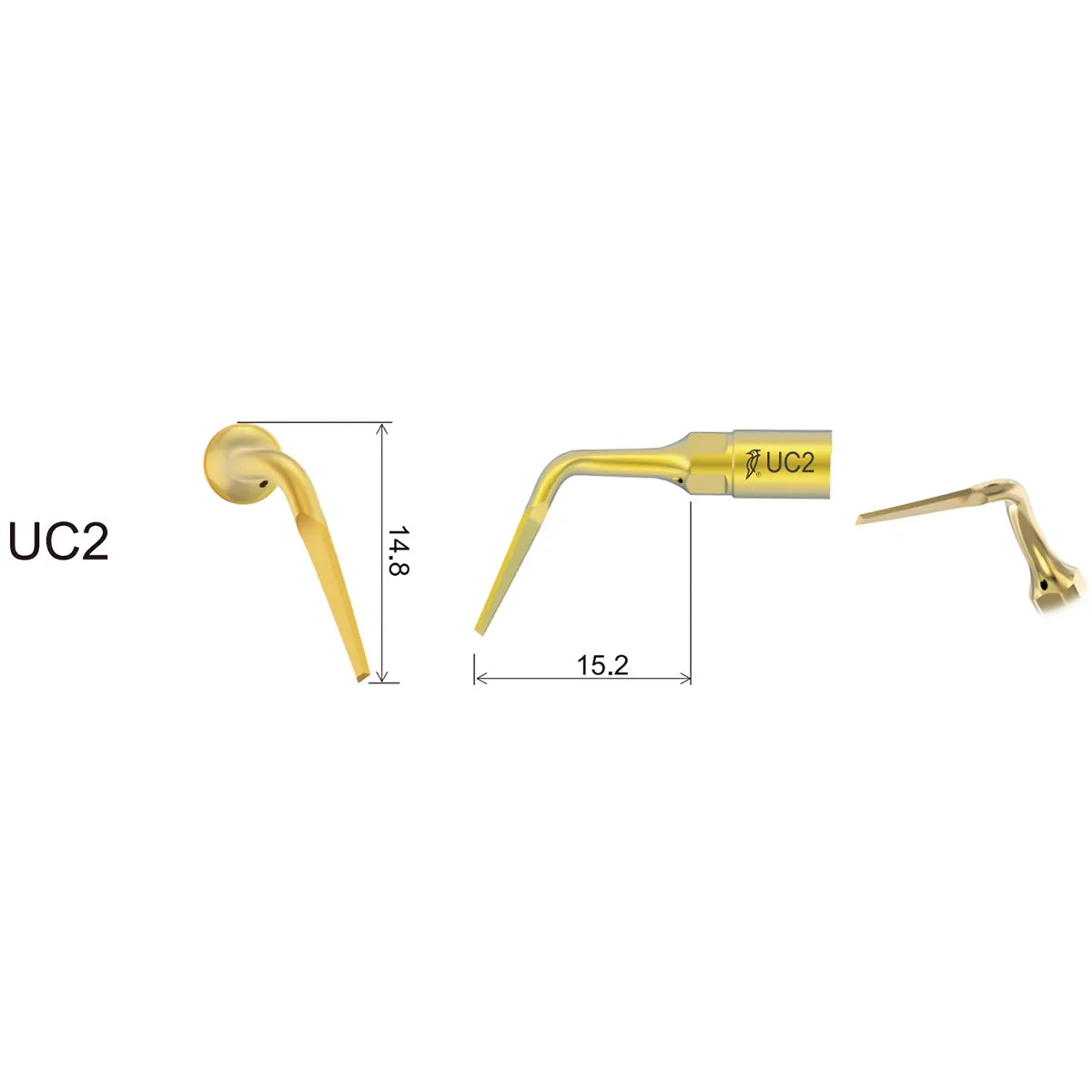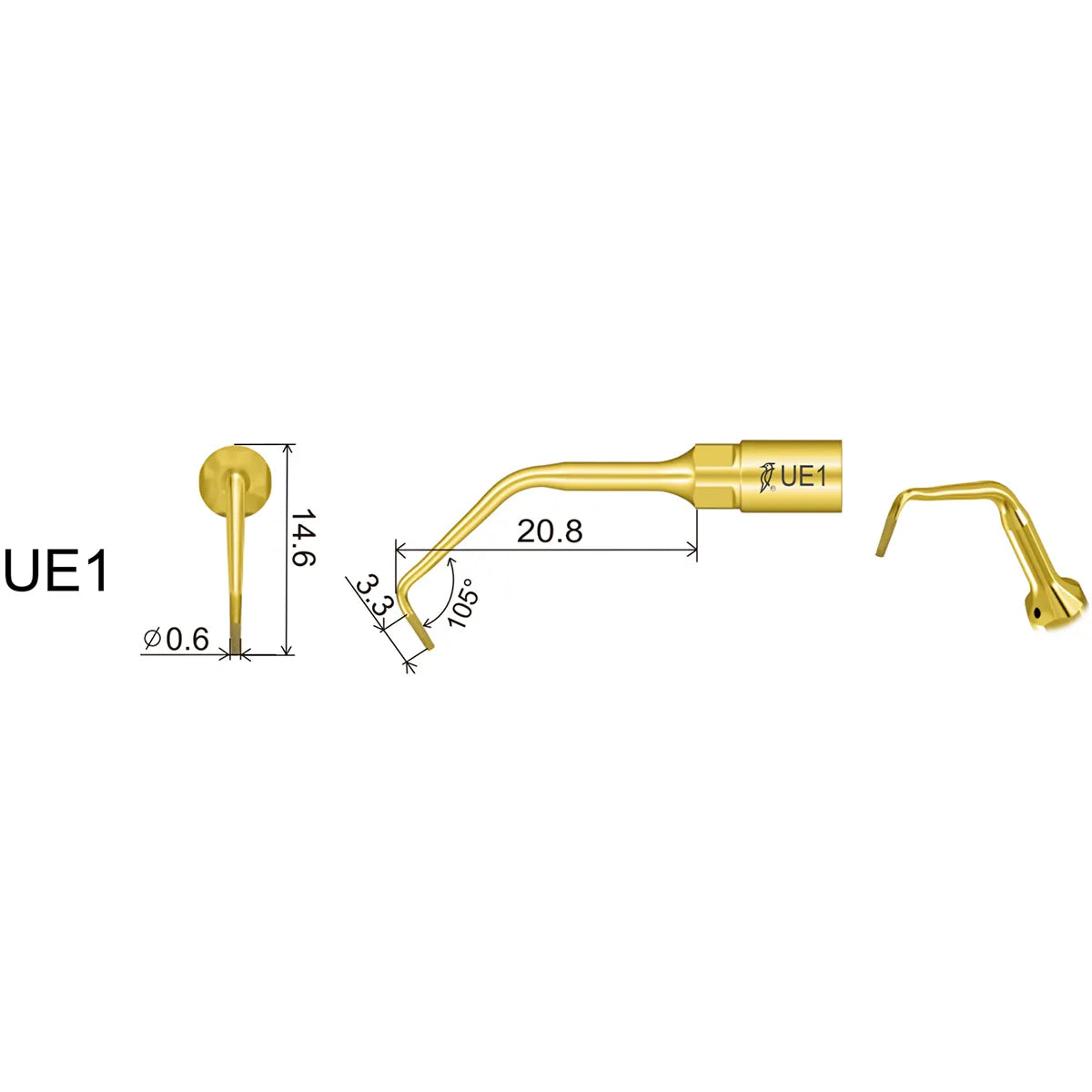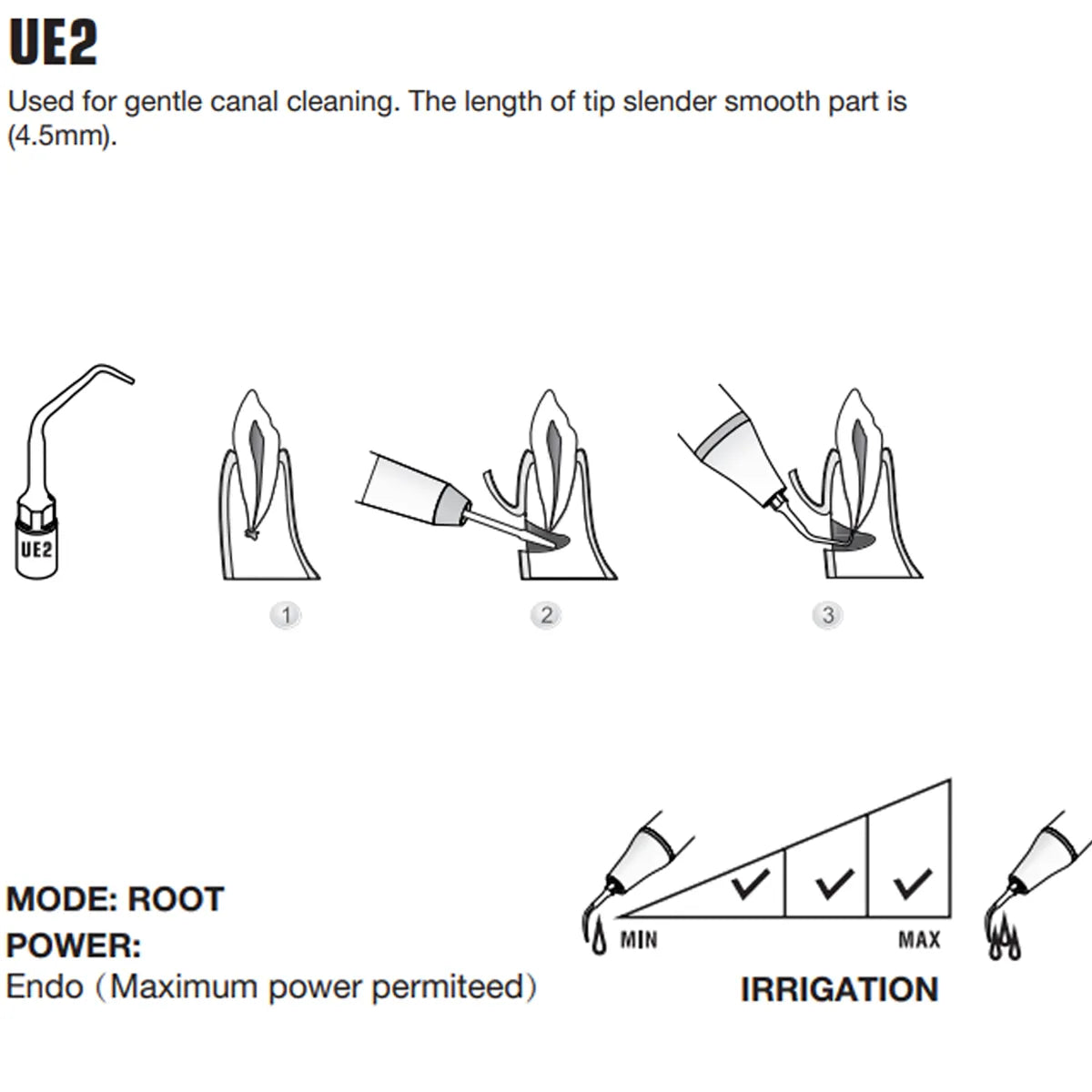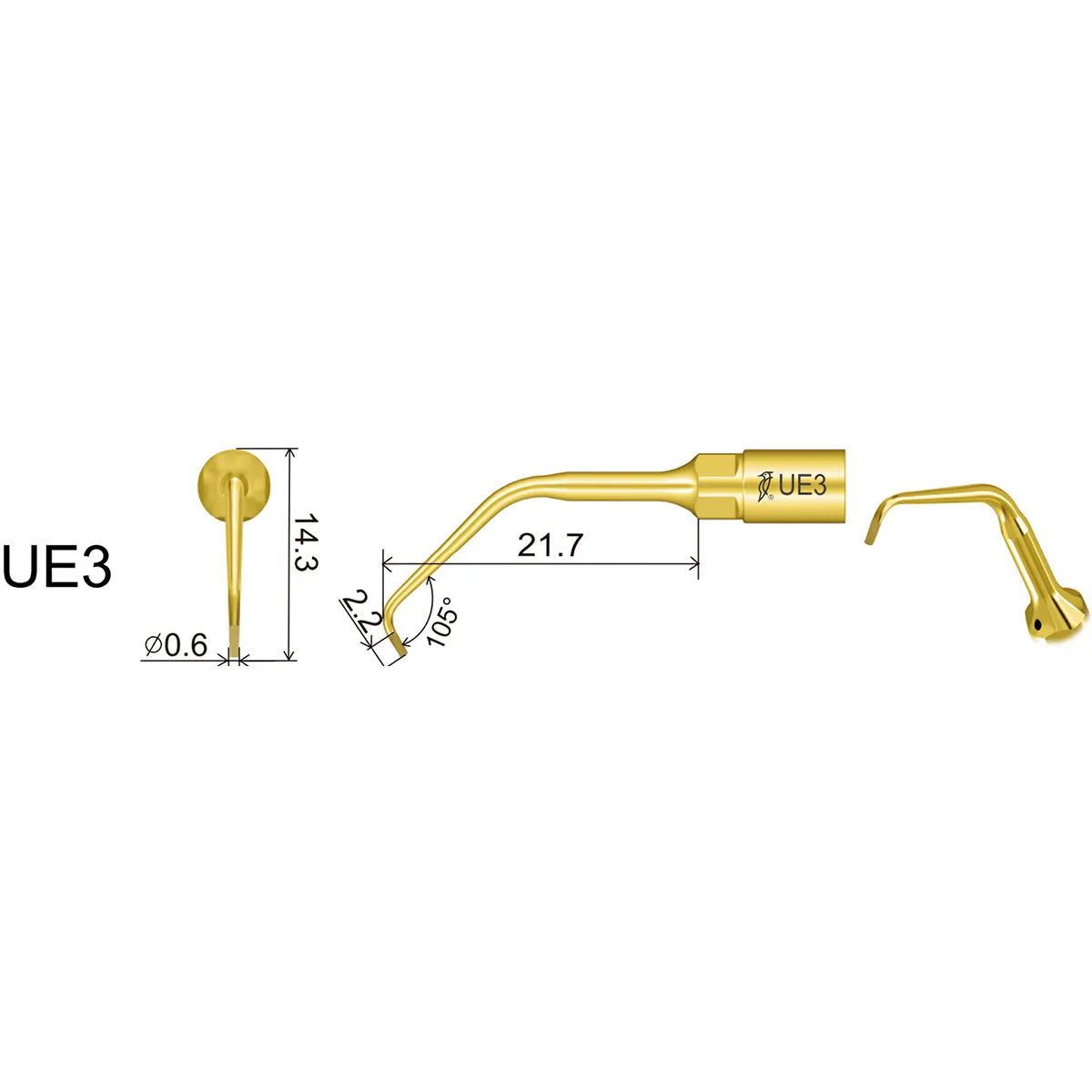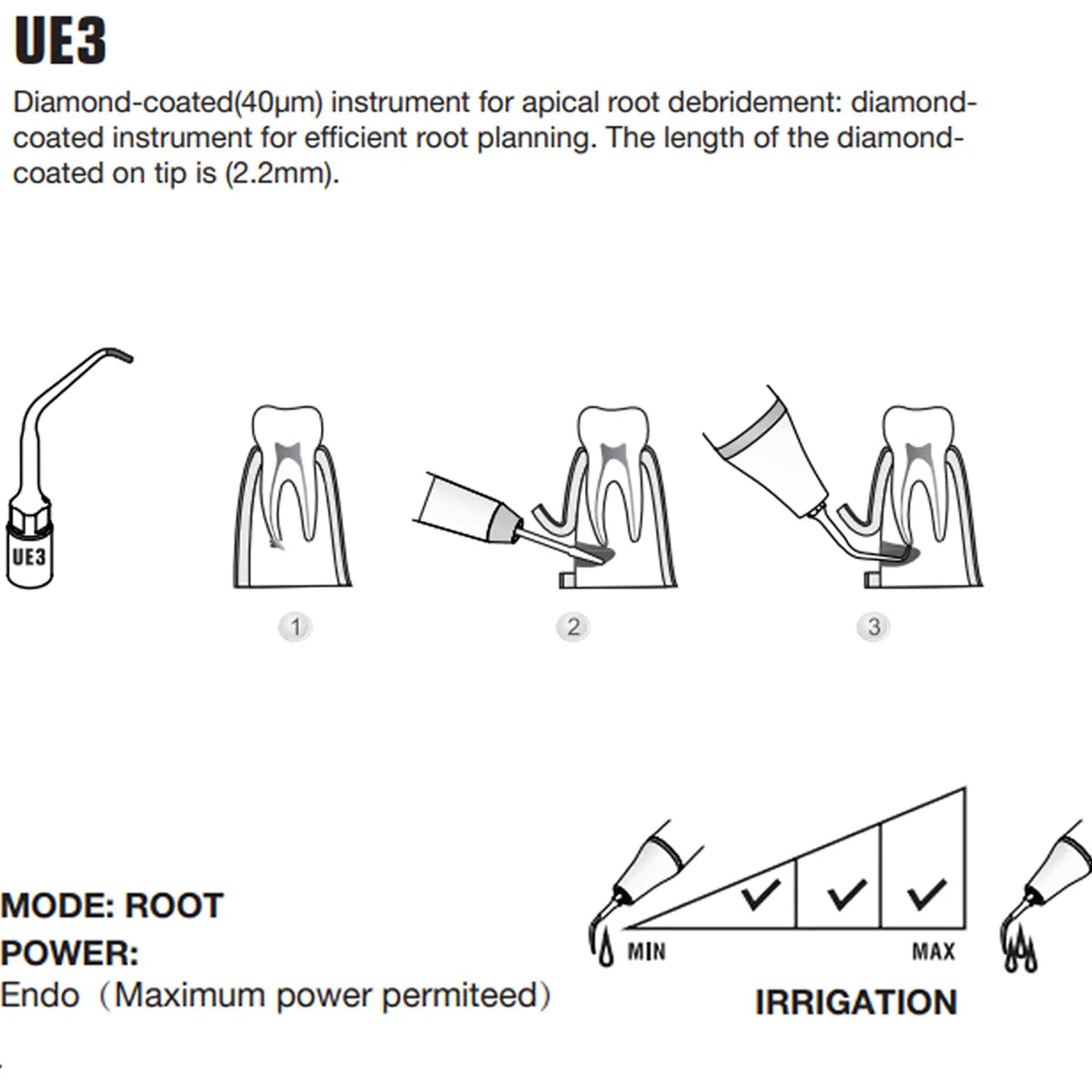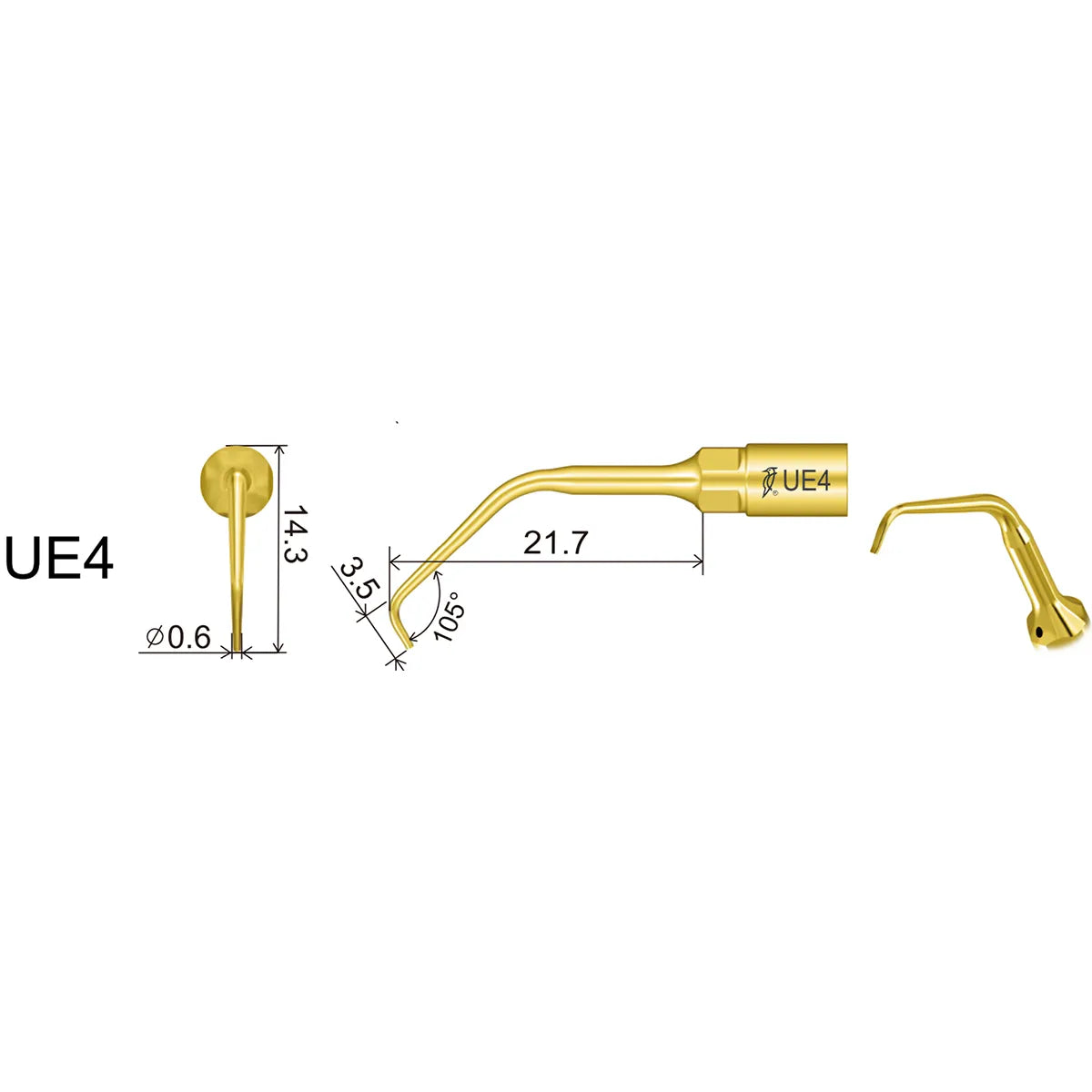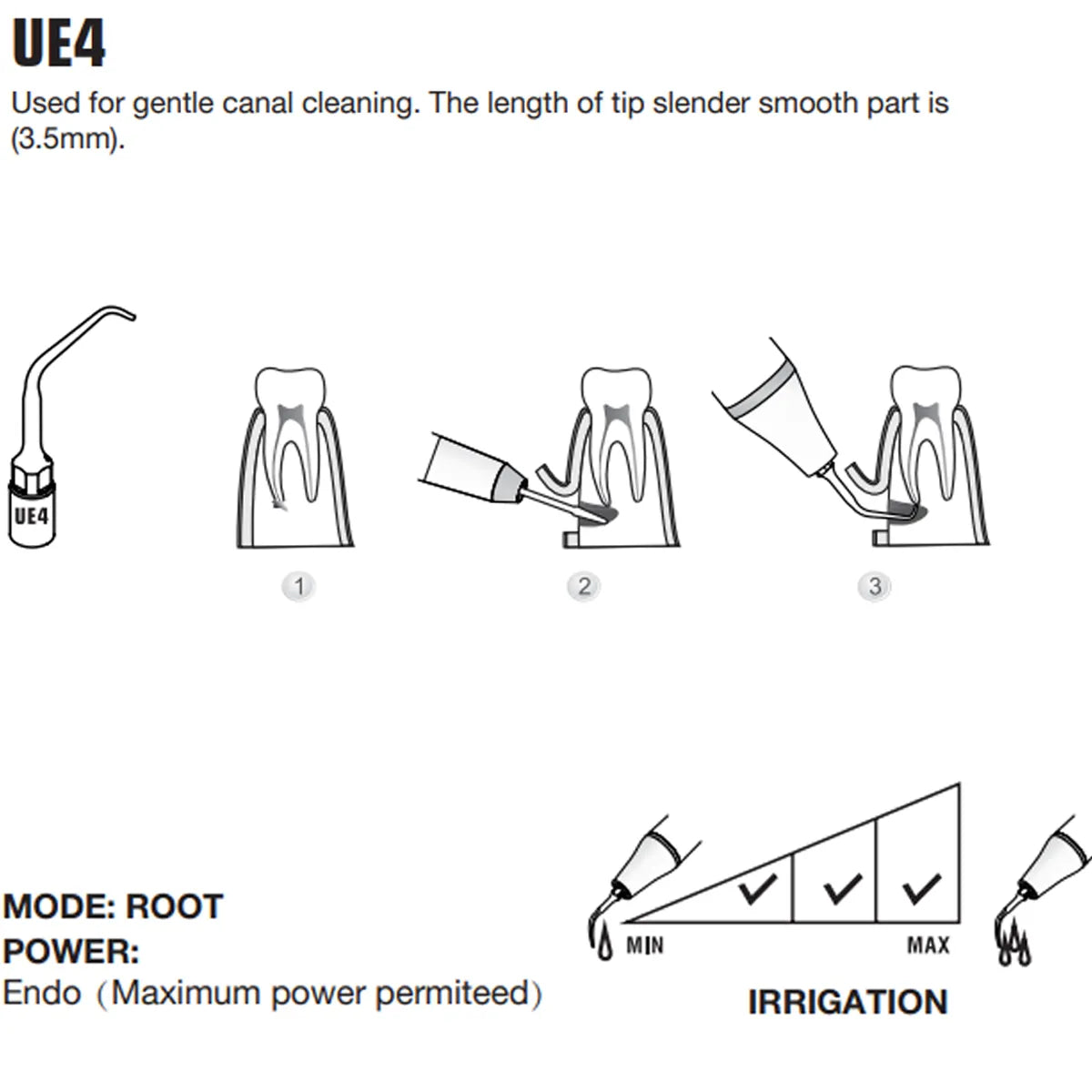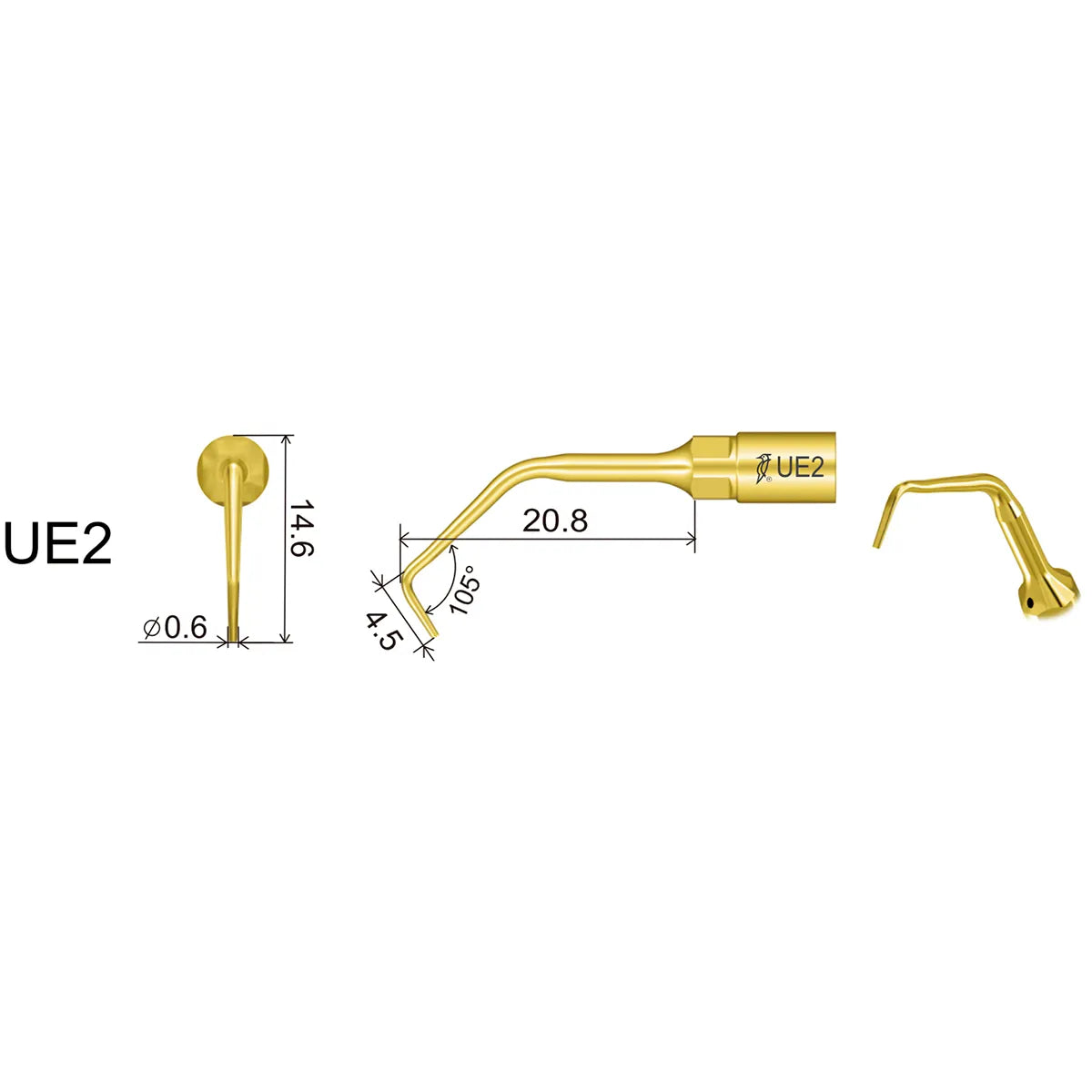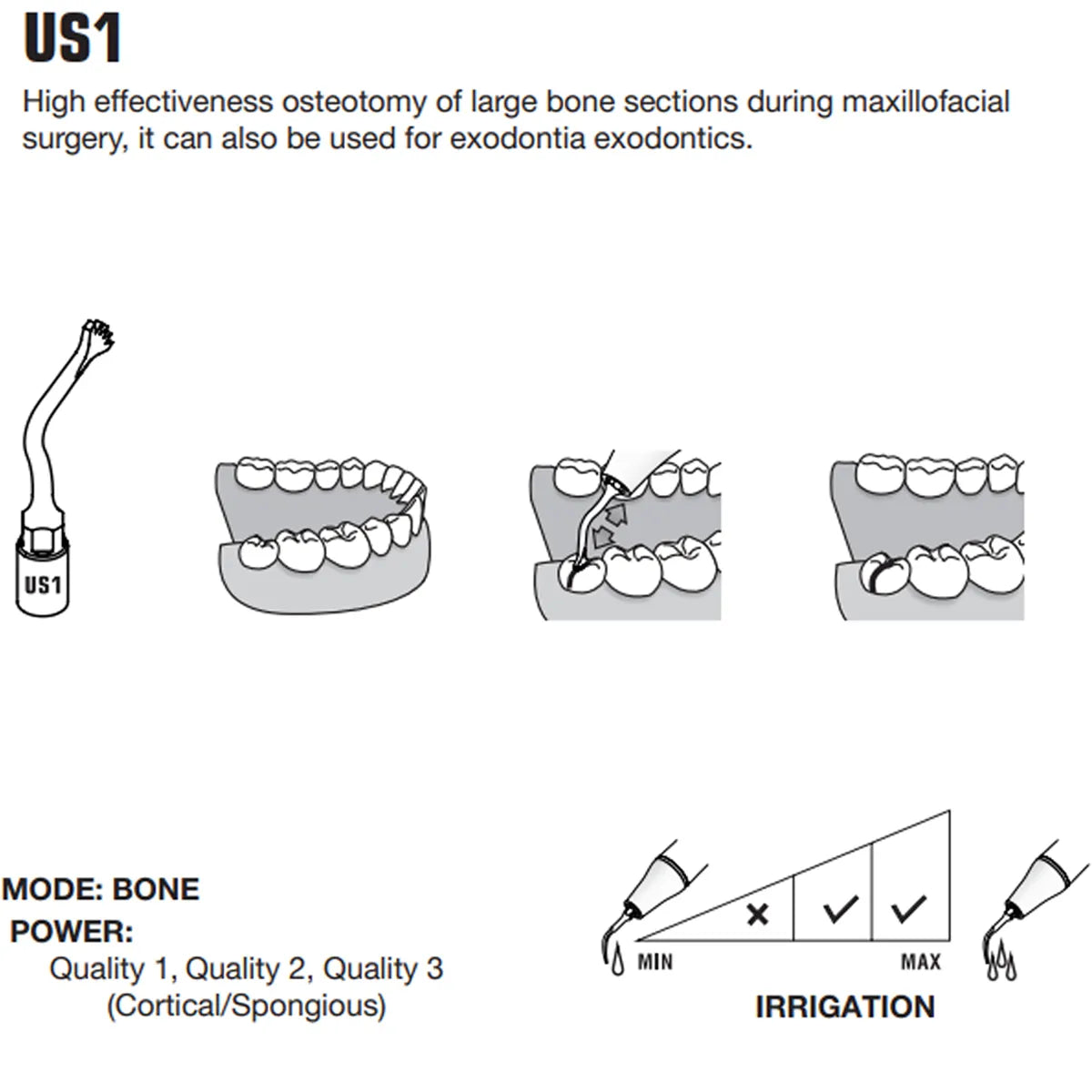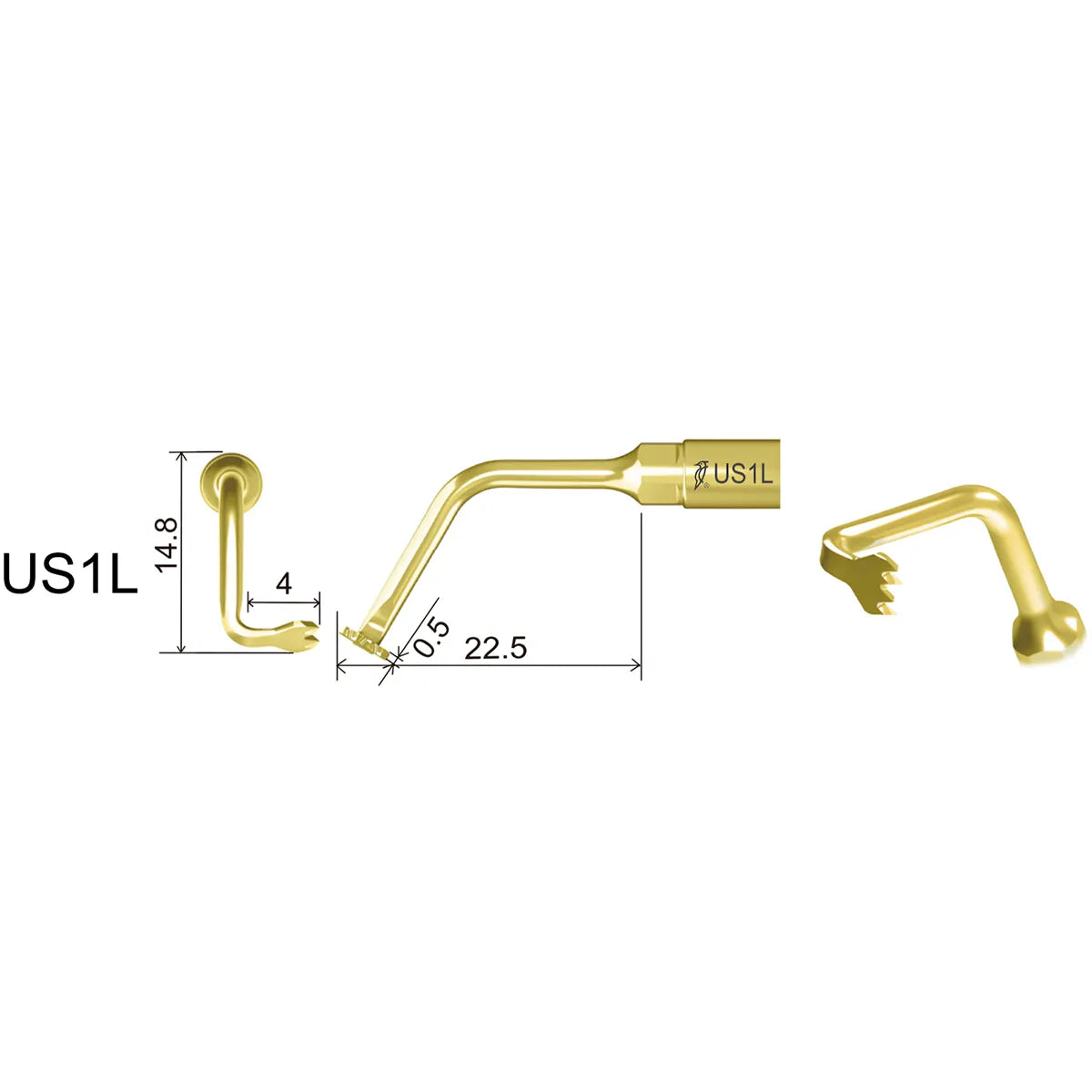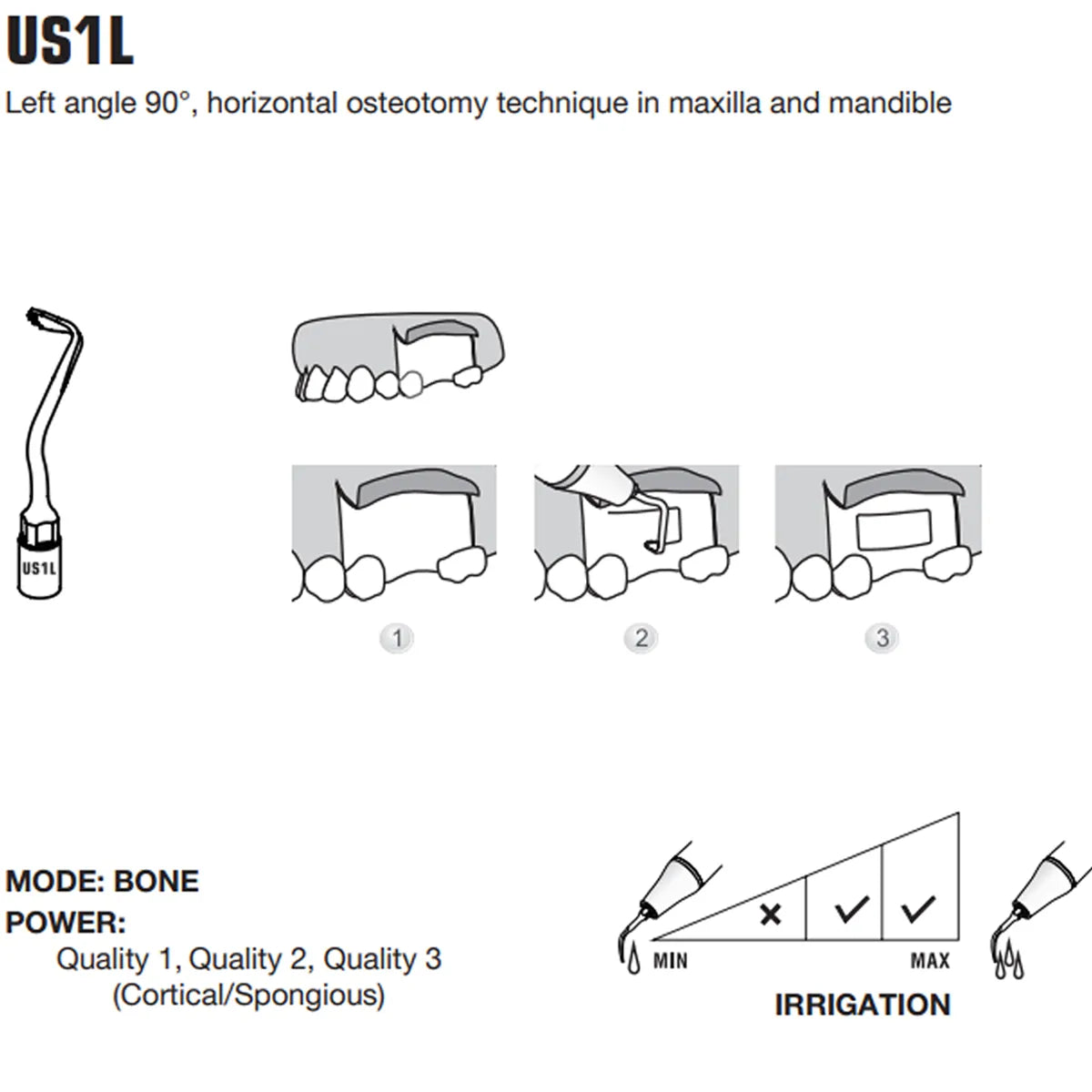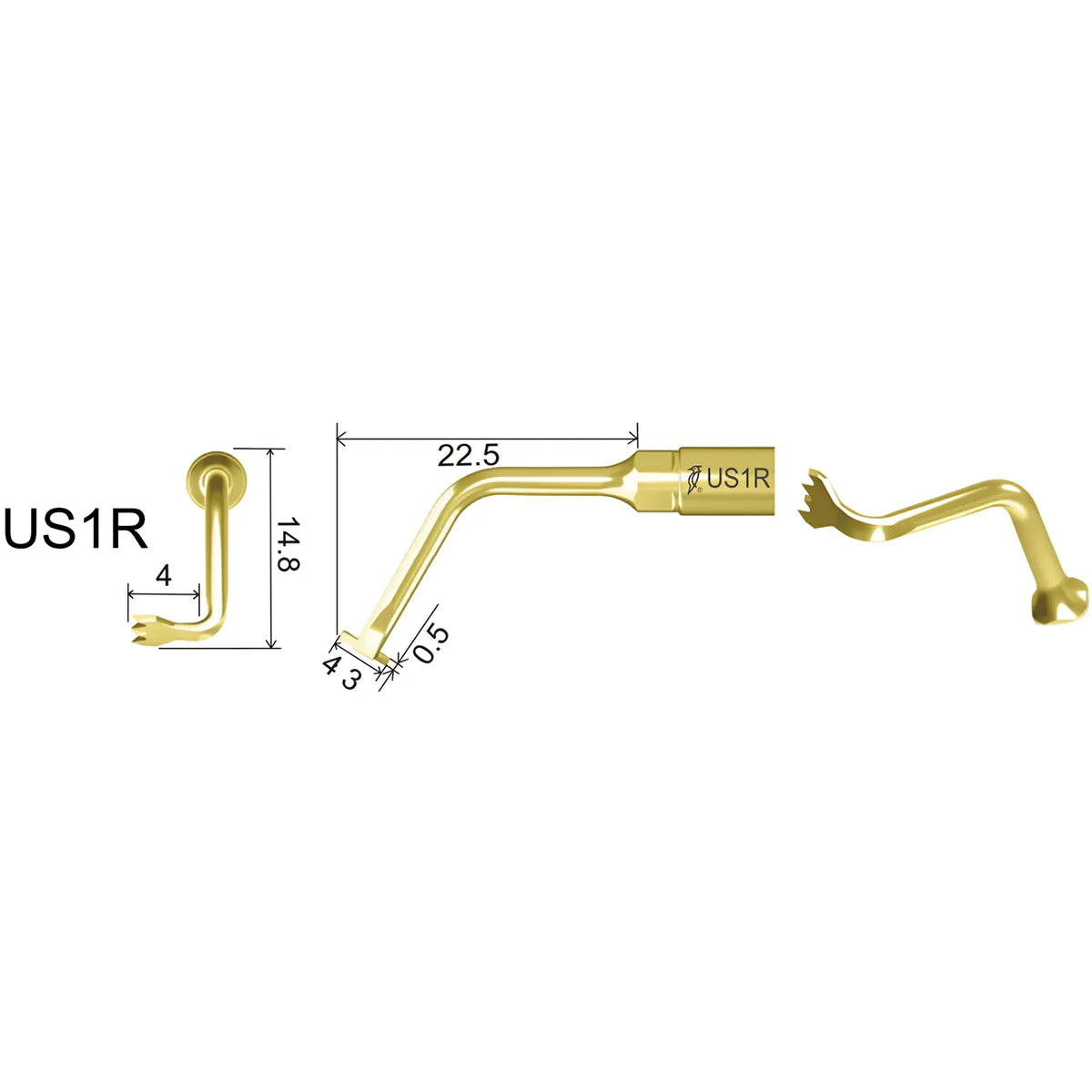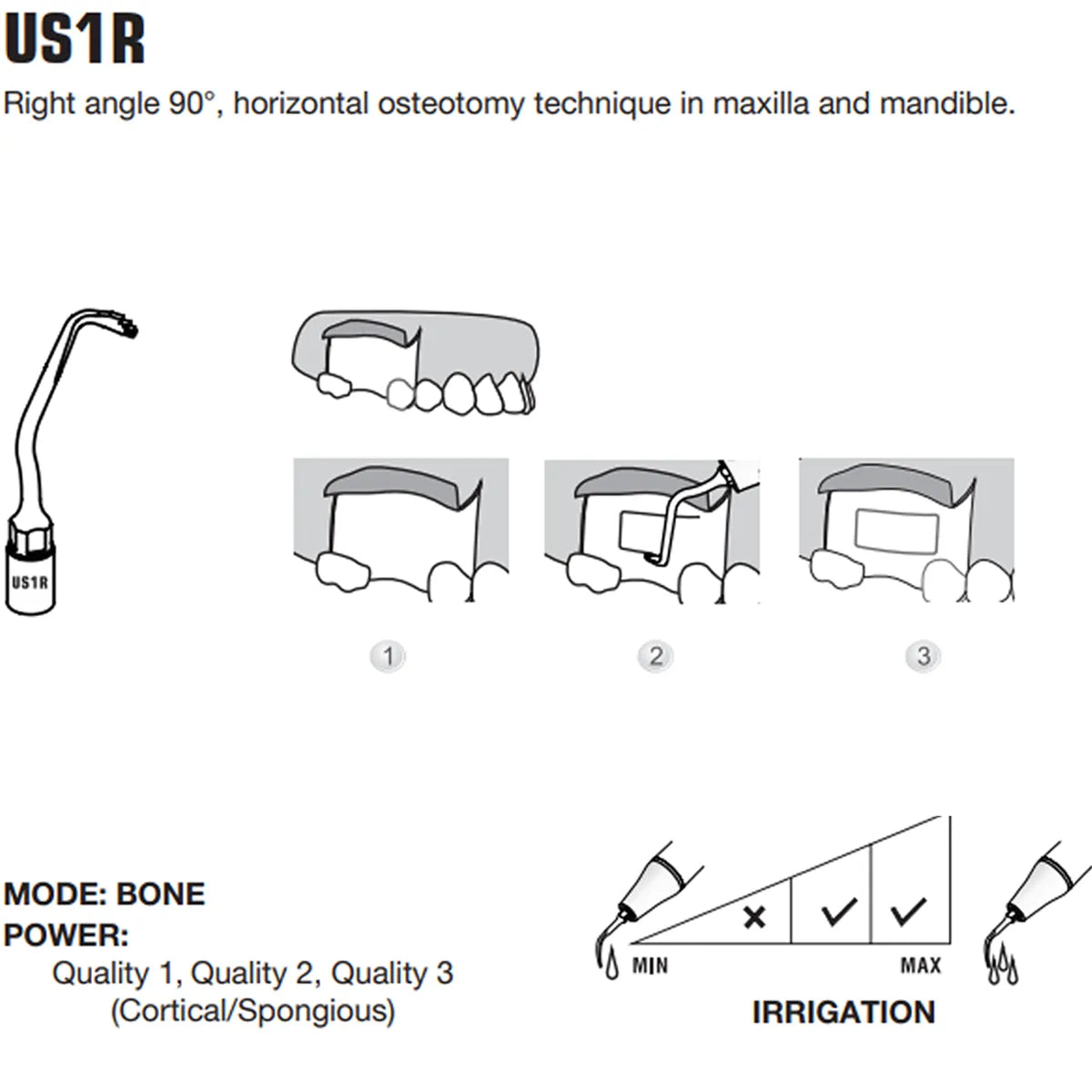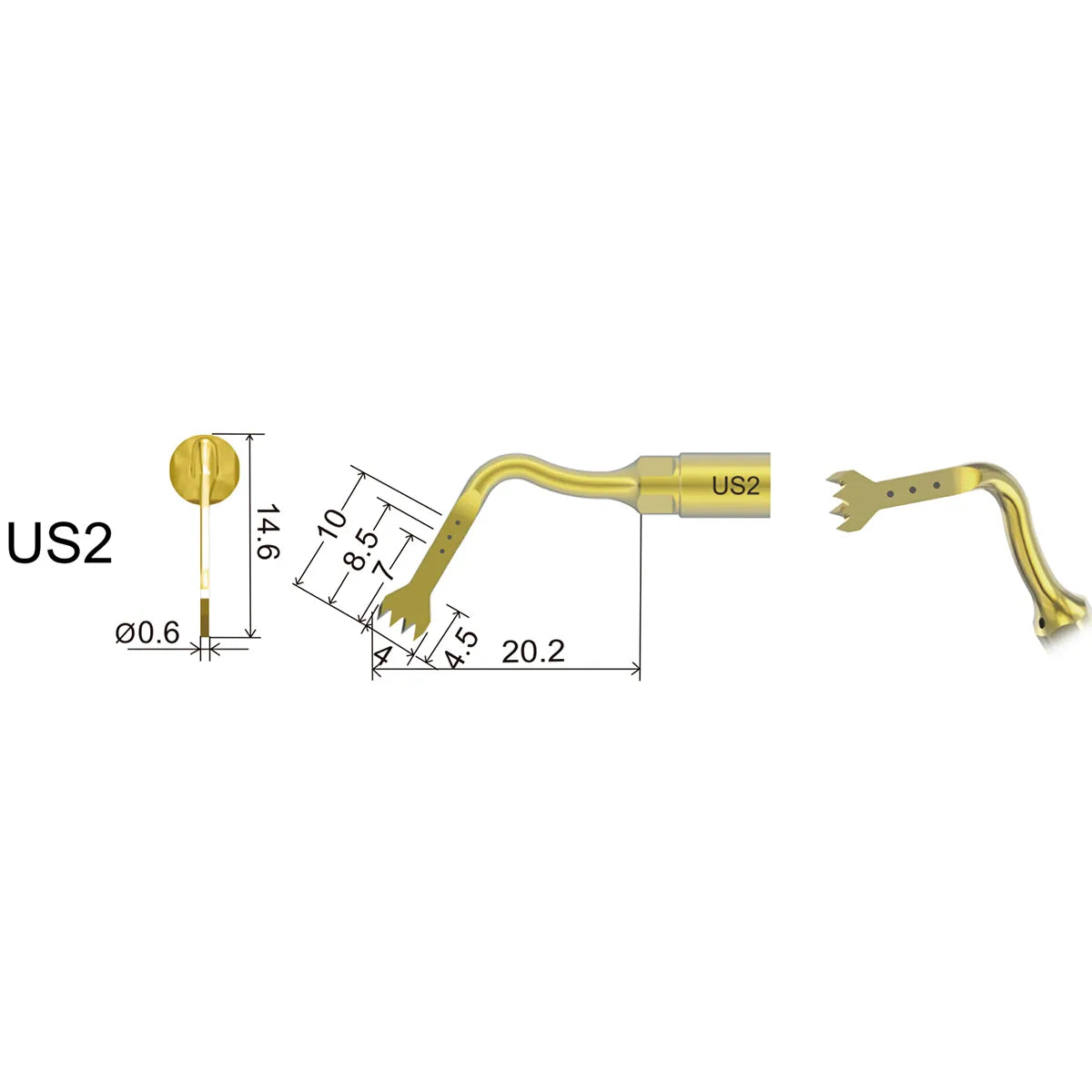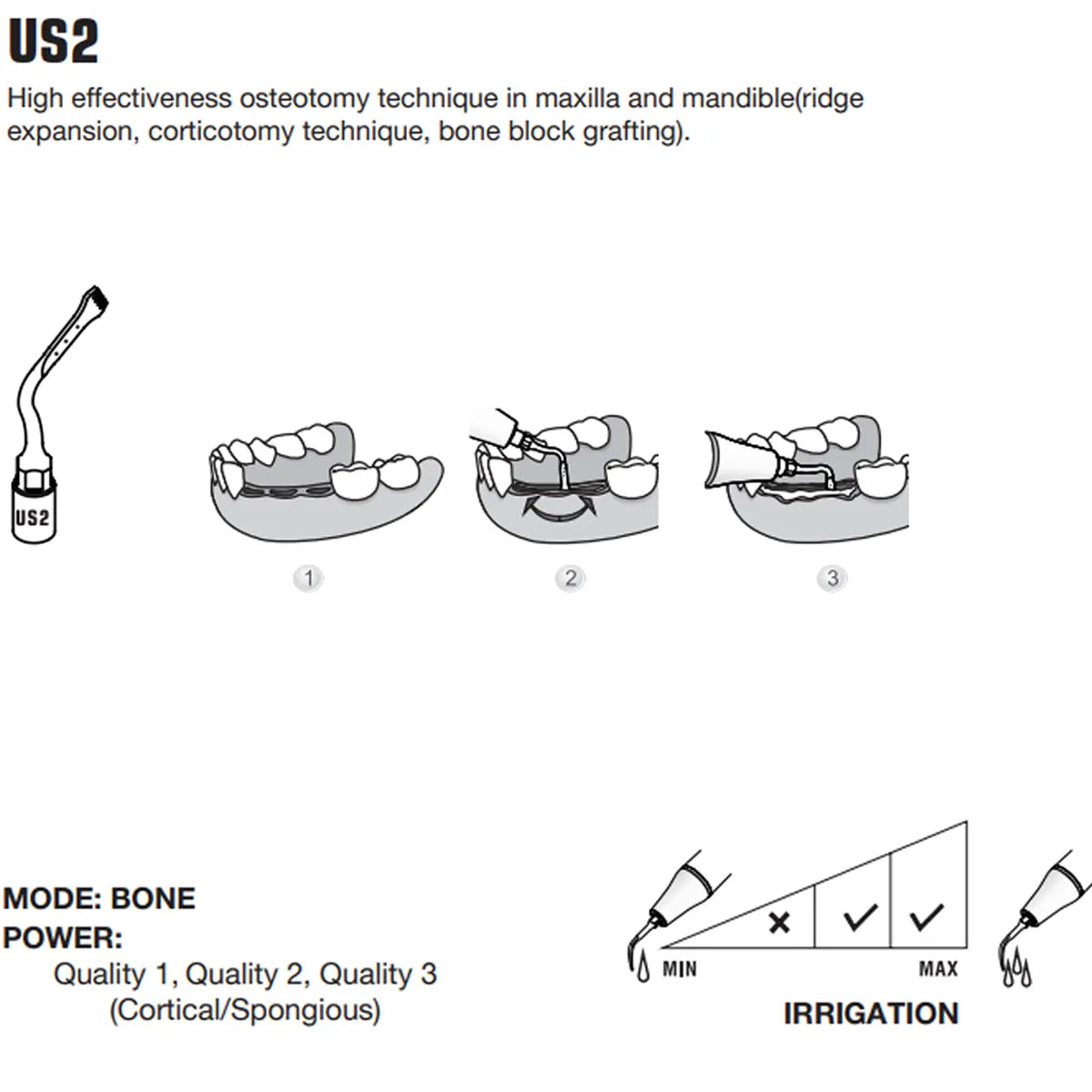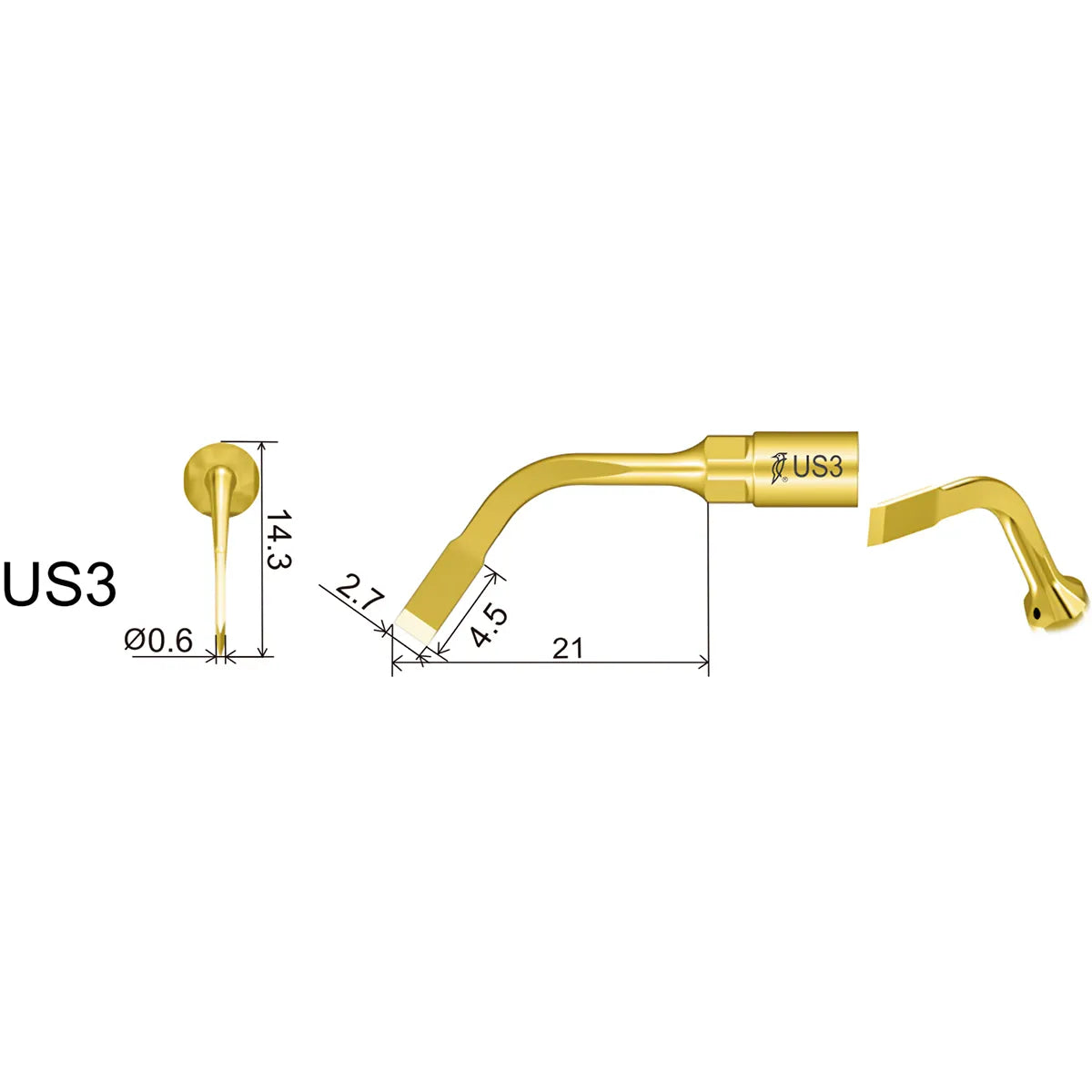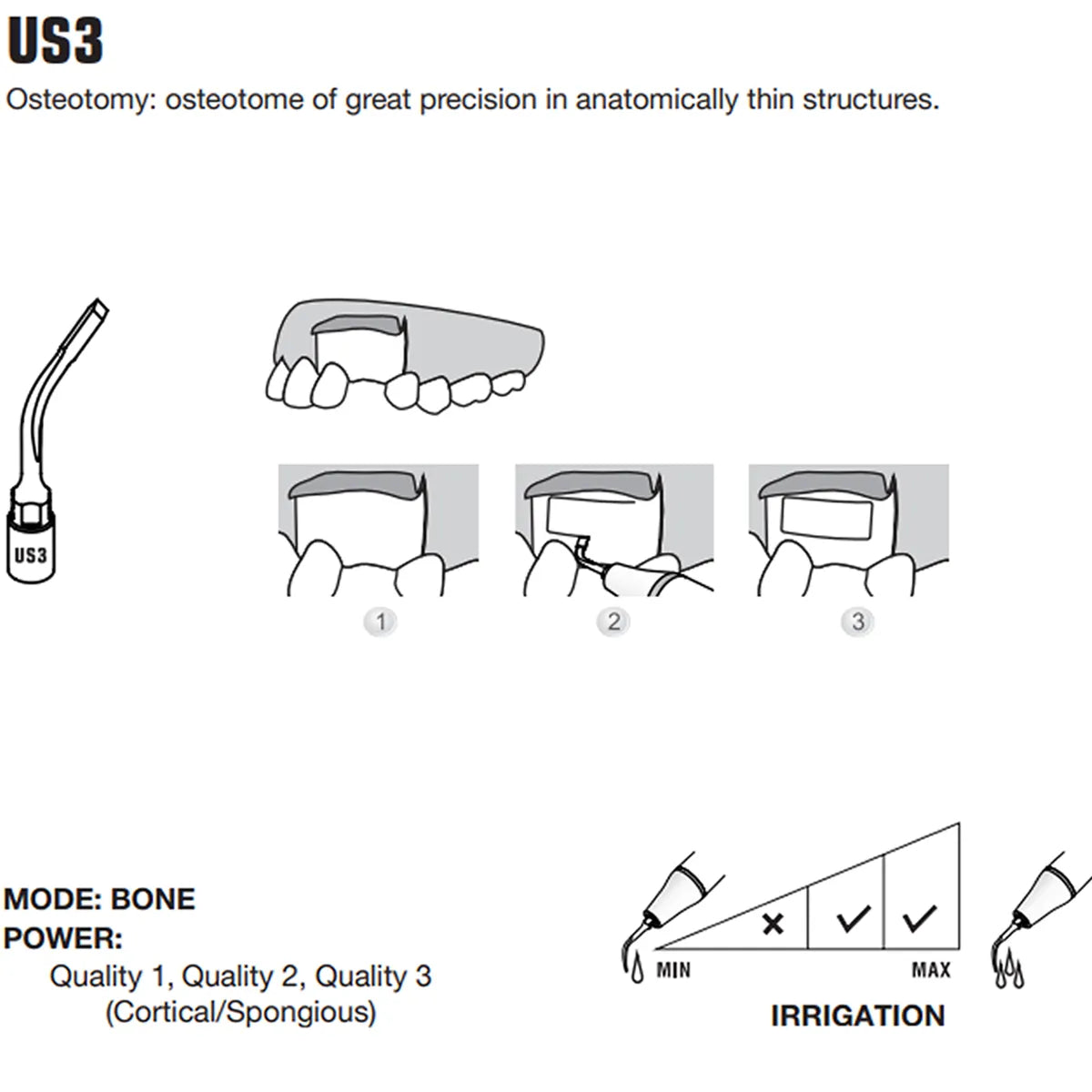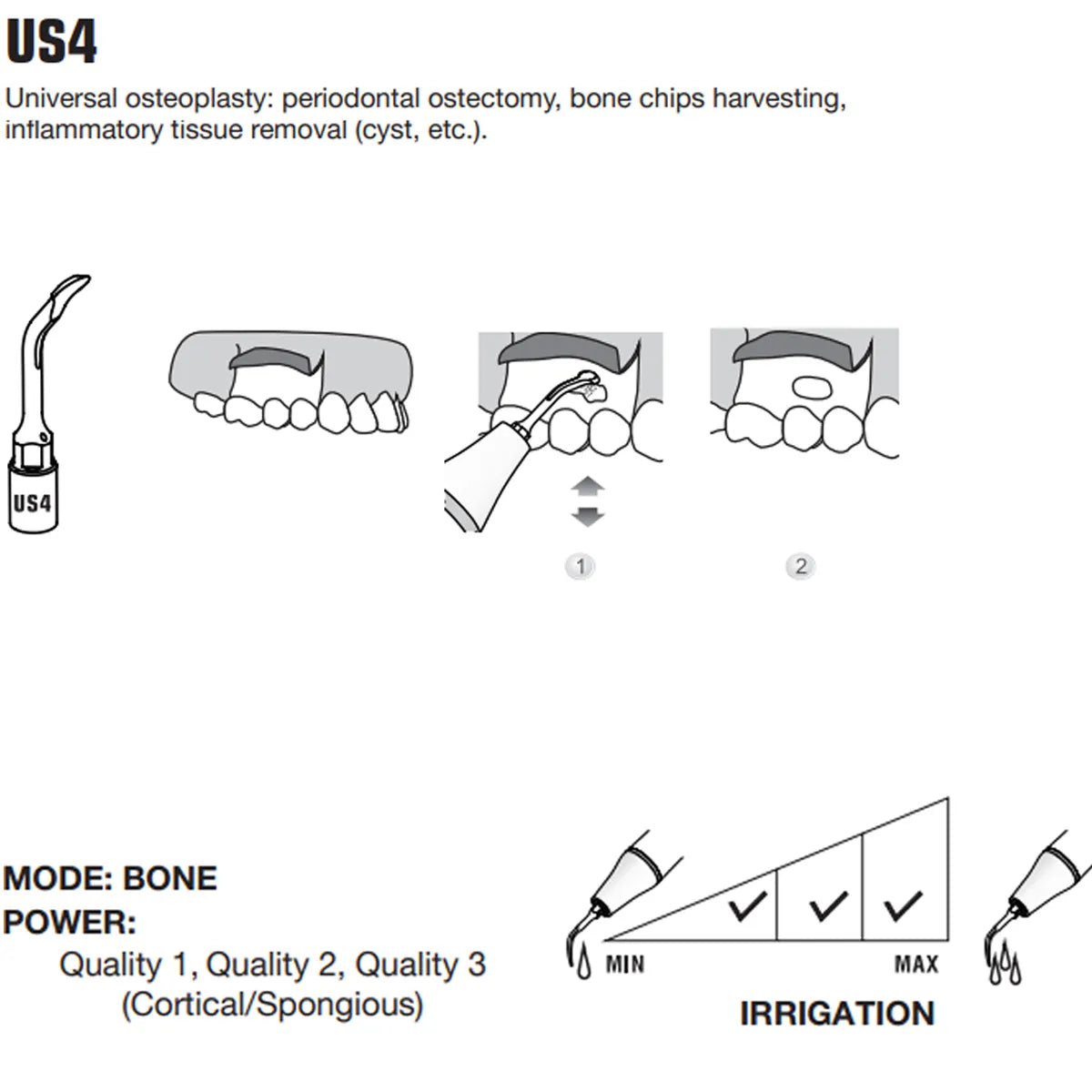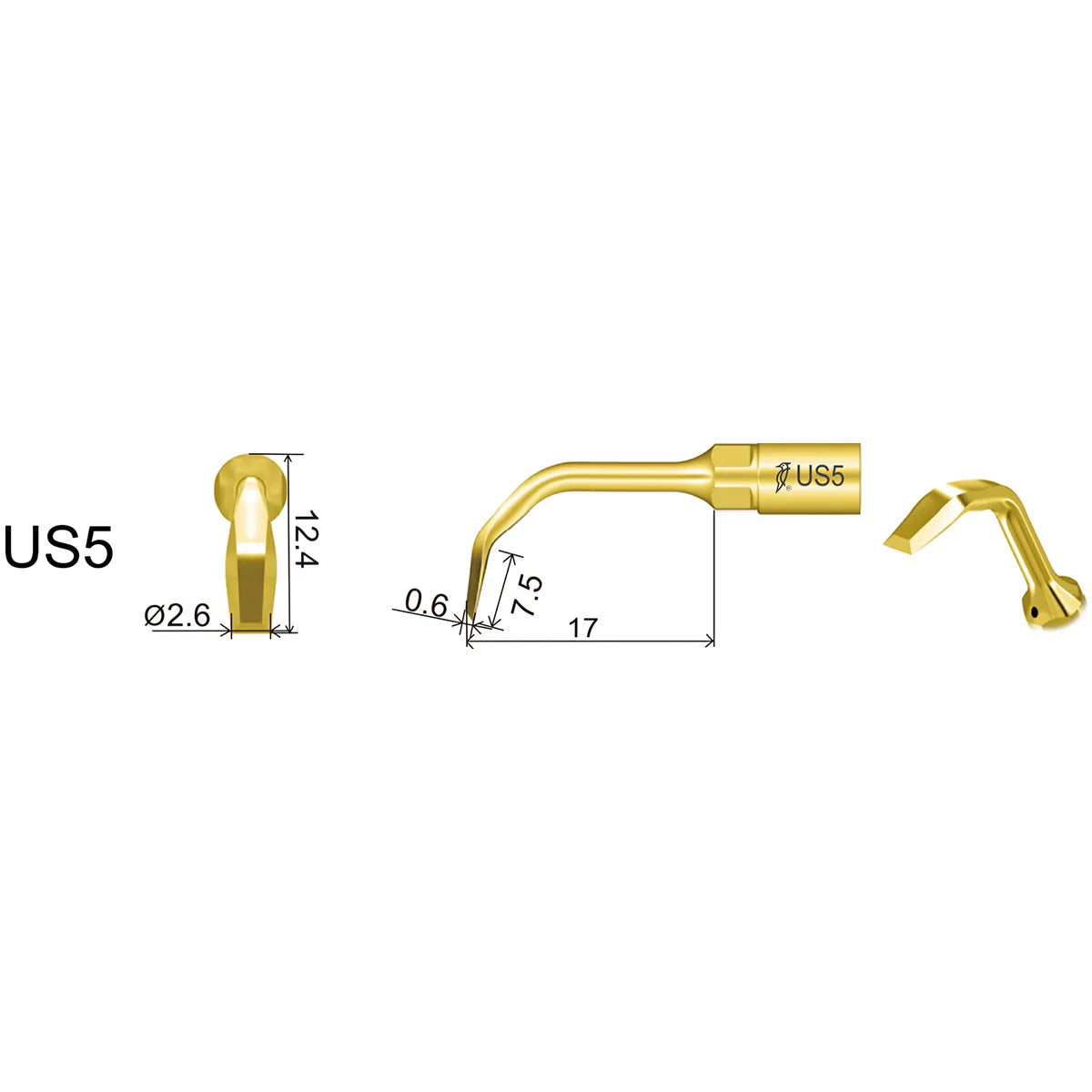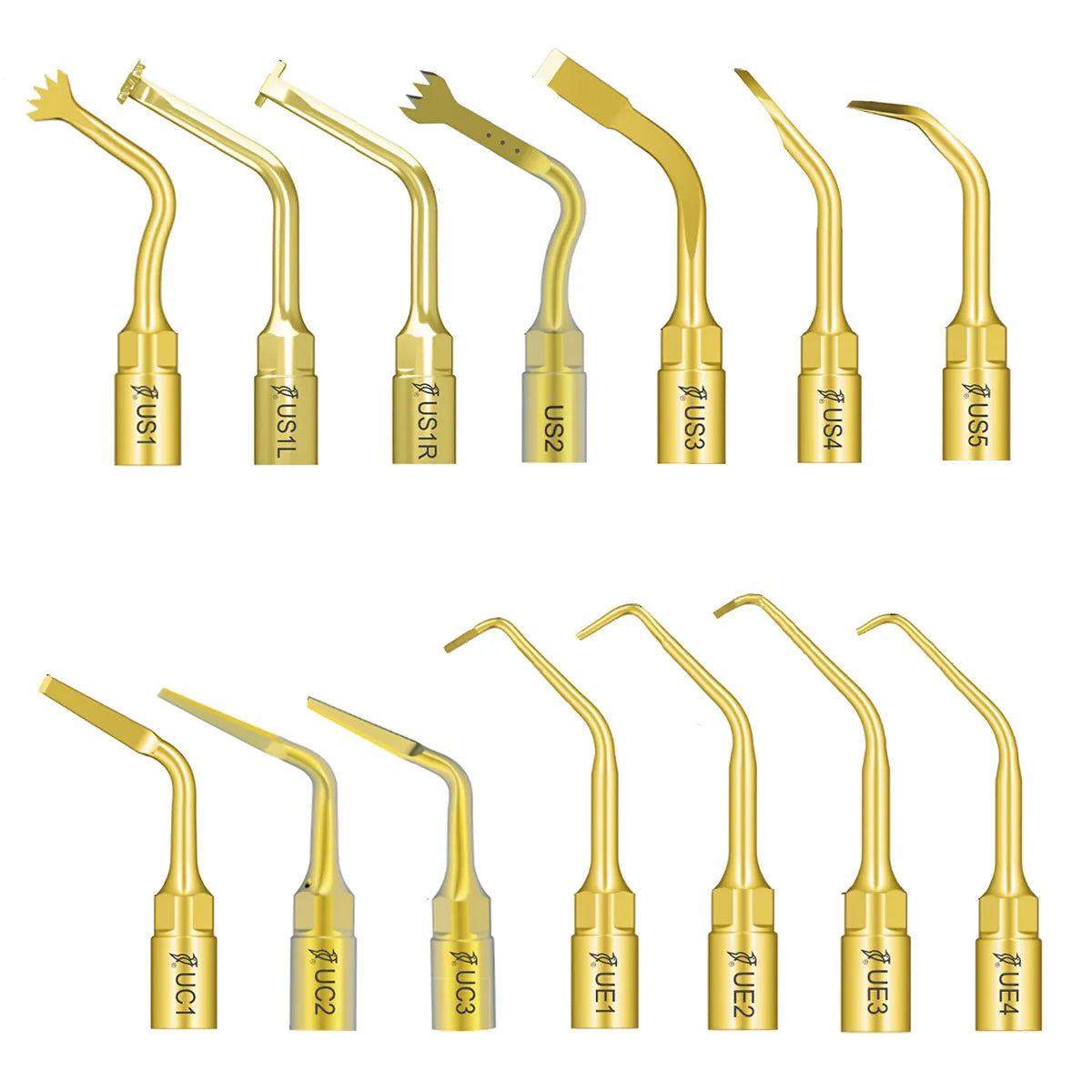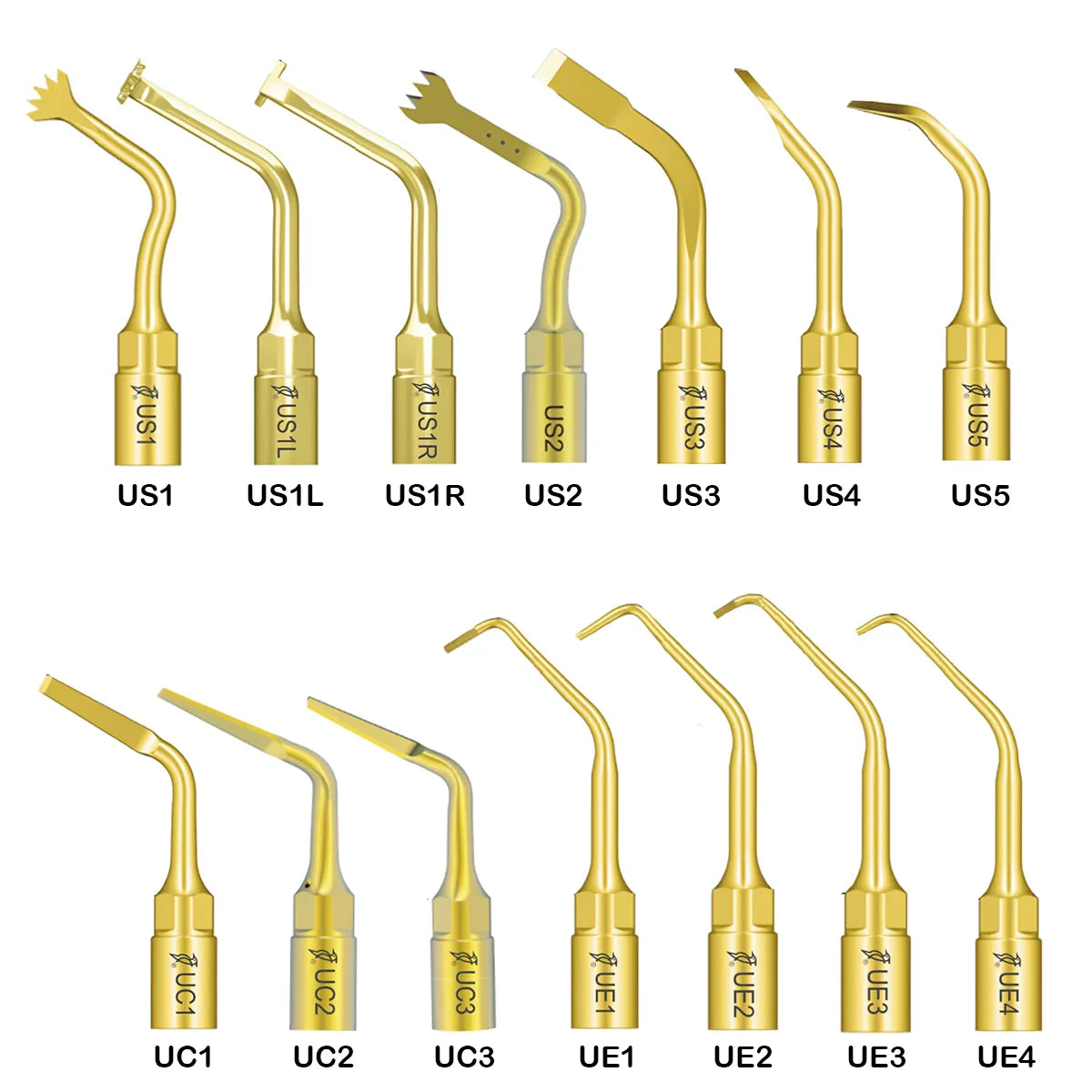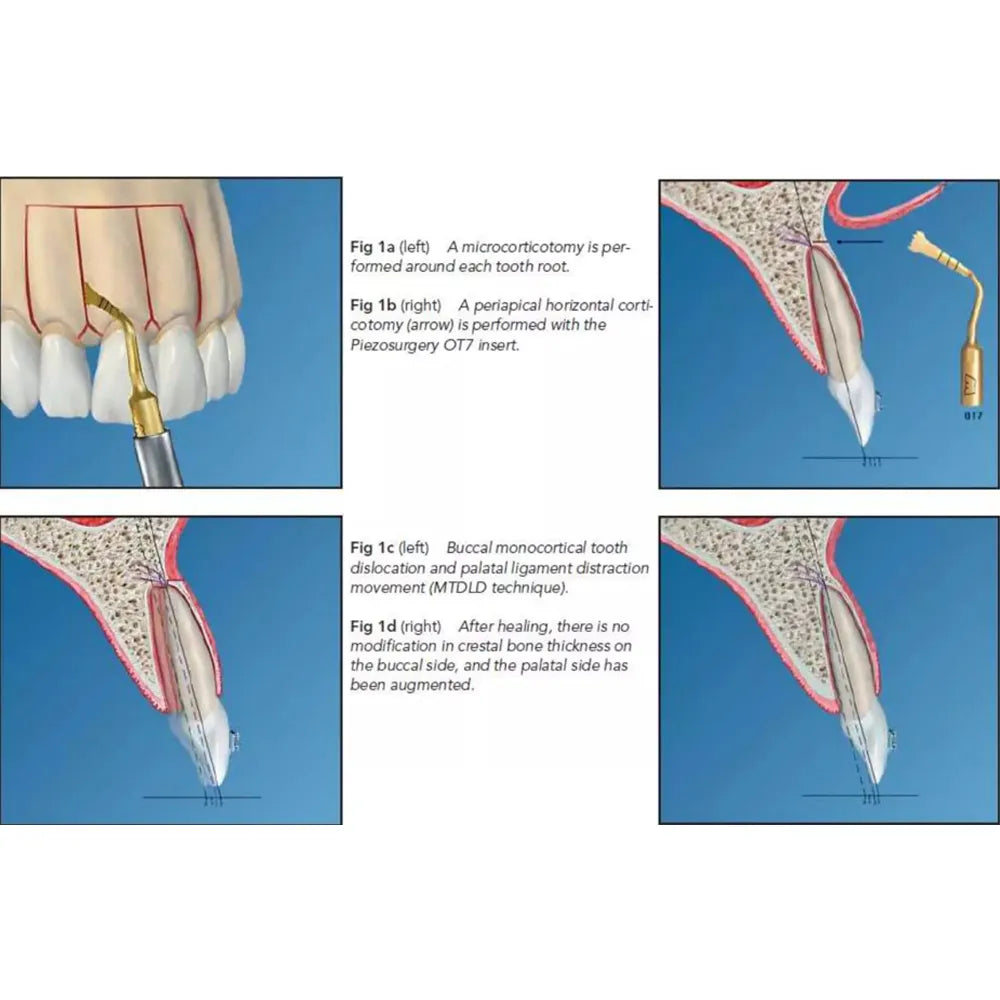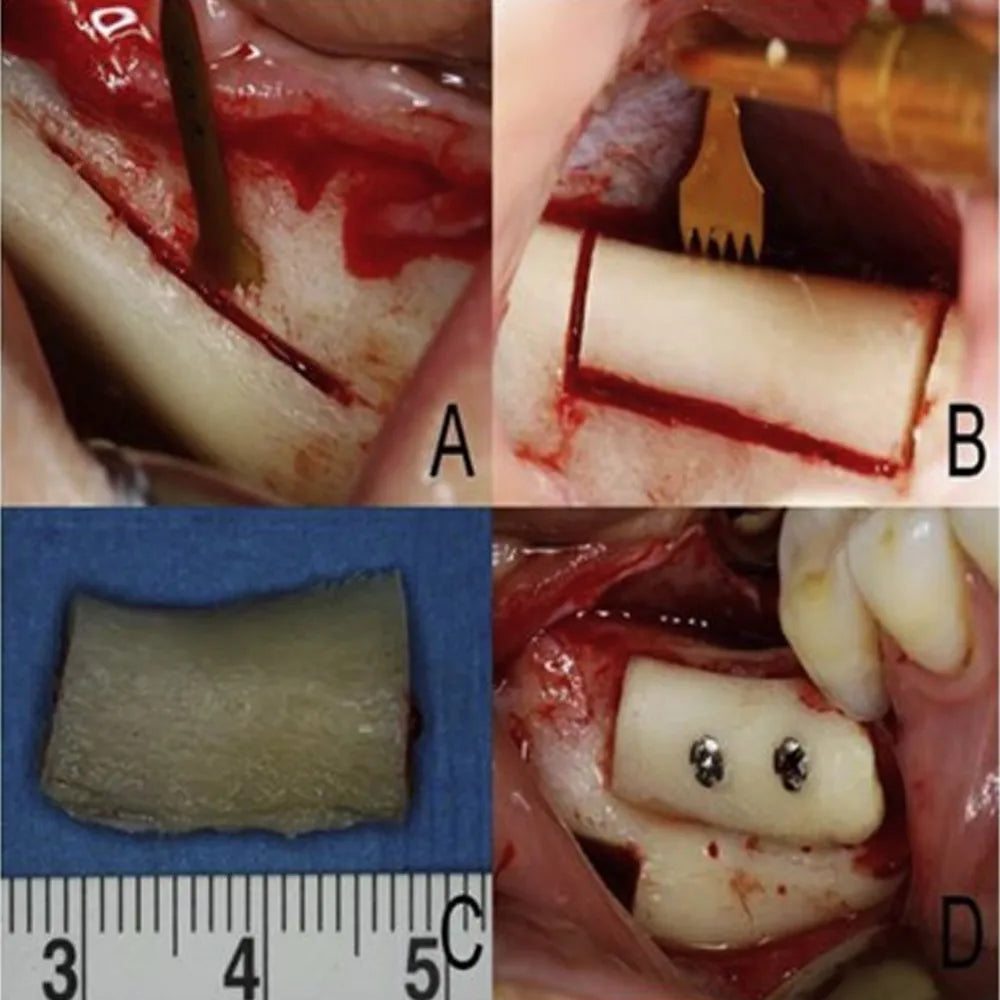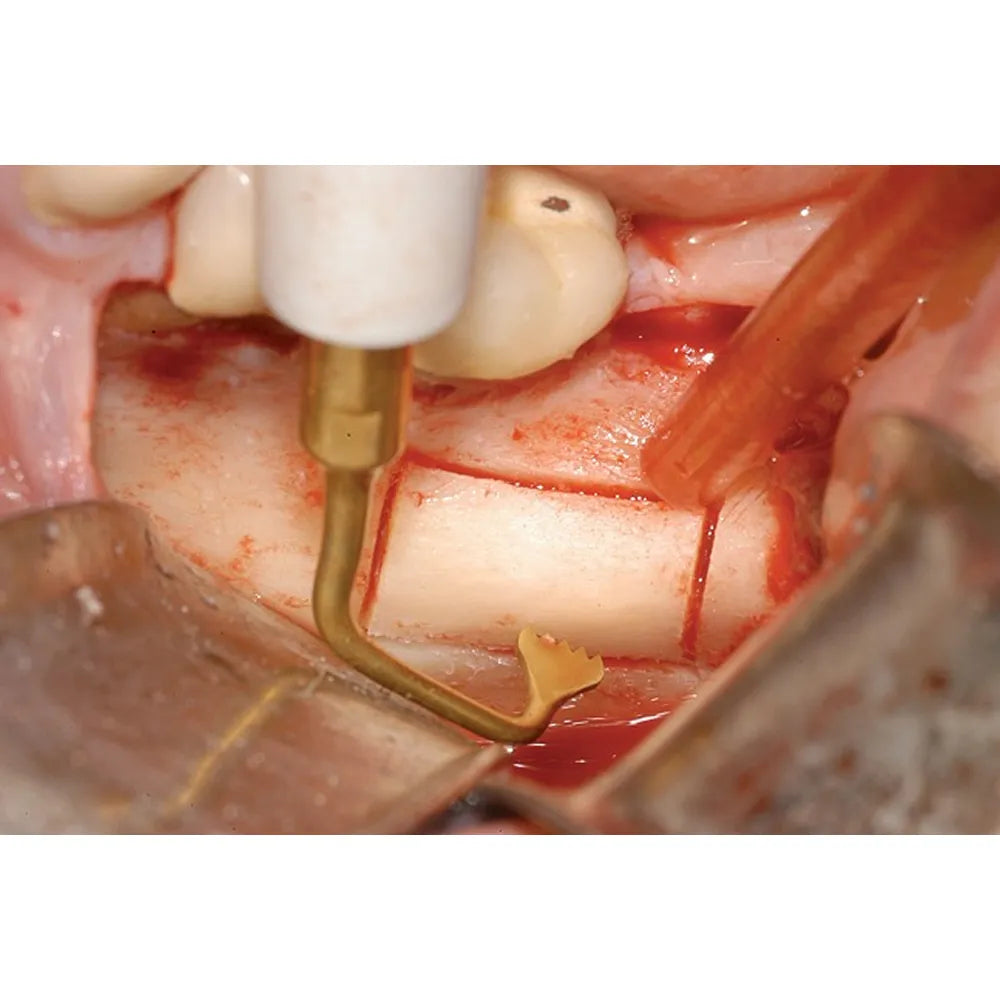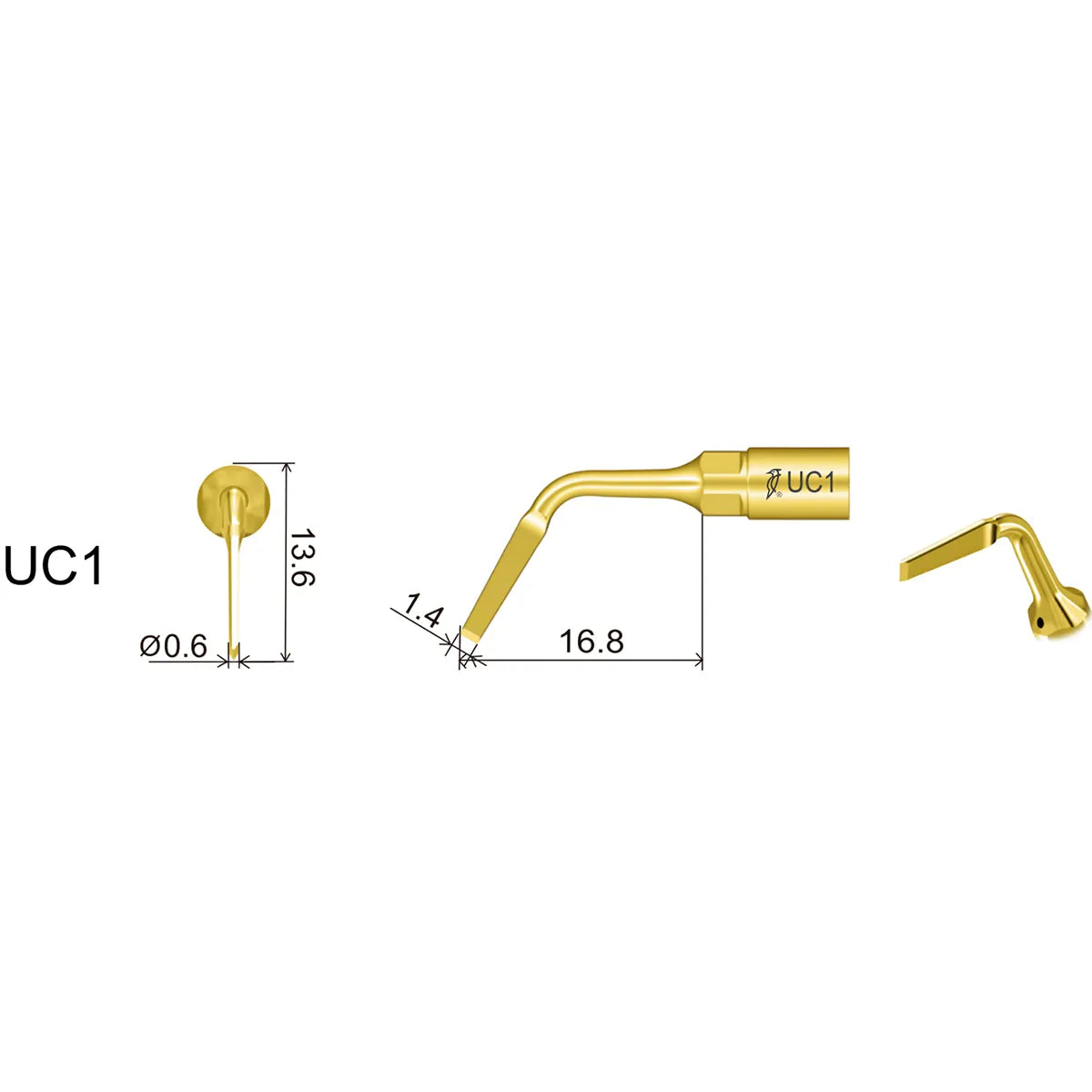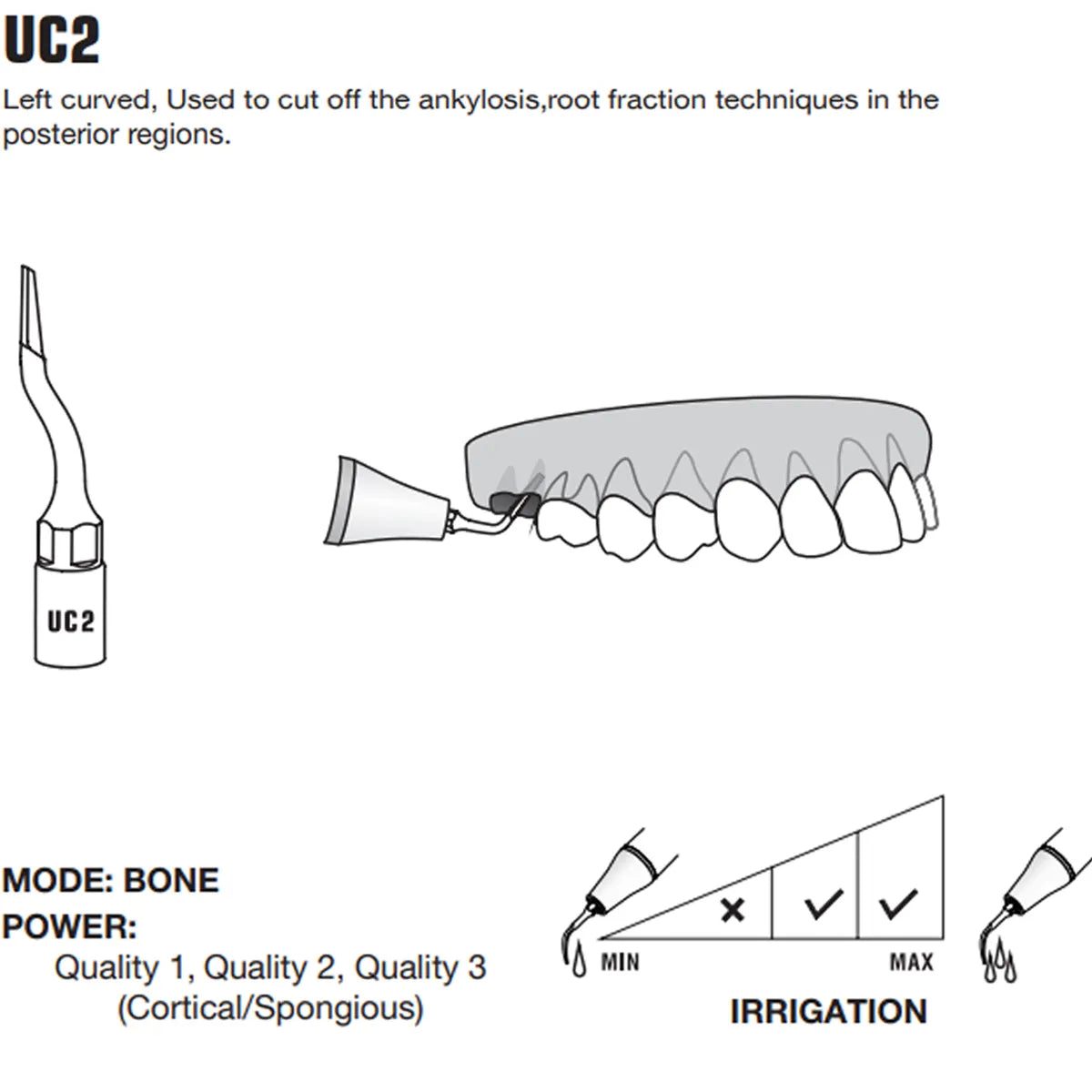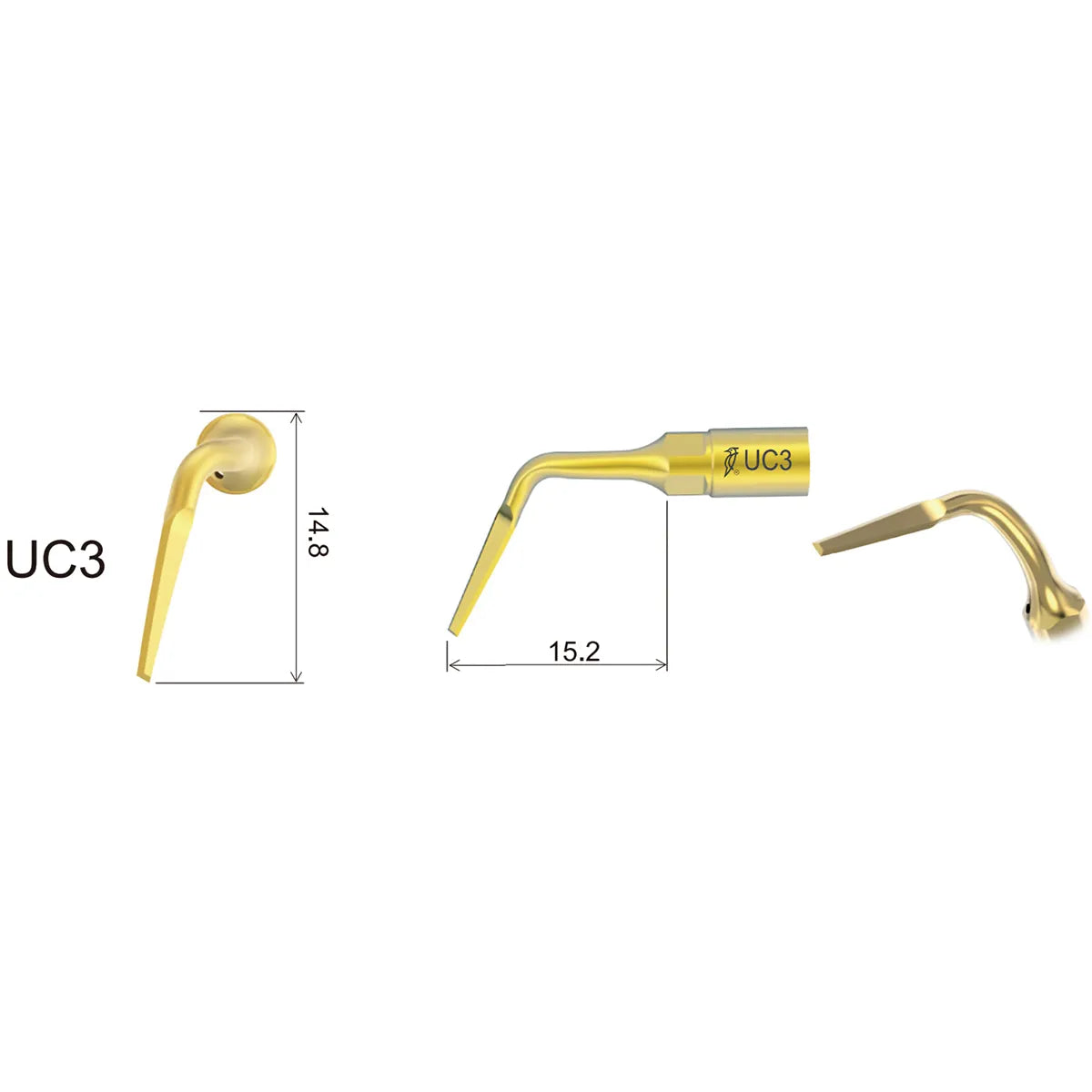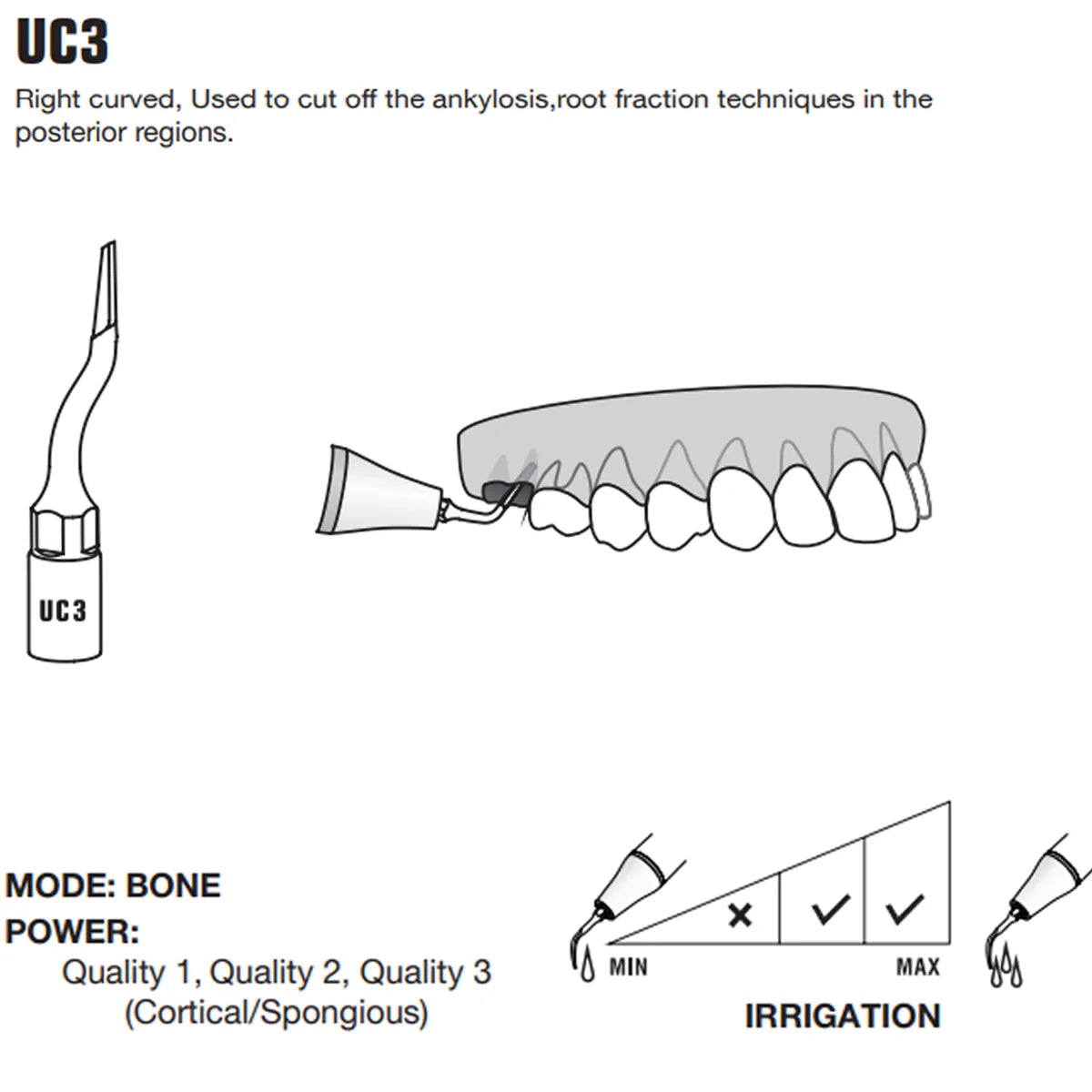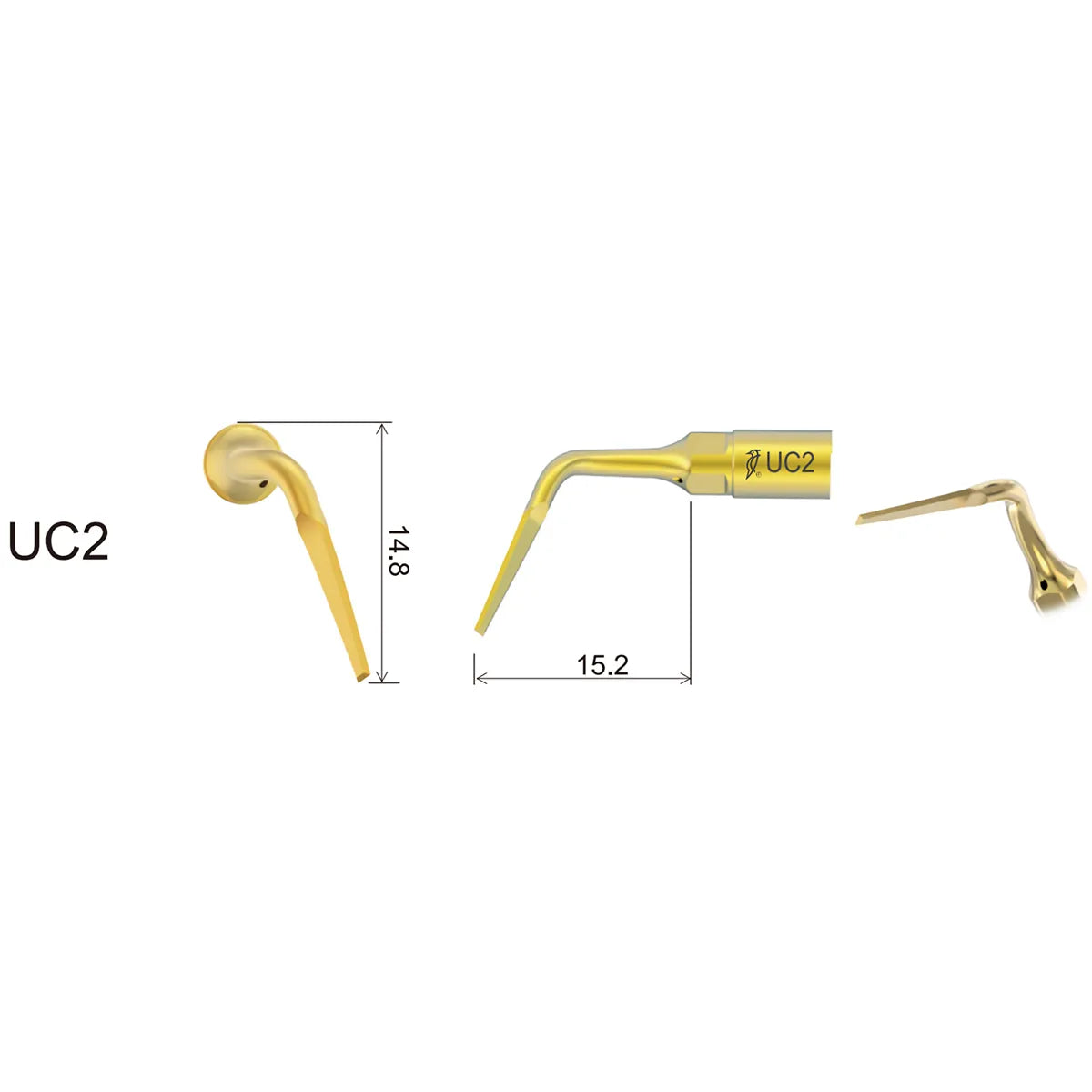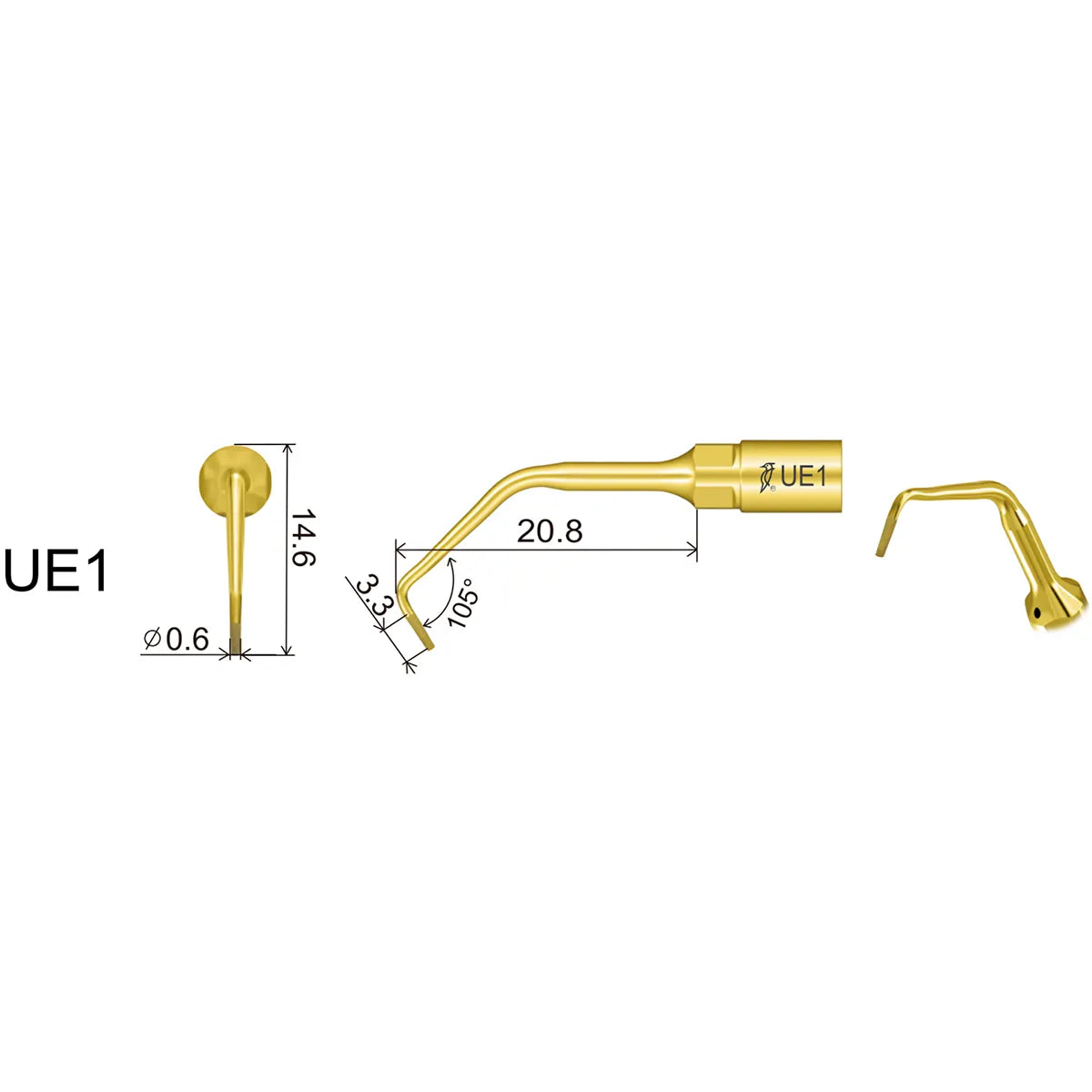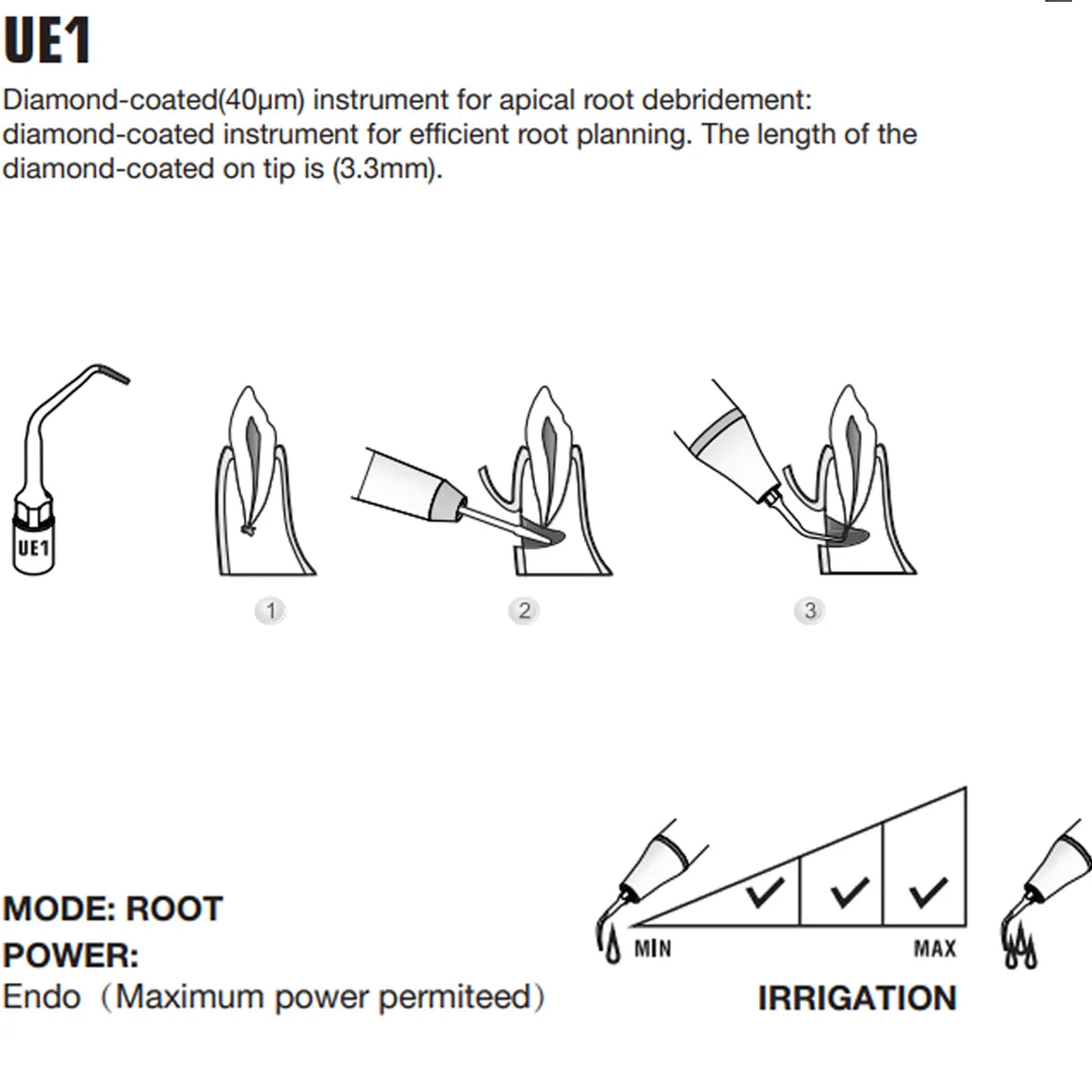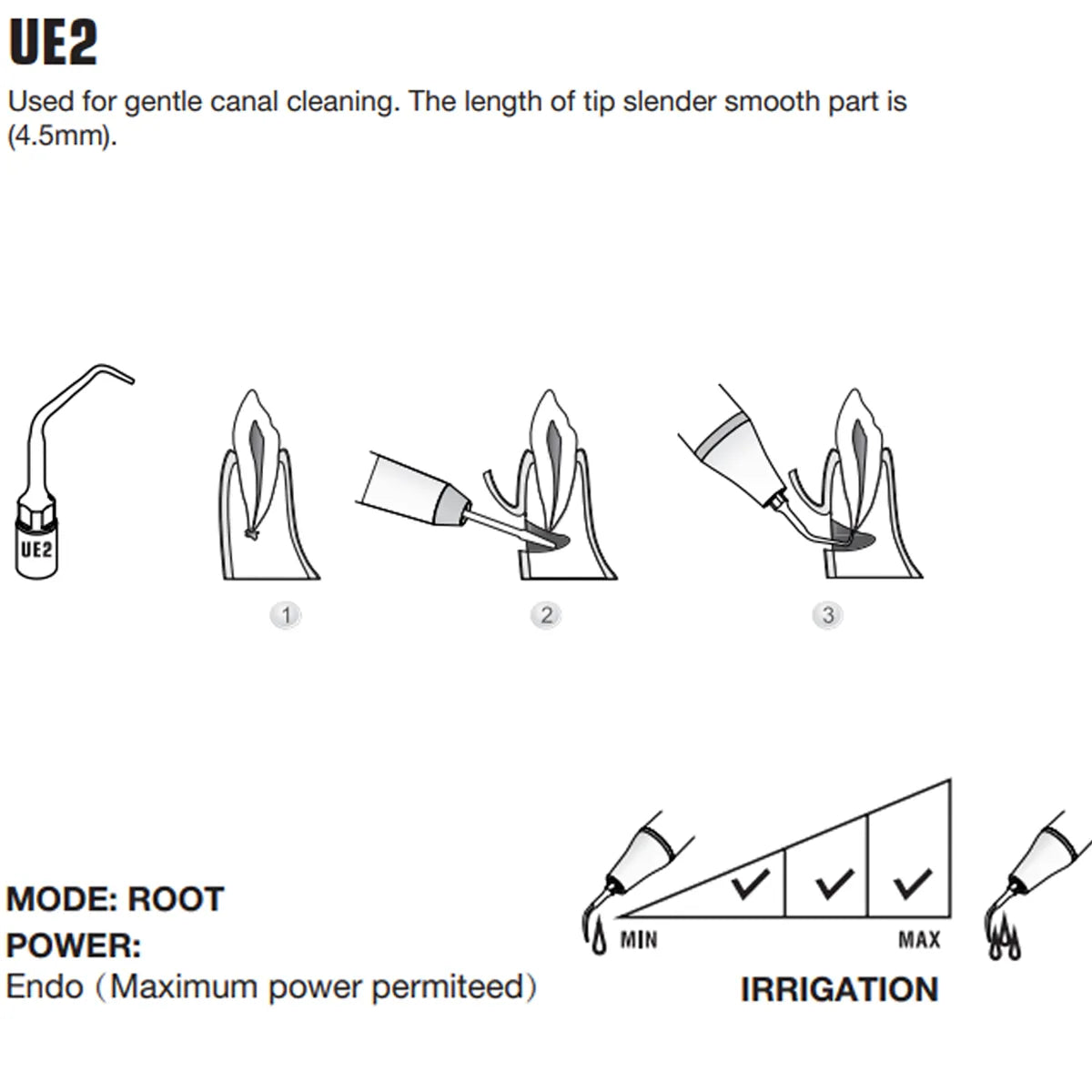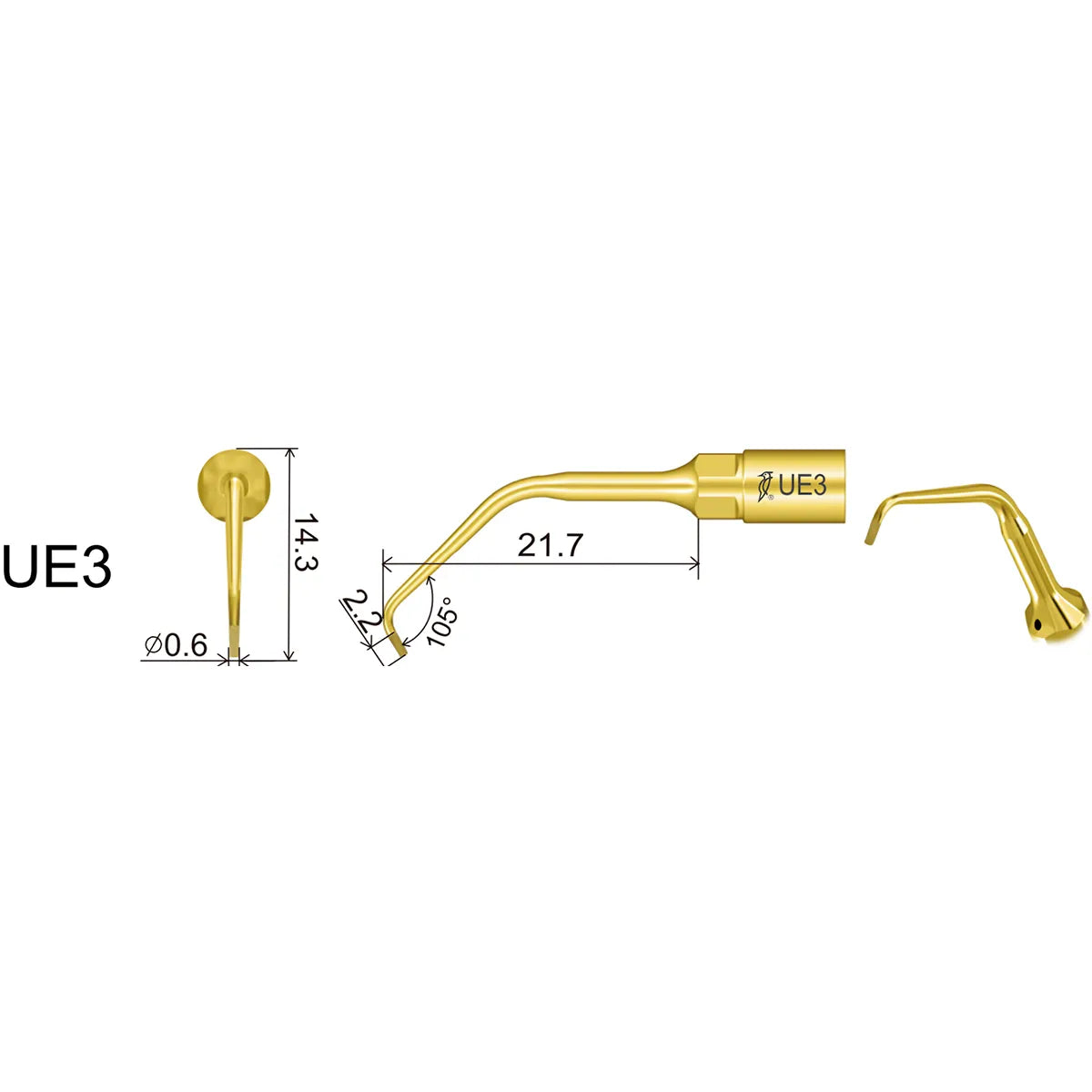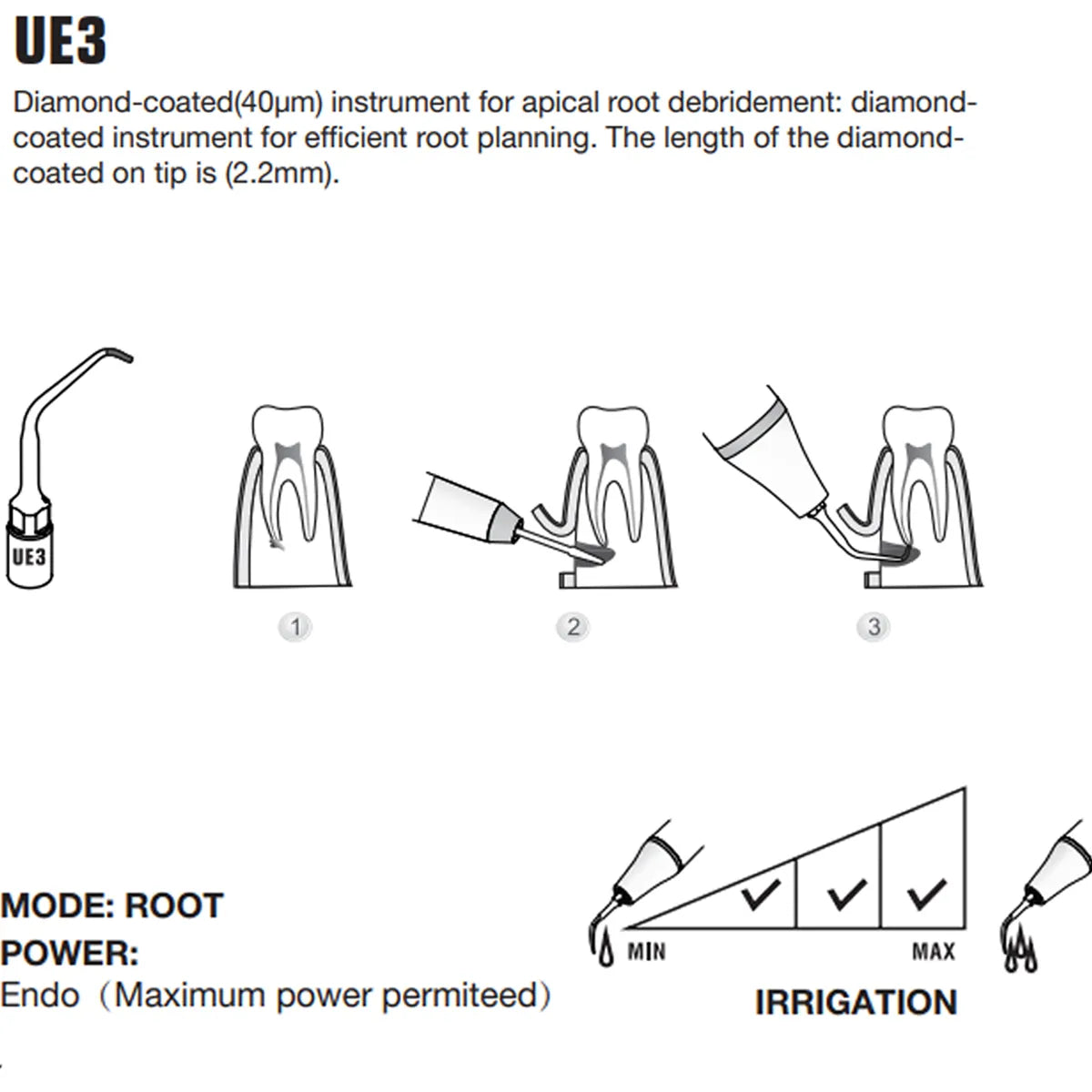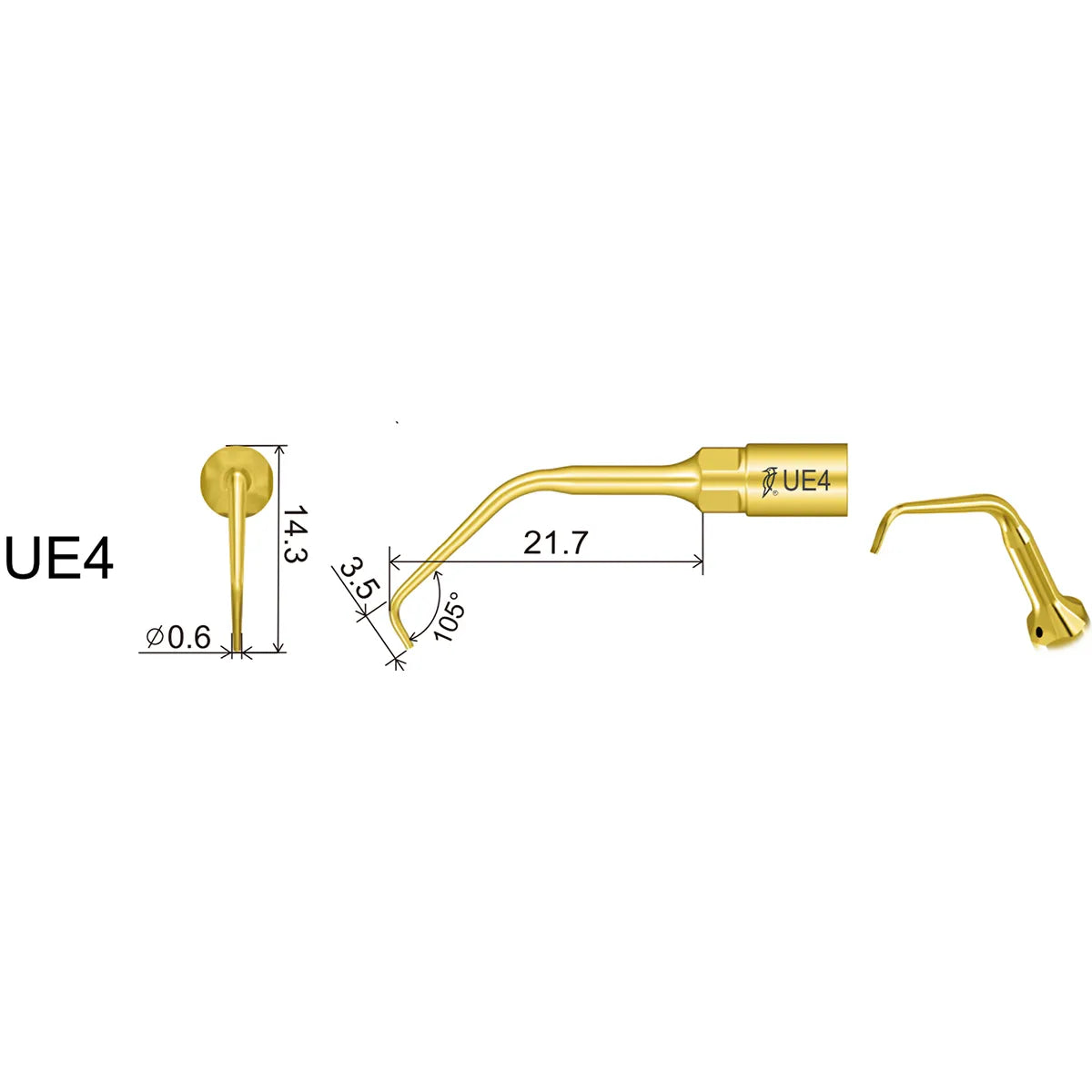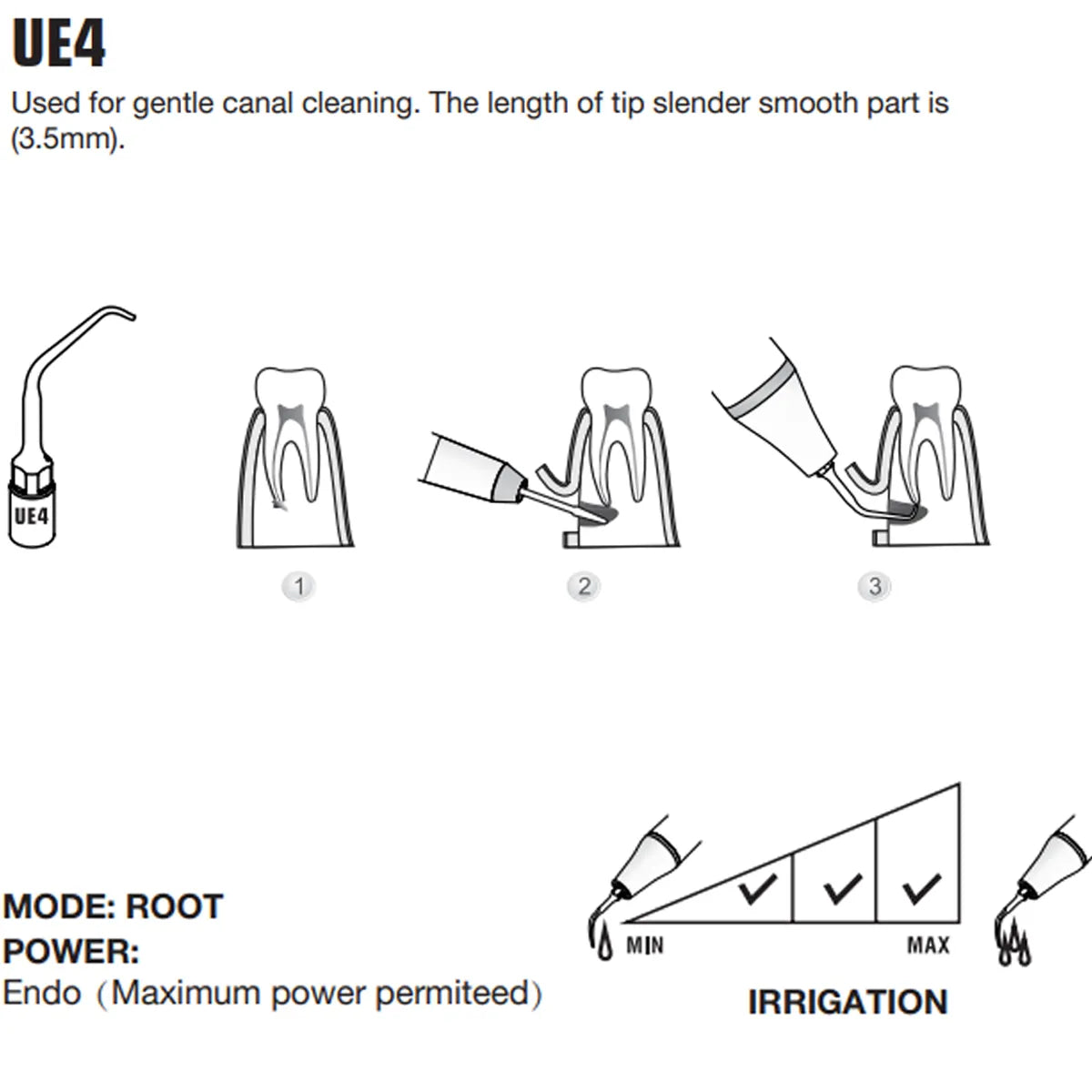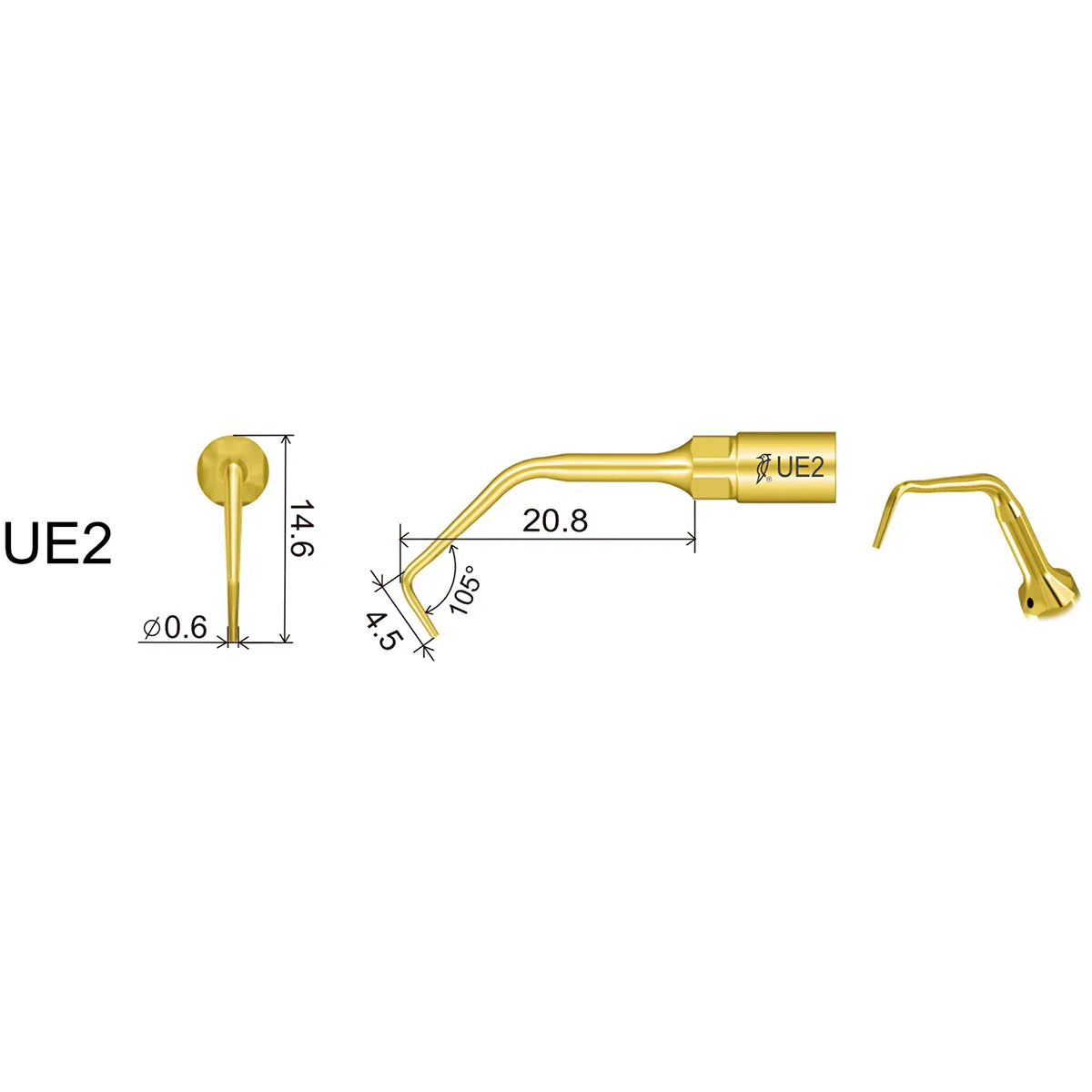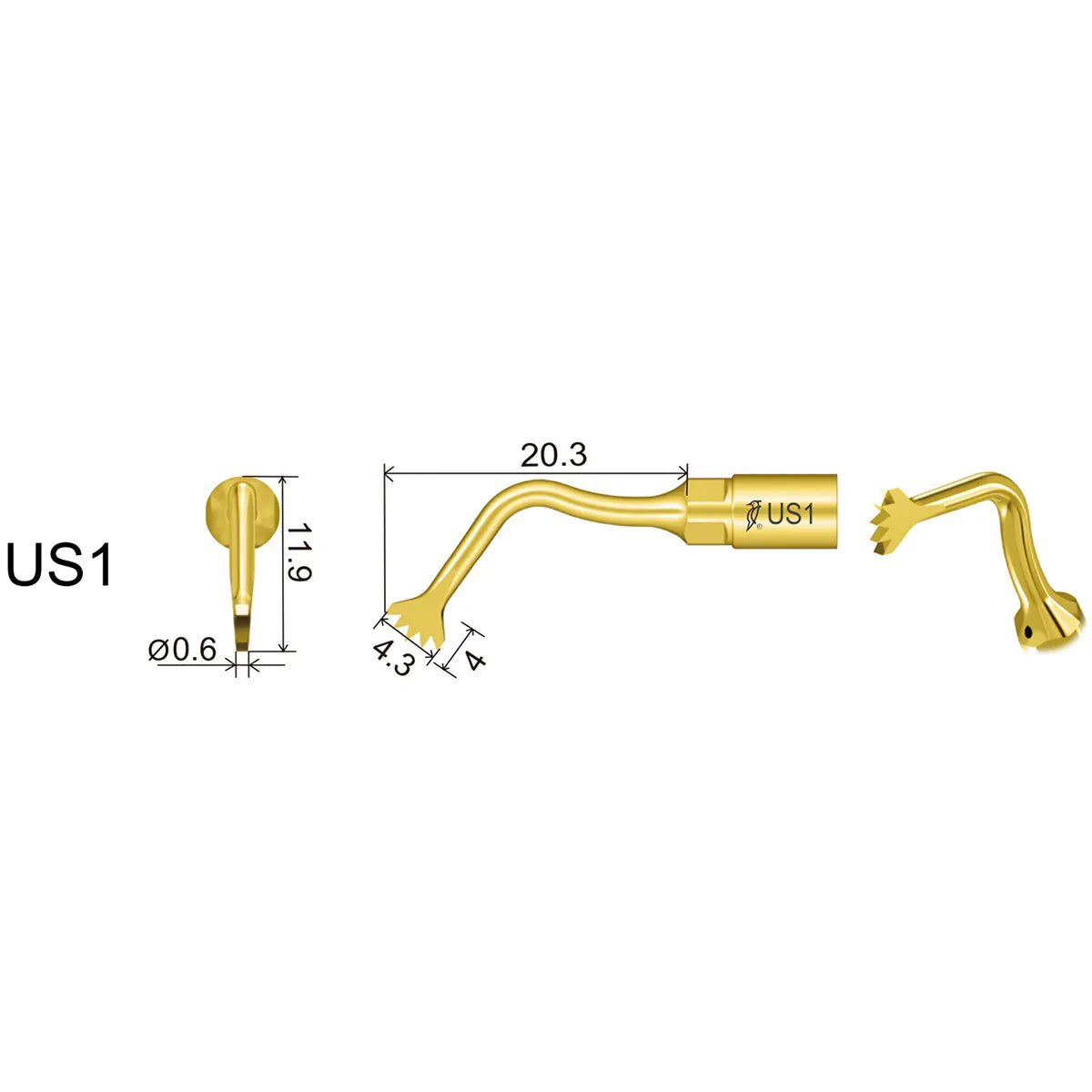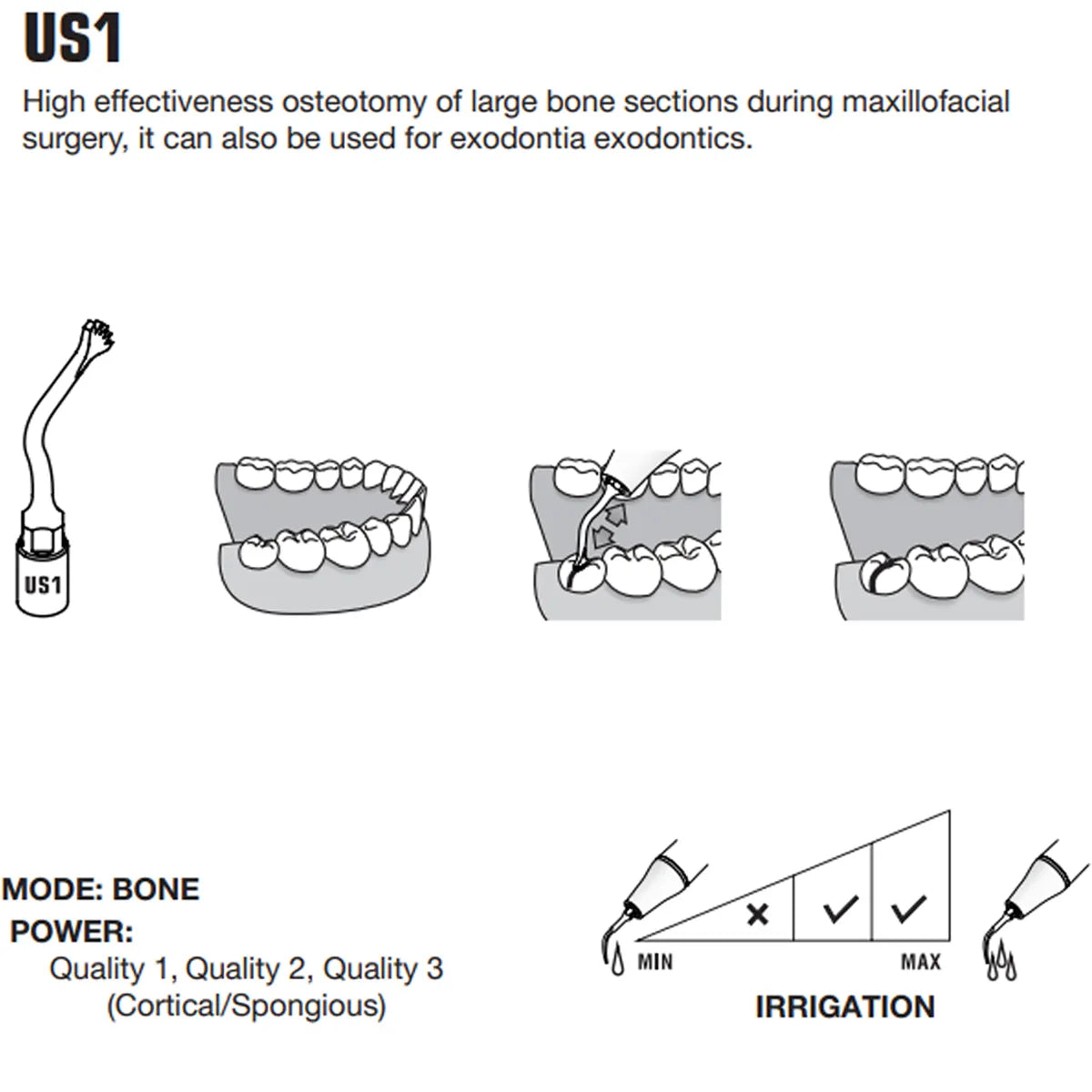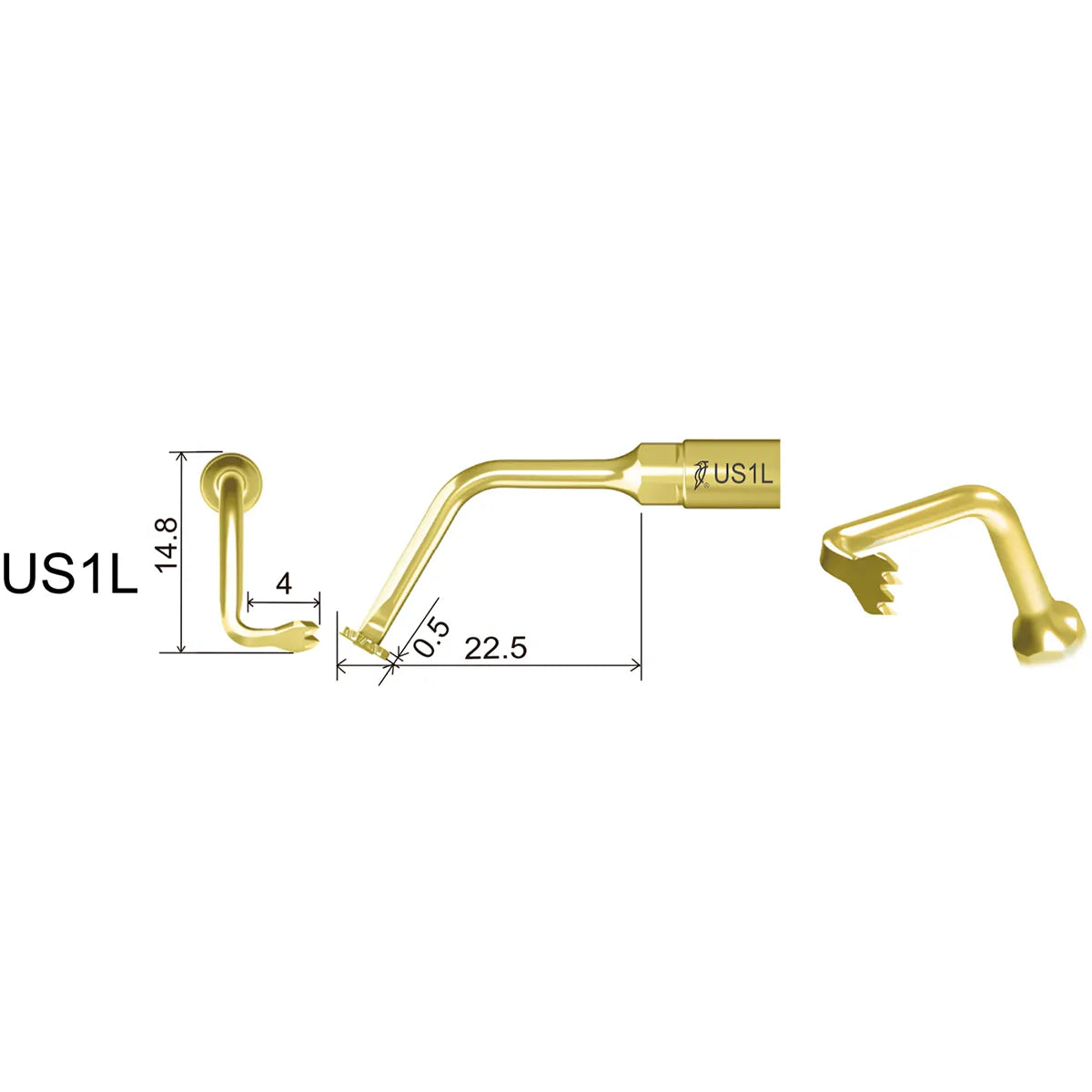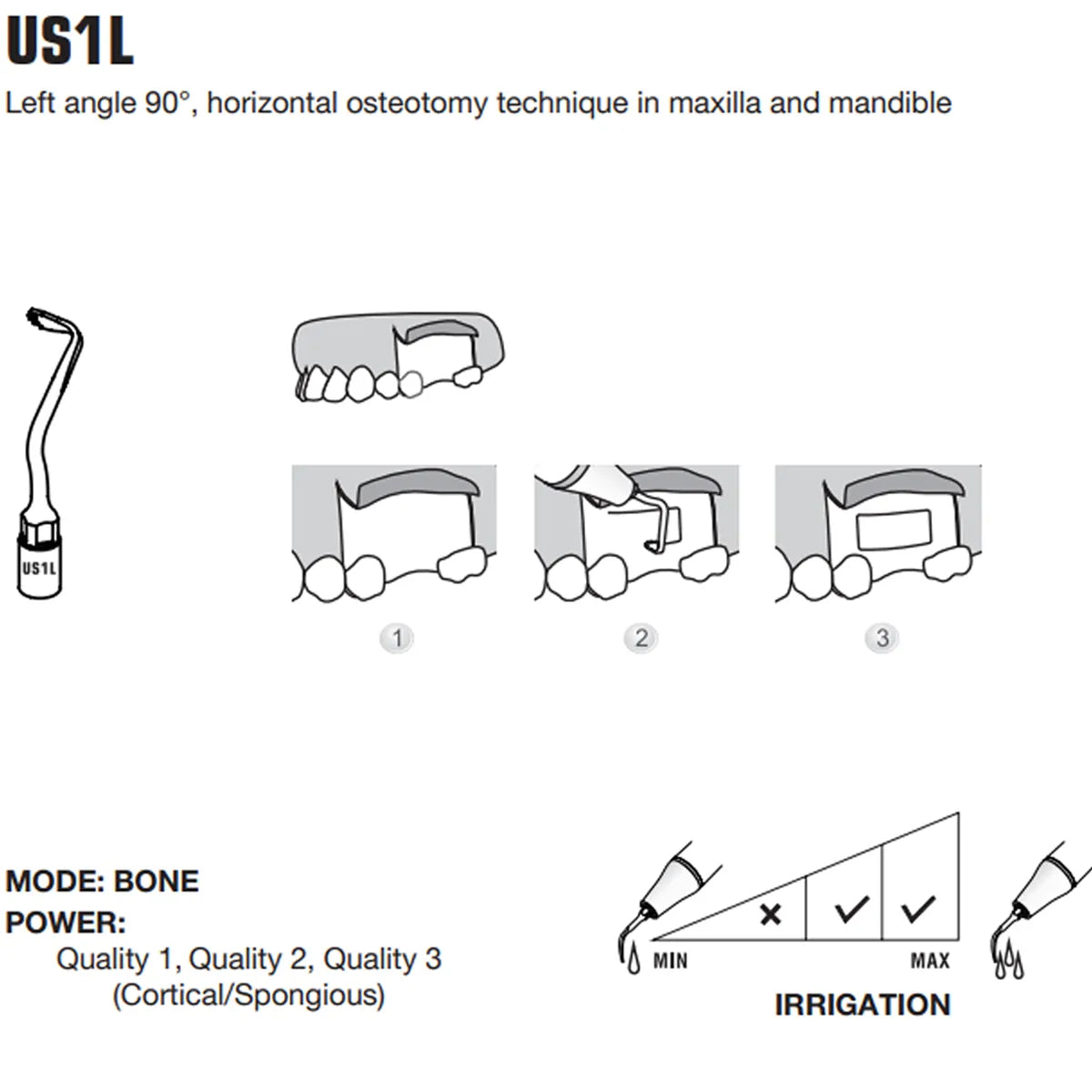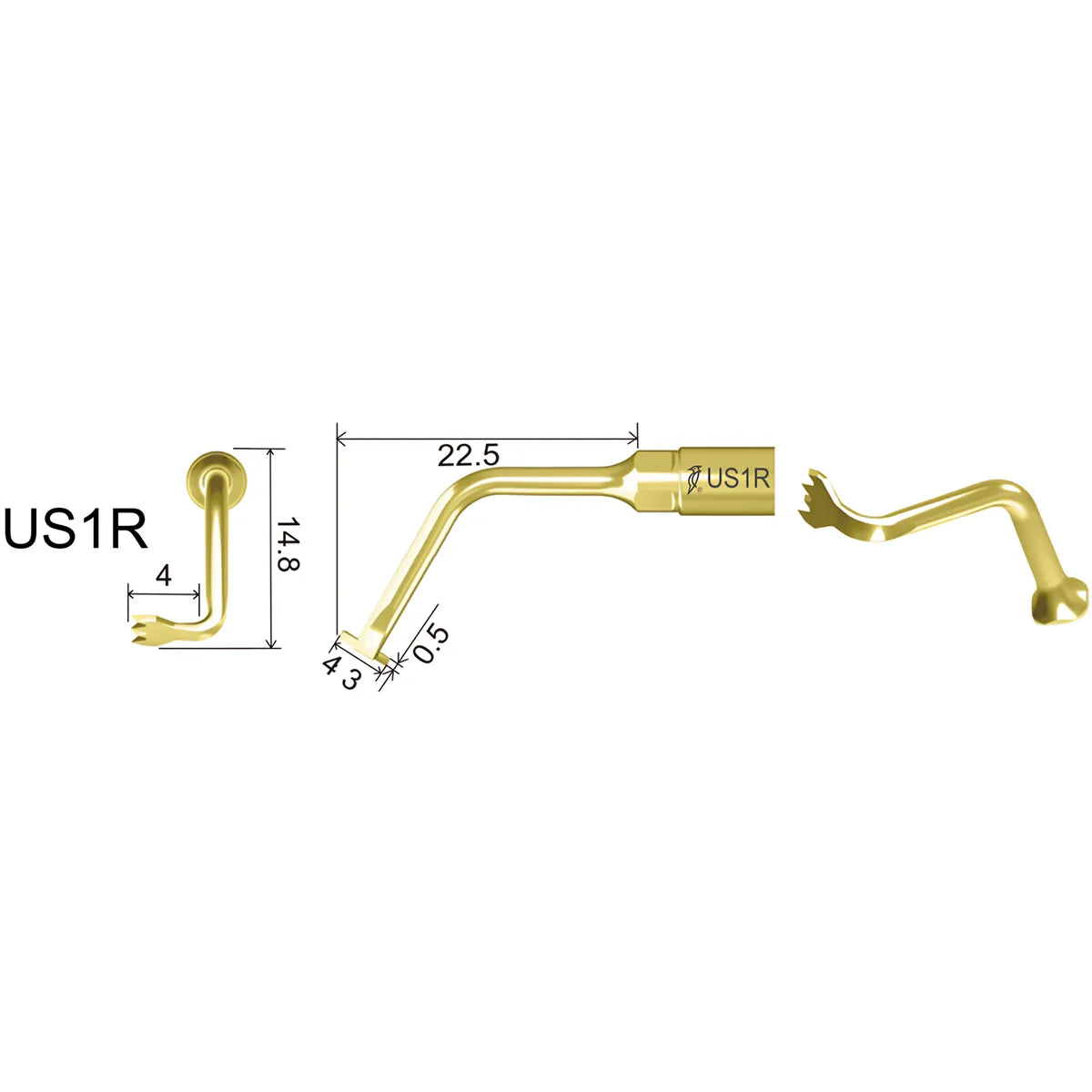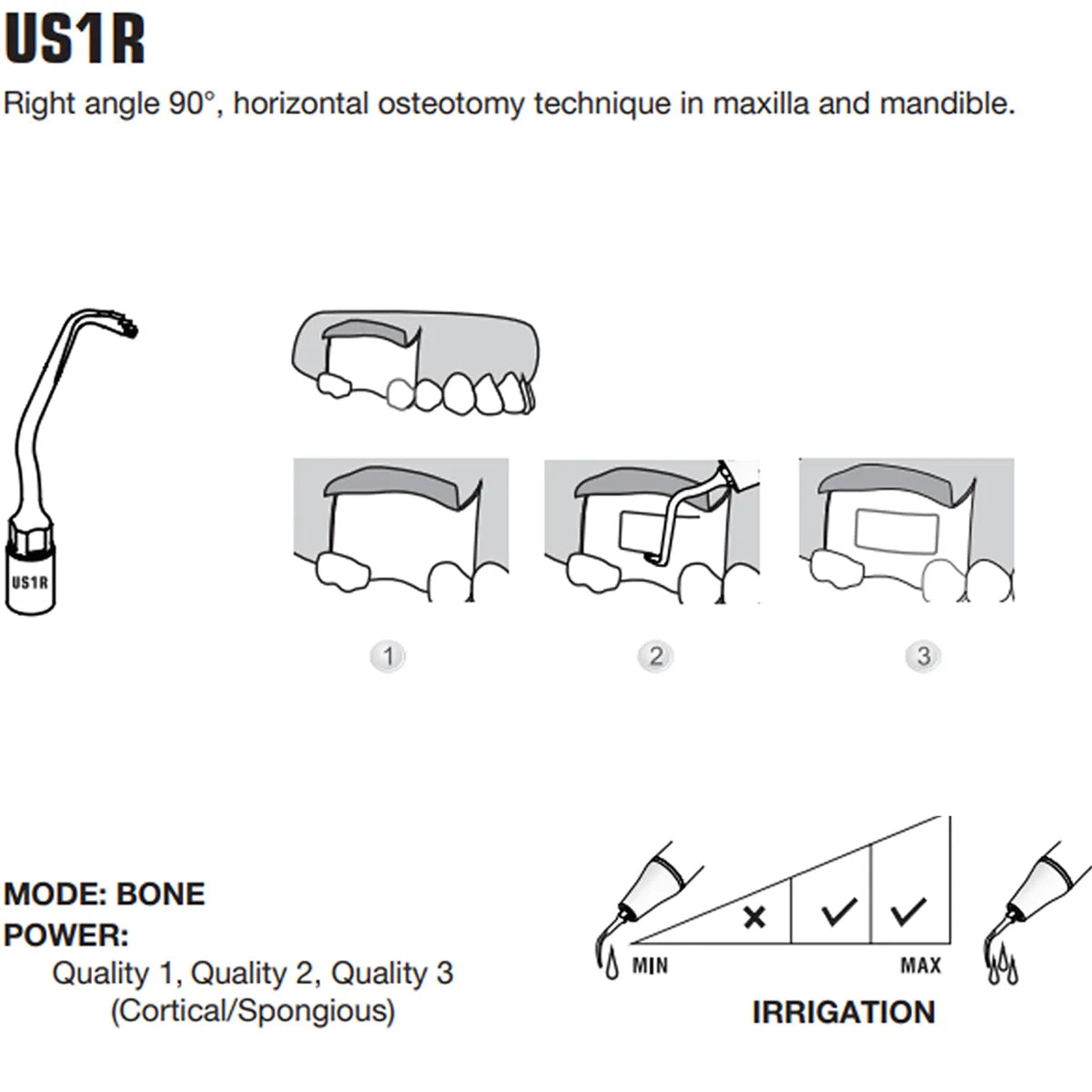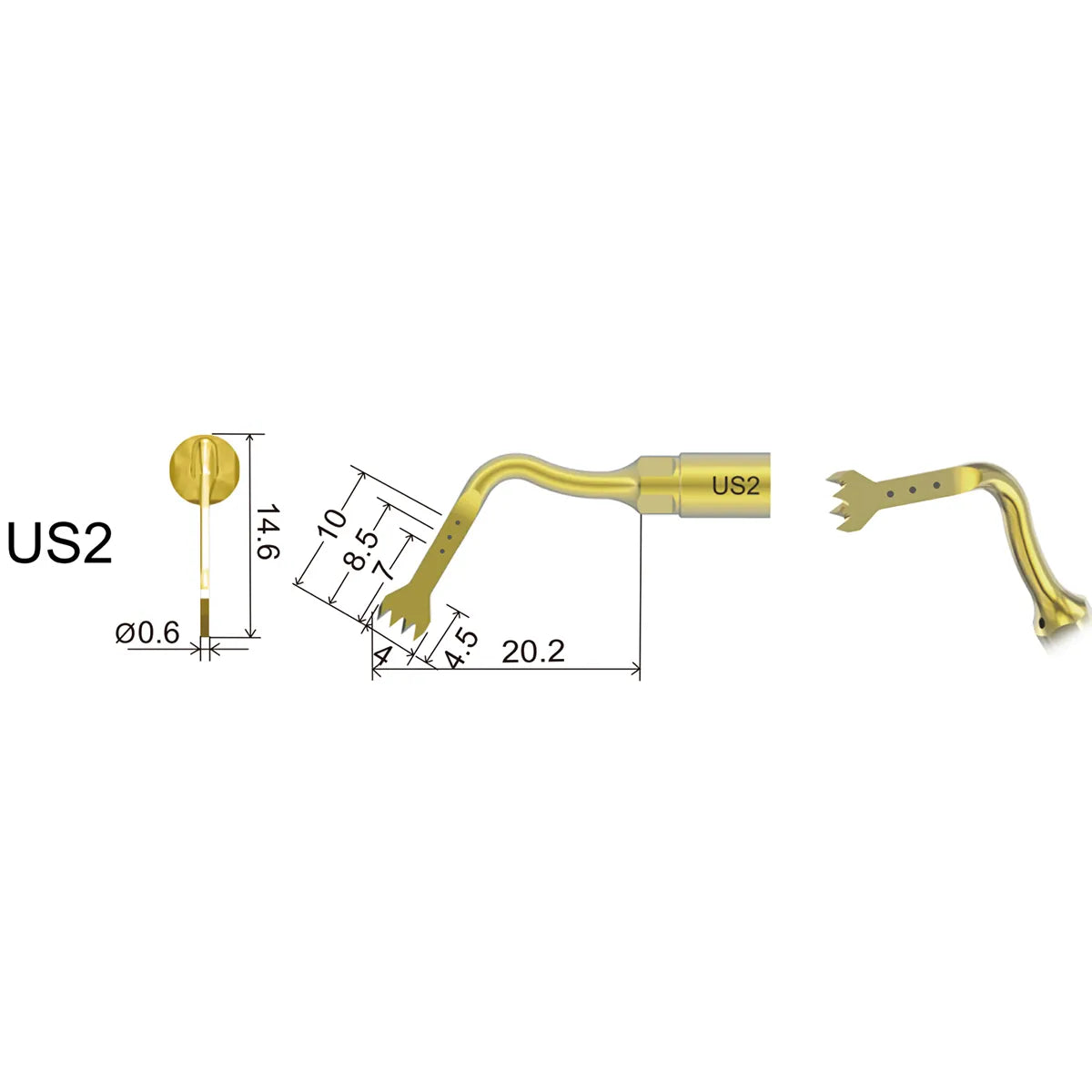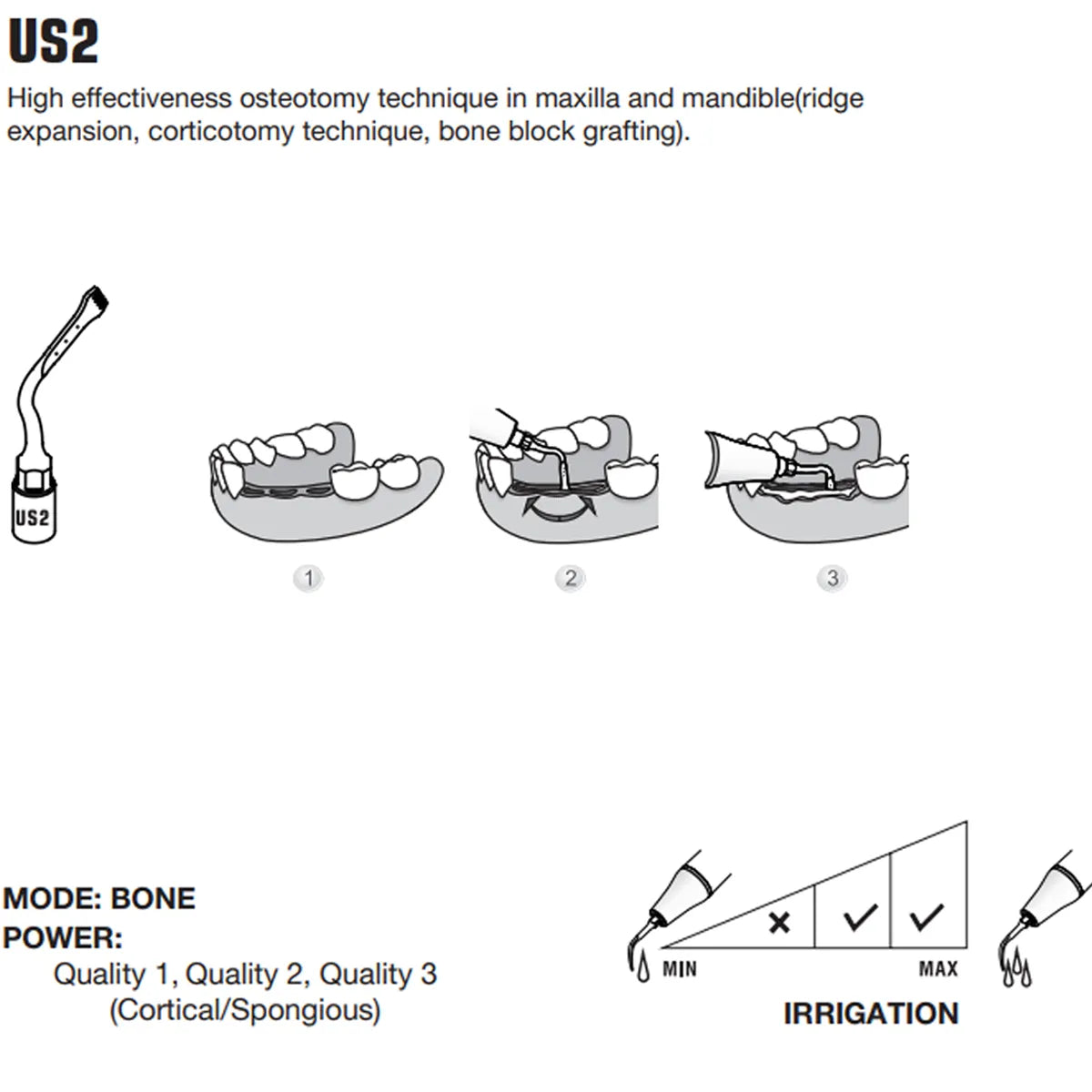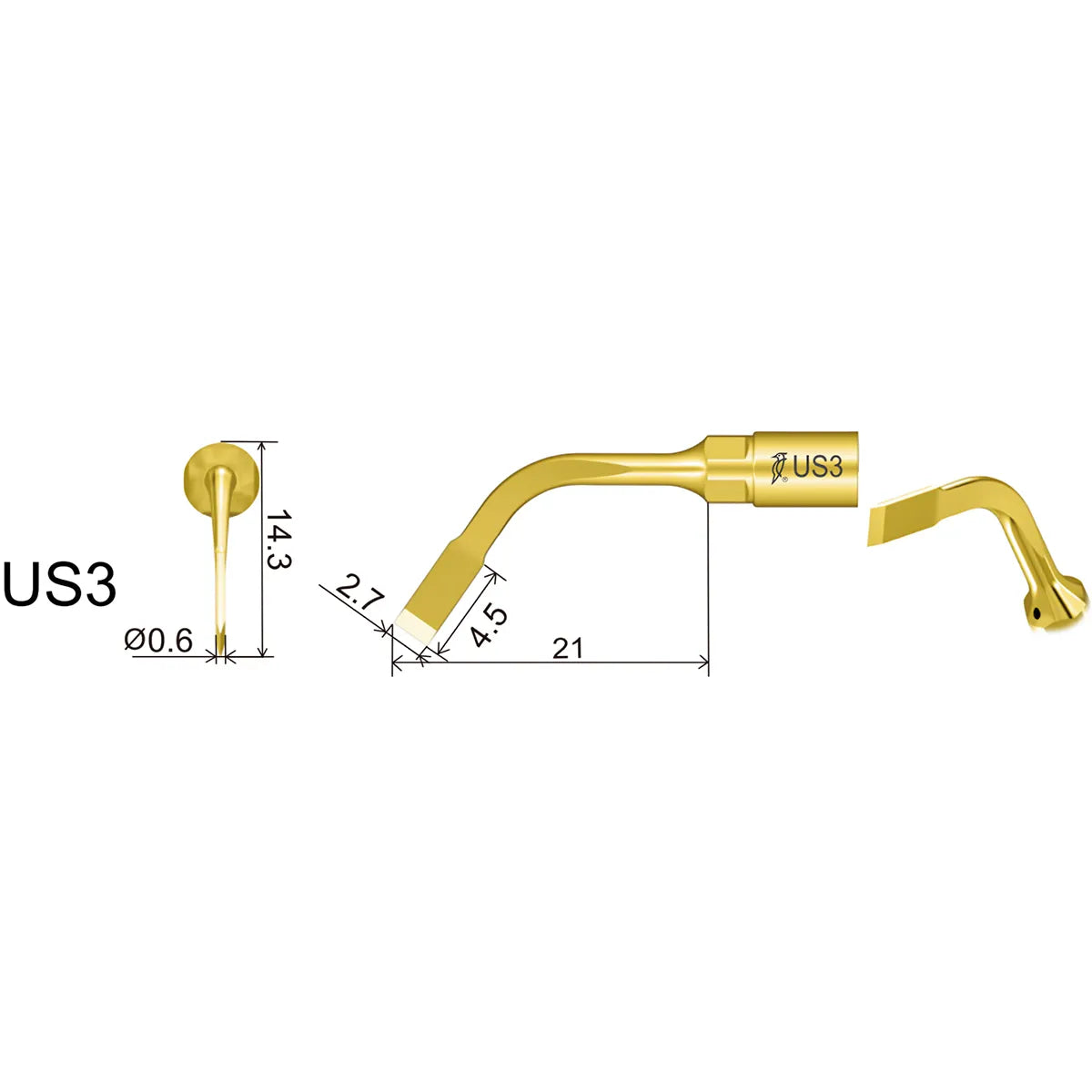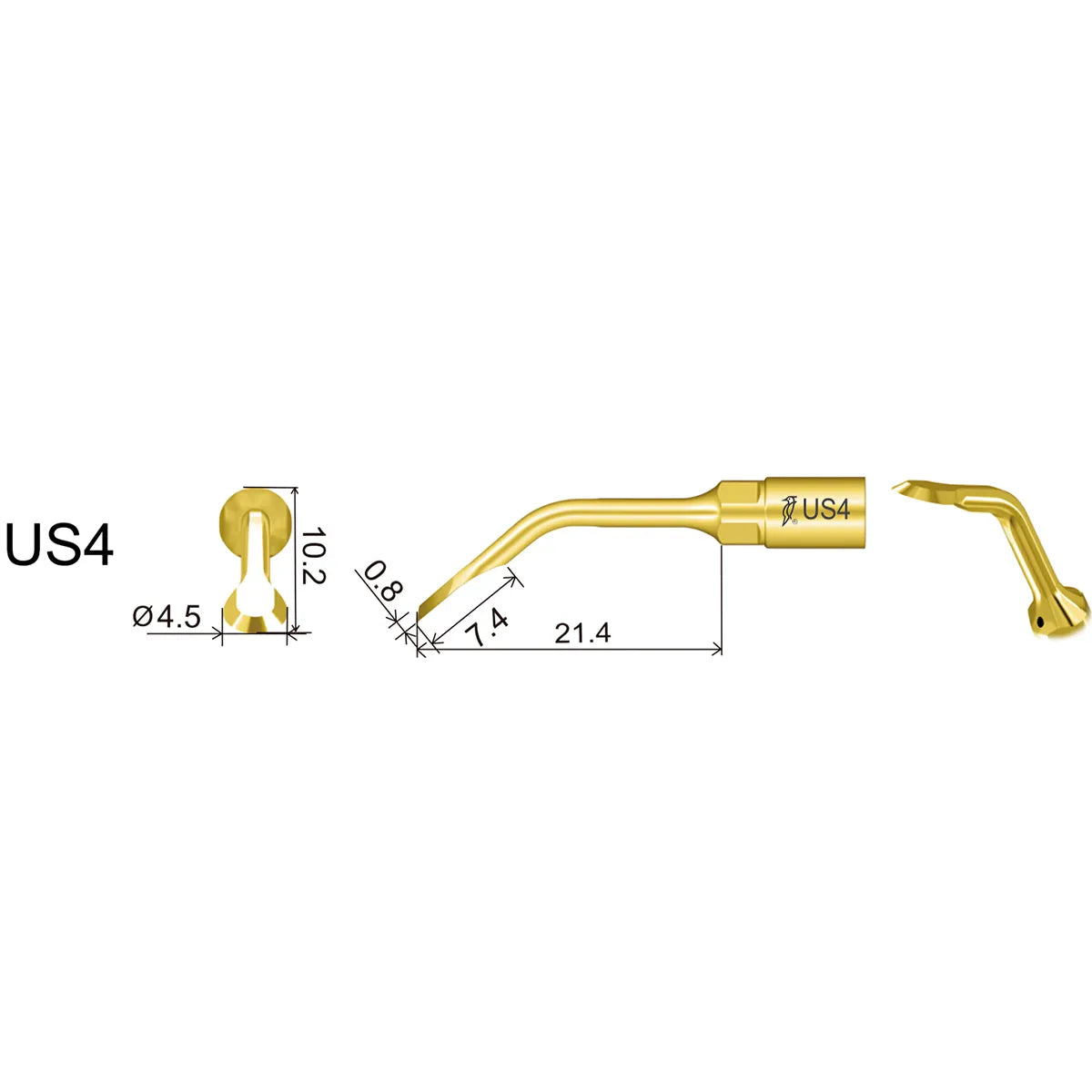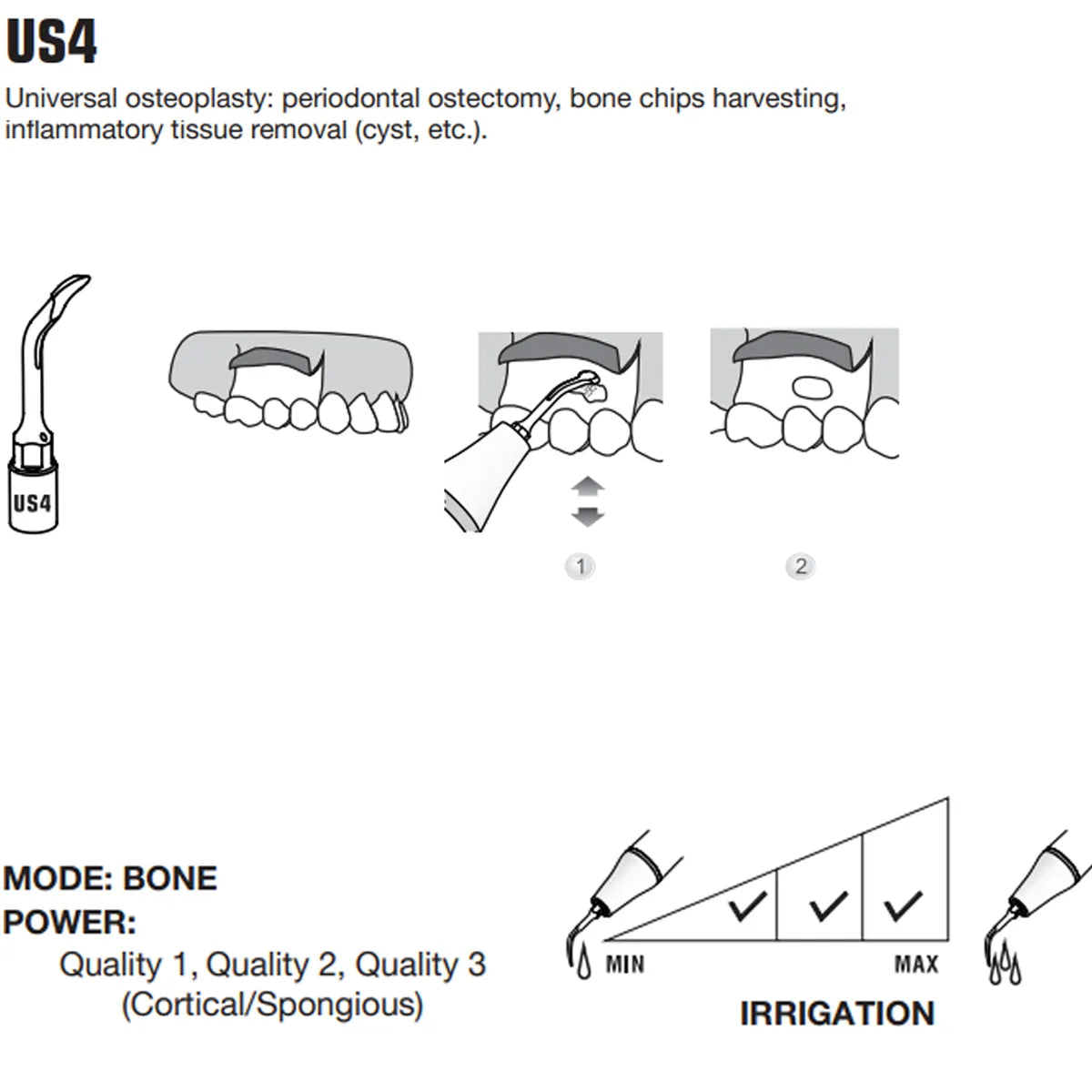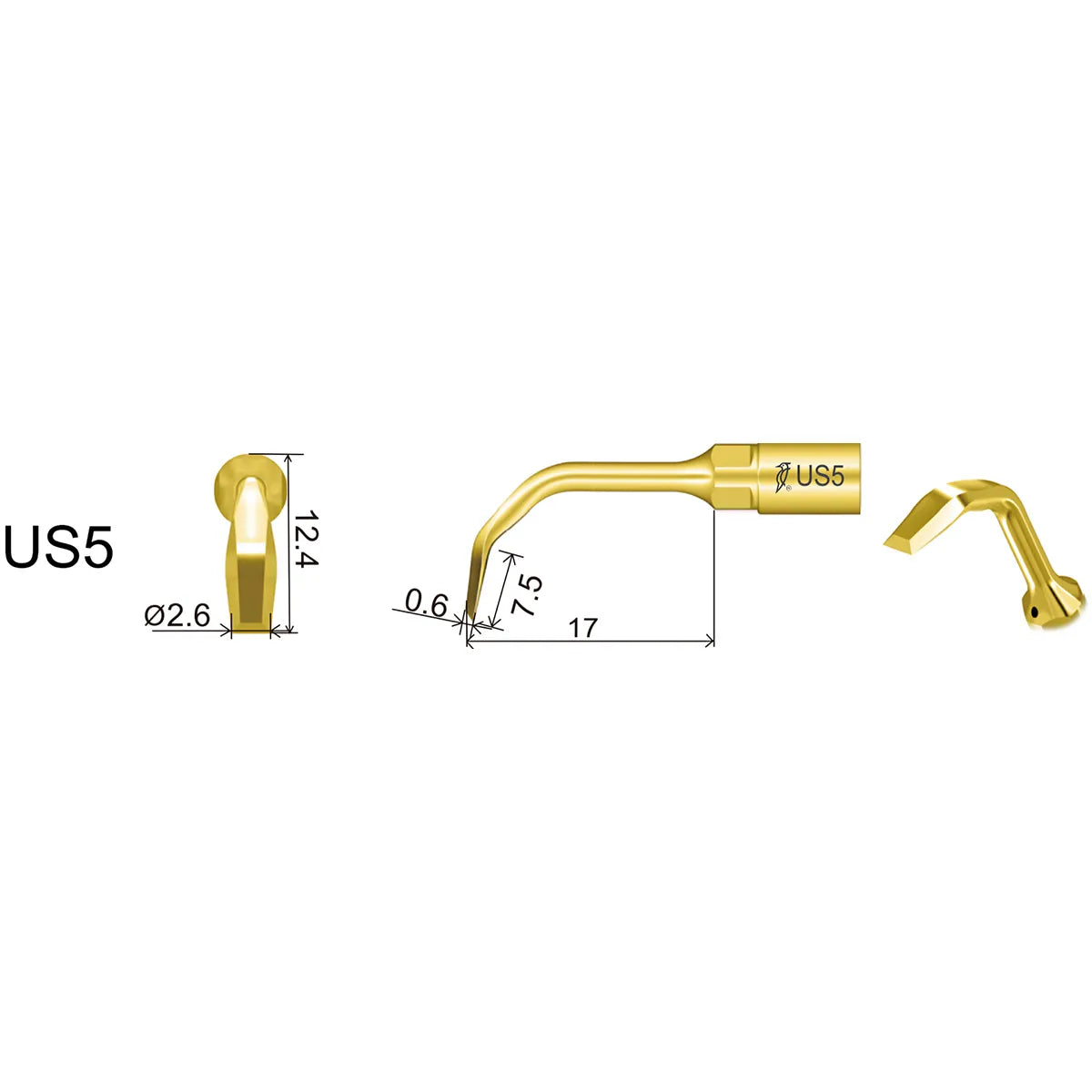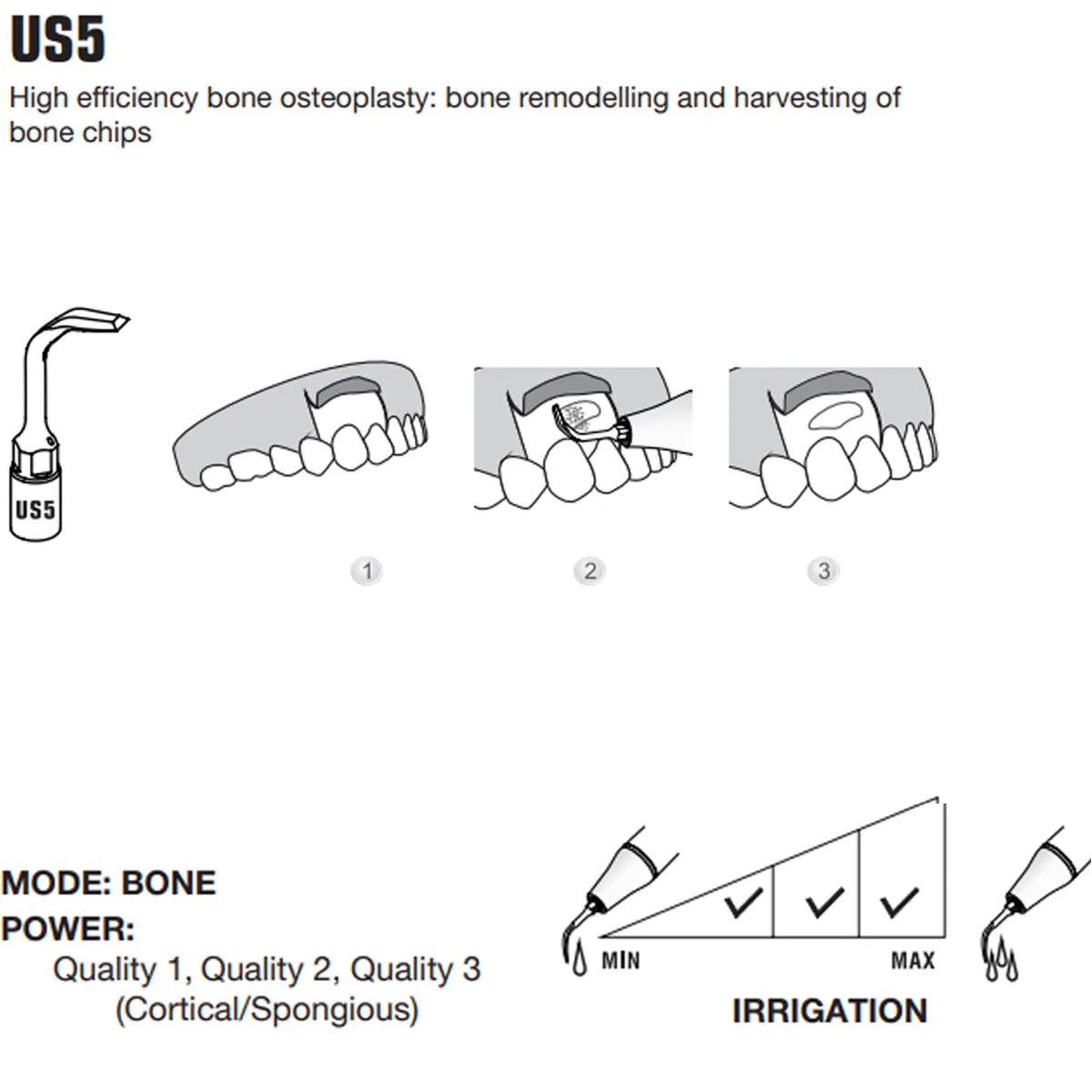Woodpecker Spare Parts
Woodpecker Piezo Bone Surgery Tips
Woodpecker Piezo Bone Surgery Tips
Couldn't load pickup availability
Woodpecker Piezo Bone Surgery Tips are advanced ultrasonic tools designed for precision and versatility in bone surgical procedures. Utilizing ultrasonic vibrations, these tips ensure accurate bone cutting while minimizing damage to surrounding soft tissues. They come in various shapes and sizes to suit different surgical needs, enhancing the precision and safety of Piezosurgery.
Applications:
- Bone Surgery: Ideal for orthopedic procedures including osteotomy, osteoplasty, and bone collection
- Sinus Lift: Effective for separating the sinus membrane
- Extraction: Assists in the extraction of embedded or impacted teeth
- Implant Preparation: Facilitates cutting of socket ridges, partial lateralization of alveolar nerves, and preparation for implants
- Periodontics: Useful for scaling, inflammatory tissue removal, and fractured root apex extraction
- Endodontics: Ideal for micro-smoothing of root surfaces
Tip Models:
- US2: High effectiveness for osteotomy in maxilla and mandible, including ridge expansion, corticotomy, and bone block grafting
- US3: Micrometric osteotomy (about 0.6 mm) for precision in thin anatomical structures, such as ridge expansion and interdental corticotomies
- US4: Universal osteoplasty for periodontal ostectomy, bone chip harvesting, and removal of inflammatory tissues
- US5: High-efficiency bone osteoplasty for bone remodeling and chip harvesting
- UC1: Designed for cutting off ankylosis and root fraction techniques
- US1: High effectiveness for large bone sections during maxillofacial surgery, including exodontics
- US1L: Left angle 90°, micro-saw 0.5 mm for horizontal osteotomy, suitable for all osteotomy techniques in maxilla and mandible, including bone block grafting
- US1R: Right angle 90°, micro-saw 0.5 mm for horizontal osteotomy, designed for osteotomy techniques in maxilla and mandible
- UC2: Similar to UC1, but for use in posterior regions
- UE1: Diamond-coated (40µm) for apical root debridement and efficient root planning, with a diamond-coated length of 3.3 mm
- UE2: Gentle cleaning with a slender smooth part length of 4.5 mm
- UE3: Diamond-coated (40µm) for apical root debridement and efficient root planning, with a diamond-coated length of 2.2 mm
- UE4: Gentle cleaning with a slender smooth part length of 3.5 mm
Features
Features
- Micrometric Cutting: Provides maximum surgical precision and intra-operative sensibility.
- Selective Cutting: Ensures safety for soft tissues by allowing for selective bone cutting.
- Water Cooling Cold Cutting: Maintains a low temperature at the cutting point to prevent thermal damage.
- Clear Vision for Surgery: The cooling water spray ensures a blood-free cutting area, enhancing visibility during procedures.
Description
Description
Specification
Specification
- Ultrasonic Technology: Utilizes ultrasonic vibrations for precise bone cutting and minimal soft tissue damage.
- Micrometric Precision:Provides high precision with micrometric cutting capabilities for accurate bone modification.
- Cooling System:Integrated water cooling to maintain a low temperature at the cutting point, preventing thermal damage.
- Clear Visibility:Cooling water spray ensures a blood-free and clear view of the surgical area.
- Versatility:Available in various shapes and sizes to accommodate different surgical procedures and bone types.
Tip Models
US2/US3/US4/US5/UC1/US1/US1L/US1R/UC2
- Modes: Bone
- Power: Quality 1, Quality 2, Quality 3 (Cortical/Spongious)
UE1/UE2/UE3/UE4:
- Modes: Root
- Power: Endo
Packaging
Packaging
- Pack of 1
Direction to use
Direction to use
Preparation:
- Securely attach the tip to a compatible ultrasonic scaler designed for endodontic procedures
Initial Settings:
- Set the ultrasonic scaler to the Endo mode and adjust to the maximum power permitted for optimal performance
Application Technique(US1,US1L & US1R):
- Insertion: Carefully position the US1 tip at the targeted bone site for osteotomy or exodontia
- Cutting Process: Use smooth, controlled movements to cut through the bone. The design of the tip allows for effective cutting of large bone sections
- Water Flow: Ensure adequate irrigation during the procedure to cool the tip and flush out debris, enhancing visibility
Application Technique(US2):
- Insertion: Carefully position the US2 tip at the targeted site in the maxilla or mandible for the osteotomy procedure
- Cutting Process: Use smooth, controlled movements to perform the osteotomy. The design of the tip allows for effective cutting and manipulation of bone during ridge expansion, corticotomy, and bone block grafting
- Water Flow: Ensure adequate irrigation during the procedure to cool the tip and flush out debris, maintaining visibility and safety
Application Technique(US3):
- Insertion: Carefully position the US3 tip at the targeted site requiring osteotomy, ensuring precise placement in the anatomically thin structure
- Cutting Process: Use gentle, controlled movements to perform the osteotomy. The design of the US3 tip allows for precise cutting in confined spaces and thin bone areas
- Water Flow: Ensure adequate irrigation during the procedure to cool the tip and flush out debris, maintaining visibility and safety
Application Technique(US4):
- Insertion: Carefully position the US4 tip at the targeted site for osteoplasty, ensuring precise placement for effective treatment
- Osteoplasty Process: Use smooth, controlled movements to perform the osteoplasty procedures, including ostectomy and tissue removal. The design of the tip allows for efficient cutting and manipulation of bone and soft tissue
- Water Flow: Ensure adequate irrigation during the procedure to cool the tip and flush out debris, maintaining visibility and safety
Application Technique(US5):
- Insertion: Carefully position the US5 tip at the targeted site for osteoplasty, ensuring precise placement for effective bone remodeling or harvesting
- Osteoplasty Process: Use smooth, controlled movements to perform the osteoplasty. The design of the tip allows for efficient cutting and harvesting of bone chips while minimizing trauma to surrounding tissues
- Water Flow: Ensure adequate irrigation during the procedure to cool the tip and flush out debris, maintaining visibility and safety
Application Technique(UC1):
- Insertion: Carefully position the UC1 tip at the targeted site where ankylosis or root fraction needs to be addressed
- Cutting Process: Use smooth, controlled movements to cut through the bone or root structure. The design of the UC1 tip allows for precise cutting, which is essential for effective treatment of ankylosis and root fractures
- Water Flow: Ensure adequate irrigation during the procedure to cool the tip and flush out debris, maintaining visibility and safety
Application Technique(UC2 & UC3):
- Insertion: Carefully position the UC2 & UC3 tip at the targeted site in the posterior region where ankylosis or root fraction needs to be addressed
- Cutting Process: Use smooth, controlled movements to cut through the bone or root structure. The left-curved design of the UC2 & right-curved design of the UC3 tip allows for effective access and precise cutting in the posterior areas
- Water Flow: Ensure adequate irrigation during the procedure to cool the tip and flush out debris, maintaining visibility and safety
Application Technique(UE1):
- Insertion: Carefully insert the UE1 tip into the root canal, ensuring it reaches the apical area where debridement is needed
- Debridement Process: Use gentle, controlled movements to perform root planning and debridement. The diamond coating enhances efficiency in removing debris and smoothing the canal walls
- Water Flow: Ensure adequate irrigation to cool the tip and flush out debris during the procedure
Application Technique(UE2):
- Insertion: Carefully insert the UE2 tip into the root canal, ensuring it reaches the desired area for cleaning
- Cleaning Process: Use gentle, controlled movements to clean the canal walls. The slender smooth part of the tip (4.5 mm) allows for effective cleaning without damaging the canal structure
- Water Flow: Ensure adequate irrigation during the procedure to cool the tip and flush out debris
Application Technique(UE3):
- Insertion: Carefully insert the UE3 tip into the root canal, ensuring it reaches the apical area where debridement is needed
- Debridement Process: Use gentle, controlled movements to perform root planning and debridement. The diamond coating enhances efficiency in removing debris and smoothing the canal walls
- Water Flow: Ensure adequate irrigation during the procedure to cool the tip and flush out debris, maintaining visibility and safety
Application Technique(UE4):
- nsertion: Carefully insert the UE4 tip into the root canal, ensuring it reaches the area requiring cleaning
- Cleaning Process: Use gentle, controlled movements to clean the canal walls. The slender design of the tip allows for effective cleaning without damaging the canal structure
- Water Flow: Ensure adequate irrigation during the procedure to cool the tip and flush out debris, maintaining visibility and safety
Safety:
- Maintain a steady hand and avoid excessive pressure to prevent damage to the tooth structure or surrounding tissues
Cleaning:
- After each use, rinse the tip to remove any debris and follow standard sterilization protocols
Post-Use Care:
- Clean and sterilize the tip according to standard procedures to ensure it is ready for future use.
Additional info
Additional info
- Country of Origin: PRC
- Manufacturer: Woodpecker
Warranty
Warranty
- Warranty is not applicable for this product.
Product Related Questions
Product Related Questions
Question: What are Woodpecker Piezo Bone Surgery Tips used for?
Answer: Woodpecker Piezo Bone Surgery Tips are used for a variety of surgical procedures, including bone surgery, sinus lifts, tooth extractions, implant preparation, periodontic treatments, and endodontics. They utilize ultrasonic vibrations to ensure precise cutting of bone and minimal damage to surrounding soft tissues.
Question: How do the tips ensure precision during surgery?
Answer: The tips provide micrometric precision through ultrasonic vibrations, allowing for accurate bone modification. Additionally, their cooling system maintains a low temperature at the cutting point, preventing thermal damage and ensuring clear visibility during procedures.
Question: What is the difference between the different power settings?
Answer: The power settings are categorized into different qualities (Quality 1, Quality 2, Quality 3) for the bone tips, which correspond to varying levels of cutting precision and effectiveness for different types of bone (cortical or spongious). The power setting helps tailor the cutting action to the specific requirements of the surgical procedure.
Question: Are the tips compatible with all piezoelectric devices?
Answer: The tips are designed to be compatible with Woodpecker piezoelectric devices. It is important to verify compatibility with your specific device model before use.
Question: What is the advantage of using diamond-coated tips?
Answer: Diamond-coated tips provide enhanced durability and effectiveness for root debridement and root planning. The diamond coating offers superior cutting efficiency and precisio.
Question: How do I choose the right tip for my procedure?Answer: Select the tip based on the specific surgical procedure and the type of tissue you are working with. For bone procedures, choose from the bone models (US, UC), and for root procedures, use the root models (UE). Consider the power settings to match the requirements of your procedure.
Share
